

How To Describe Clouds In Writing (100+ Examples & Words)
Clouds, ever-present in our skies, are more than just fluffy formations. They hold stories, emotions, and atmospheres within their wispy contours.
Here is how to describe clouds in writing:
Describe clouds in writing by focusing on their shape, color, texture, movement, altitude, density, size, associated sounds, interaction with light, weather implications, emotional tone, and symbolism. Use vivid words and phrases to bring these elements to life in your narrative.
In this guide, we’ll explore different types of clouds and key elements to bring them to life in your writing.
Types of Clouds

Table of Contents
Here are some of the most common types of clouds to describe in your writing:
- Cirrus : High-altitude, thin clouds, often wispy and light, suggesting fair weather but sometimes indicating a change.
- Cumulus : Fluffy, cotton-like clouds, generally white and often seen during sunny days, symbolizing cheer and tranquility.
- Stratus : Layer-like, flat clouds covering the sky like a blanket, often gray, associated with overcast days and light rain.
- Nimbostratus : Dark, thick clouds, covering the sky and bringing continuous rain or snow, a harbinger of gloom.
- Cumulonimbus : Towering, imposing clouds often associated with storms and extreme weather, symbolizing turmoil or tension.
Elements of Clouds to Describe in a Story
Now, let’s go over the key elements of clouds to describe in your stories.
You’ll want to consider describing the:
Clouds take on myriad shapes, each telling a different story. The shape of a cloud can reflect the mood of a scene or hint at changes in the weather.
- “The clouds morphed into dragons and castles, fueling my daydreams.”
- “Wispy clouds stretched across the sky, like paint strokes on a blue canvas.”
- “The clouds were cotton balls, dotting the expanse of blue.”
- “Dark, ominous clouds loomed overhead, foretelling a storm.”
- “The clouds twisted into spirals, as if dancing to an unseen melody.”
- “Ragged clouds frayed at the edges, torn by the wind’s unseen hands.”
- “Clouds shaped like anvils warned of the thunderstorm’s approach.”
- “Fluffy, shapeless clouds meandered lazily across the sky.”
- “The clouds formed a thick blanket, smothering the sun.”
- “Sharp-edged clouds cut through the sky, a contrast to the soft sunset.”
The color of clouds can set the tone of a scene, from serene blues to fiery oranges and reds, or somber grays.
- “The clouds blushed pink and orange at sunset, a canvas of warmth.”
- “Gray clouds, heavy with unshed rain, darkened the horizon.”
- “The clouds were a brilliant white, glowing in the midday sun.”
- “Black clouds swirled above, menacing and heavy with threat.”
- “Golden clouds crowned the morning sky, heralding a new day.”
- “The clouds turned a soft lavender in the twilight.”
- “Dark blue clouds hovered at dusk, heavy with mystery.”
- “Silver-lined clouds glimmered, promising hope amidst the storm.”
- “Pale yellow clouds drifted, touched by the dawn’s early light.”
- “The clouds were tinged with red, echoing the sunset’s last flames.”
Texture brings clouds to life, giving them character and depth, from smooth silkiness to rough, tumultuous appearances.
- “The clouds were smooth, like a layer of cream spread across the sky.”
- “Rough-edged clouds, ragged from the wind, scudded across the horizon.”
- “The clouds appeared soft, inviting one to imagine lounging on them.”
- “Turbulent clouds churned in the sky, a tumult of grays and whites.”
- “Delicate, fine-textured clouds filtered the sunlight, casting gentle shadows.”
- “Thick, woolly clouds blanketed the sky, a protective cover.”
- “Feather-like clouds brushed the blue canvas above in gentle strokes.”
- “Granular clouds, clumpy and uneven, hinted at the brewing storm.”
- “The clouds were sleek, streamlined by the high winds.”
- “Fluffy, airy clouds bounced along the sky, light and ephemeral.”
The movement of clouds adds dynamism to a scene, reflecting the passage of time or the whisper of the wind.
- “The clouds drifted lazily, unhurried by the gentle breeze.”
- “Swift-moving clouds raced across the sky, heralding a change.”
- “The clouds seemed to dance, swirling and twirling gracefully.”
- “Slow, meandering clouds mirrored my leisurely Sunday thoughts.”
- “The clouds surged forward, like an army on the move.”
- “Gentle clouds glided smoothly, a serene procession in the heavens.”
- “Rapidly changing clouds mirrored my tumultuous emotions.”
- “The clouds crept across the sky, stealthy and unnoticed.”
- “Energetic clouds zipped by, energizing the day.”
- “Stagnant clouds hung heavily, mirroring the oppressive mood.”
The height of clouds in the sky can influence the perspective and scale in a narrative, from lofty and remote to close and intimate.
- “High cirrus clouds, distant and ethereal, decorated the upper reaches of the sky.”
- “Mid-level clouds hovered, forming a canopy over the landscape.”
- “Low-hanging clouds brushed the treetops, a misty embrace.”
- “Elevated clouds towered above, guardians of the sky.”
- “The clouds sat high, untouchable and serene in their lofty domain.”
- “Clouds at eye level swept past, close enough to touch.”
- “Distant clouds, small from altitude, painted the horizon.”
- “The clouds rose high, stretching upwards, ambitious and proud.”
- “Low, dense clouds created a ceiling of gray above.”
- “Sky-high clouds seemed to touch the edge of space.”
The density of clouds can convey everything from lightness and clarity to oppression and heaviness.
- “The clouds were thin, barely veiling the sun.”
- “Dense clouds packed the sky, a solid gray expanse.”
- “Sparse clouds allowed ample sunlight, casting light shadows.”
- “Thick clouds blanketed the sky, a heavy lid over the earth.”
- “Light, scattered clouds dotted the blue, a delicate pattern.”
- “Solid clouds formed an unbroken ceiling, reflecting my somber mood.”
- “The clouds were airy, a gossamer layer in the sky.”
- “Opaque clouds blocked the sun completely, a foreboding barrier.”
- “Wispy clouds, sparse and delicate, adorned the sky.”
- “The clouds were so dense, they merged into a singular mass.”
The size of clouds can be used to reflect magnitude, from grand and imposing to small and insignificant.
- “Huge clouds dominated the sky, awe-inspiring in their magnitude.”
- “Tiny clouds speckled the sky, modest in their presence.”
- “Enormous clouds loomed overhead, almost overwhelming.”
- “Small, delicate clouds flitted across the vast blue.”
- “Gigantic clouds towered, a display of nature’s grandeur.”
- “Petite clouds, almost unnoticed, added a subtle charm.”
- “Massive clouds stretched across the horizon, a majestic display.”
- “Little clouds, like puffs of cotton, adorned the sky.”
- “The clouds were colossal, dwarfing the landscape below.”
- “Minute clouds, barely discernible, hinted at tranquility.”
While clouds themselves are silent, their presence can suggest sounds, enhancing the sensory experience in a story.
- “The clouds seemed to whisper secrets to the wind.”
- “Thunder rumbled from the belly of the dark clouds.”
- “The silent clouds moved soundlessly, a mute ballet above.”
- “Rain hissed as it fell from the dense, gray clouds.”
- “The clouds, thick and heavy, muffled the world’s sounds.”
- “Wind howled around the storm clouds, a symphony of fury.”
- “The clouds’ quietness accentuated the birds’ cheerful songs.”
- “Snowflakes whispered down from the soft, white clouds.”
- “The clouds passed in silence, observers to the earth’s noises.”
- “Lightning crackled from the charged, electric clouds.”
Interaction with Light
Clouds interact with light in various ways, creating a play of shadows and colors that can set a scene’s tone.
- “The clouds filtered the sunlight, softening the day’s harshness.”
- “Sunbeams pierced the clouds, spotlights on the ground below.”
- “Shadows shifted as clouds moved across the sun’s path.”
- “The clouds glowed with the sunset’s fiery colors.”
- “Moonlight silvered the edges of the night clouds.”
- “The clouds cast a dappled pattern, light dancing on the earth.”
- “Sunrise turned the clouds pink, a gentle awakening.”
- “The clouds dimmed the daylight, a soothing gray filter.”
- “Rainbow hues fringed the clouds, a celestial spectacle.”
- “The clouds, heavy with rain, darkened the afternoon light.”
Weather Association
Clouds are often harbingers of weather, their presence hinting at what’s to come.
- “Cumulonimbus clouds warned of the approaching storm.”
- “Gentle clouds promised a day of clear, calm weather.”
- “Gray, heavy clouds foreshadowed rain’s imminent arrival.”
- “Fast-moving clouds hinted at a changing weather pattern.”
- “The unbroken cloud cover suggested a day of steady rain.”
- “Sparse clouds indicated a continued stretch of sunny days.”
- “Dark clouds amassed, a prelude to thunderstorms.”
- “Wispy clouds, high in the sky, signaled fair weather.”
- “The rapidly darkening clouds hinted at a sudden downpour.”
- “The steady build-up of clouds foretold a snowstorm.”
Emotional Tone
Clouds often mirror or contrast the emotional tone of a scene, adding depth and resonance.
- “The cheerful, fluffy clouds matched my joyful mood.”
- “Gloomy clouds echoed my somber thoughts.”
- “The turbulent clouds mirrored my inner turmoil.”
- “Peaceful clouds calmed my restless spirit.”
- “Foreboding clouds intensified the sense of dread.”
- “The playful movement of the clouds lifted my spirits.”
- “Melancholic clouds resonated with my longing.”
- “The serene clouds provided a counterpoint to my anxiety.”
- “Threatening clouds amplified the tension in the air.”
- “The bright, clear sky and sparse clouds reflected my optimism.”
Clouds can symbolize various themes and motifs, adding layers of meaning to a narrative.
- “Clouds like white doves symbolized peace in the turmoil.”
- “The ever-changing clouds represented life’s constant flux.”
- “Dark clouds stood as symbols of impending doom.”
- “Light, ethereal clouds symbolized freedom and escape.”
- “The cloud’s shadow on the ground was a metaphor for grief.”
- “Bright, sunlit clouds symbolized hope amidst despair.”
- “The solitary cloud was a symbol of isolation.”
- “Clouds gathering at sunset symbolized an ending and a beginning.”
- “The storm cloud was a metaphor for internal conflict.”
- “Clouds parting to reveal blue sky symbolized clarity after confusion.”
50 Best Words for How to Describe Clouds in Writing
Here are some of the best words for how to describe clouds in writing:
- Feather-like
- Translucent
50 Best Phrases for Describing Clouds in Writing
Here are the best phrases for describing clouds in your stories:
- “Like tufts of cotton in a painter’s sky.”
- “Whispers of vapor in the azure expanse.”
- “Gentle giants marching across the horizon.”
- “Silhouettes of gray in a stormy ballet.”
- “Ivory peaks touching the heavens.”
- “Shadows of the skies, heavy with tales.”
- “Veils of mist cloaking the mountaintops.”
- “Golden edges kissed by the sunset.”
- “A tapestry of light and shadow.”
- “Flotilla of dreams in a sea of blue.”
- “Majestic towers heralding the storm.”
- “Gloomy blankets, dampening the earth’s spirits.”
- “Fleeting whispers of the passing breeze.”
- “Guardians of the twilight, tinged with pink.”
- “Wandering spirits of the upper world.”
- “Silent witnesses to the unfolding day.”
- “The sky’s mood, ever-changing and capricious.”
- “Sun’s canvas, painted in hues of gray.”
- “Messengers of the impending tempest.”
- “Symphony in white, conducted by the wind.”
- “Soft as the down of newborn birds.”
- “Charcoal smudges on the horizon’s edge.”
- “Melancholy giants, ponderous and slow.”
- “Misty shrouds, heralds of the morning light.”
- “Invisible ink slowly spreading across the sky.”
- “Gossamer threads woven by the dawn.”
- “A dance of light, air, and water.”
- “A quilt of white, stitched by the breeze.”
- “Spectral shapes in a dreamy expanse.”
- “The sky’s emotion, raw and unfiltered.”
- “Celestial wanderers on an endless journey.”
- “Ships of vapor, sailing the sky’s ocean.”
- “The sun’s soft touch on the morning clouds.”
- “Moody canvases of the tempest’s art.”
- “Fragile lacework against the blue infinity.”
- “Nature’s poetry, written in vapor and light.”
- “A parade of shapes, ever-evolving.”
- “The day’s first blush on sleepy clouds.”
- “Midnight sentinels, guarding the moon’s realm.”
- “Echoes of the sky’s deepest thoughts.”
- “Rosy fingers of dawn caressing the clouds.”
- “Monoliths of mist, standing tall and proud.”
- “A world aloft, free and untamed.”
- “The gentle sigh of the resting earth.”
- “A canvas for the sun’s farewell.”
- “The night’s veil, adorned with silver.”
- “A prelude to the celestial nocturne.”
- “Harbingers of change, aloft and unseen.”
- “A fleeting embrace of the departing sun.”
- “Whimsical shapes, a child’s imagination set free.”
3 Full Examples of How to Describe Clouds in Different Genres
One of the best ways to learn how to describe clouds in writing is to read real examples of how to talk about clouds in different kinds of stories.
So, here are three full examples.
Mystery Genre
The clouds hung low, like silent witnesses shrouded in gray.
Their ominous presence loomed over the old mansion, casting a foreboding pallor over the scene. Each cloud seemed to hold a secret, drifting lazily yet with a purpose, as if aware of the mysteries unfolding beneath them. The sun, a mere spectator, struggled to pierce through their dense congregation, creating a chiaroscuro of light and shadow that played across the neglected garden.
In the eerie silence, the clouds appeared as ghostly sentinels, guardians of the untold tales that lay hidden in the heart of the estate.
Fantasy Genre
Above the mystical lands of Eldoria, the clouds danced like ethereal spirits in the sky.
Their shapes shifted continuously, from majestic dragons to soaring phoenixes, each form telling a story of ancient magic and untold power. The clouds glowed with an inner light, hues of pink, gold, and lavender painting a tapestry of dreams against the canvas of the sky.
As the heroes journeyed through enchanted forests and over mystical mountains, the clouds followed, whispering secrets of the old gods and the mysteries of the stars. In this realm, the clouds were not mere vapors, but living, breathing entities, woven into the very fabric of Eldoria’s magic.
Romance Genre
The clouds above mirrored the soft, tender feelings blossoming between them. Each cloud was a fluffy testament to the gentle, burgeoning love. As they walked hand in hand along the beach, the sunset cast the clouds in a romantic palette of pinks, oranges, and purples, each hue melting into the next like their intertwining hearts.
The clouds, in their serene beauty, seemed to celebrate the couple’s newfound love, drifting peacefully in the sky, embodying the tranquility and depth of their emotions.
Under this celestial tapestry, their kisses tasted of promise, the clouds bearing silent witness to their deep, abiding connection.
Here is a good video about how to describe clouds in writing:
Final Thoughts: How to Describe Clouds in Writing
Exploring the diverse and dynamic nature of clouds can add depth and beauty to your writing.
For more creative insights, continue exploring our website’s articles.
Read This Next:
- How To Describe Night In Writing (100 Best Words + Examples)
- How To Describe Stars in Writing (100+ Words and Examples)
- How to Describe Mountains in Writing (21 Tips & Examples)
- How to Describe a Sunset in Writing: 100 Best Words & Phrases
NASA.org – Clouds

Writing Nestling

How To Describe Clouds In Writing (10 Important Tips)
Embarking on the journey of describing clouds in writing is akin to stepping into a celestial realm where language becomes the brush and the sky transforms into an ever-shifting canvas of wonders.
In this exploration, words transcend mere descriptors; they become the architects of atmospheric landscapes, the weavers of emotional tapestries, and the conduits for readers to traverse the boundless expanse above.
Whether crafting the whimsical contours of cumulus or unraveling the delicate threads of cirrus, the art of cloud description invites writers to navigate the nuanced language of the heavens.
This guide unfolds as a literary almanac, offering insights into cloud classifications, the symphony of descriptive language, the poetic interplay of metaphors, and the atmospheric nuances that breathe life into narratives.
As we delve into the ethereal dance of clouds, let the words become the wind beneath our literary wings, soaring through the vast realms of imagination where the sky is not just a backdrop but a storyteller in its own right.
Table of Contents
How To Describe Clouds In Writing
Observation.
Begin by carefully observing the clouds. Take note of their shape, size, and color. Pay attention to any distinct features, such as edges, formations, or patterns.
Classification
Classify the clouds into one of the main cloud types: cirrus, cumulus, stratus, or a combination of these. Identify if they are high, medium, or low-level clouds.
Describe the texture of the clouds . Are they fluffy and puffy, smooth and wispy, or thick and layered? Use adjectives that evoke the visual and tactile qualities of the cloud formations.
Observe the movement of the clouds. Are they drifting lazily, rapidly changing shape, or maintaining a steady form? Note any patterns or changes in their motion.
Color and Lighting
Comment on the color of the clouds. Are they reflecting the warm hues of sunrise or sunset? Consider how the lighting affects their appearance and contributes to the overall atmosphere.
Weather Associations
Connect the cloud observations to weather conditions. For example, dark, thick clouds may suggest an impending storm, while scattered, light clouds could indicate fair weather.
Emotional Tone
Convey the emotional tone or mood inspired by the clouds. Do they create a sense of tranquility, foreboding, or awe? Use descriptive language to capture the feelings they evoke.
Spatial Relationships
Describe how the clouds interact with the sky and landscape. Are they clustered together, covering the entire sky, or scattered in isolation? Consider their relationship to the horizon and other elements in the environment.
Size and Scale
Mention the size and scale of the clouds. Are they towering cumulonimbus clouds, or are they small, wispy cirrus clouds? Provide a sense of perspective to help readers visualize the scene.
Seasonal Context
Consider any seasonal aspects that might influence the appearance of the clouds. For instance, certain cloud types may be more common during specific seasons.
By following these steps , you can create a detailed and vivid description of clouds in writing, allowing readers to visualize the sky and experience the atmosphere you’re conveying.
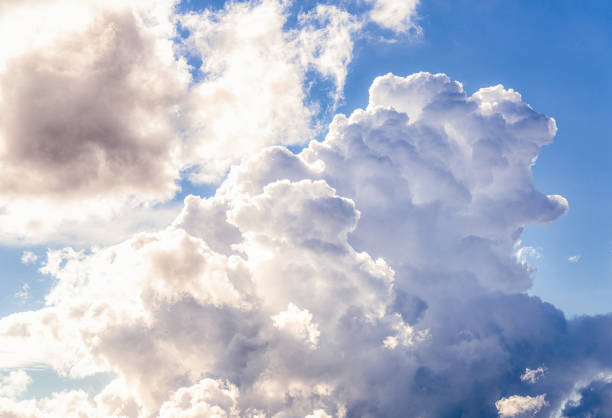
Understanding Cloud Types
Unlocking the secrets of the sky, understanding cloud types is akin to deciphering nature’s celestial poetry.
Each cloud type, be it the ethereal wisps of cirrus, the towering majesty of cumulus, or the soft, veiled embrace of stratus, unfurls a unique narrative against the canvas of the heavens.
Cirrus clouds dance like feathery apparitions, teasing the imagination with their delicate threads. Cumulus clouds, the sculptors of dreams, shape-shift across the sky, casting shadows of wonder on the landscapes below.
Meanwhile, stratus clouds weave a quilt of mystery, cloaking the sky in a gentle embrace. Delving into the world of cloud types is like reading the sky’s autobiography, a journey where every cloud whispers its tale, leaving an indelible mark on the azure tapestry above.
Introduction to basic cloud classifications (cirrus, cumulus, stratus)
Embarking on a celestial journey begins with an introduction to the enchanting trio of cloud classifications: cirrus, cumulus, and stratus.
Cirrus clouds, delicate and wispy, paint the high-altitude canvas with feathery strokes, a dance of ice crystals suspended in the celestial ballet.
Cumulus clouds, the whimsical architects of the sky, manifest as fluffy, cotton-like formations, evolving and morphing as they traverse the azure expanse.
On the other hand, stratus clouds stretch across the heavens like a seamless quilt, casting a soft, diffused light upon the earth below.
These classifications serve as the foundation for decoding the language of the sky, revealing a captivating narrative written in the ever-changing formations that grace our celestial sphere.
Brief description of each type and their distinctive features
Cirrus clouds, the high-flying poets of the sky, are wispy and delicate, composed of ice crystals that catch the sunlight in a radiant display.
Cumulus clouds, the playful sculptors, take on the appearance of fluffy cotton puffs, billowing and evolving with a whimsical charm.
Their towering presence often signals fair weather, inviting the gaze of those who revel in their ever-shifting shapes. Stratus clouds, the tranquil veils of the atmosphere, form in smooth, expansive layers, creating a soft, diffuse light that blankets the sky.
These distinctive features not only characterize each cloud type but also provide keen observers with a visual lexicon for deciphering the moods and stories written across the celestial canvas.
Importance of identifying cloud types for accurate and evocative descriptions
The significance of identifying cloud types extends beyond meteorological fascination; it is the key to unlocking the poetic resonance of the heavens.
Recognizing whether the sky is adorned with cirrus, cumulus, or stratus clouds allows writers to infuse their descriptions with precision and nuance.
Cirrus clouds, with their delicate tendrils, may evoke a sense of transience and ethereality, ideal for portraying fleeting moments.
Cumulus clouds, with their voluminous forms, can mirror the ebullient spirit of a scene or the whimsical nature of a character .
Stratus clouds, with their soft, layered presence, might set the backdrop for contemplative or mysterious atmospheres. In the hands of a wordsmith, the identification of cloud types becomes a literary compass, guiding the narrative tone and enhancing the reader’s immersive experience in the rich tapestry of the written sky.

Utilizing Descriptive Language
In the alchemy of storytelling, descriptive language becomes the artisan’s palette, and the writer, a conjurer of worlds. It’s not merely about the clouds; it’s about weaving a tapestry of sensations that dance upon the reader’s senses.
Picture adjectives as prismatic brushes, painting the sky with hues unseen and adverbs as nimble choreographers, orchestrating the ballet of clouds.
Through this linguistic kaleidoscope, writers breathe life into the atmosphere, transforming mere cumulus into celestial daydreams and stratus into the soft sighs of the sky.
Descriptive language isn’t just a tool; it’s the enchantment that turns words into incantations, allowing readers to taste the crispness of cirrus, feel the buoyancy of cumulus, and be cradled in the gentle embrace of stratus.
It’s the secret sauce that elevates prose to poetry, inviting readers to not just read, but to voyage through a canvas of words that paints the sky anew.
Exploring the power of adjectives and adverbs in cloud descriptions
In the realm of cloud descriptions, adjectives and adverbs are the celestial architects, meticulously sculpting the language of the sky.
Adjectives, those linguistic brushstrokes, breathe life into the clouds, transforming them from mere formations to living, breathing entities.
Whether it’s the diaphanous tendrils of cirrus or the voluminous billows of cumulus, adjectives shape the texture, color, and personality of each cloud type. Adverbs, on the other hand, are the choreographers of movement, dictating the pace and rhythm of the atmospheric ballet.
They propel clouds across the canvas of the sky with a languid grace or a frenetic energy, eliciting emotions and weaving a narrative within the azure expanse.
Together, adjectives and adverbs harmonize to create a symphony of imagery, allowing writers to evoke not just the visual beauty of the clouds but also the intangible emotions that dance in the firmament above.
Creating sensory experiences through descriptive language
Immersing readers in the ethereal world of clouds demands more than visual artistry; it necessitates the orchestration of a multisensory symphony through descriptive language.
Words become the conduits through which the reader can not only see but also touch the clouds, feel the caress of a gentle breeze playing with cirrus wisps, or sense the looming shadow of cumulus giants overhead.
Descriptive language transcends the visual, inviting readers to inhale the crisp, clean air of high-altitude cirrus or taste the cool, refreshing whispers that accompany stratus veils.
The resonance of descriptive language extends beyond the tangible, resonating with the emotional chord that binds the reader to the celestial panorama.
Through the harmonious blend of sight, touch, smell, and emotion, writers transmute words into a sensory tapestry, inviting readers to not just witness the clouds but to immerse themselves in the atmospheric experience.
Imaginative Metaphors and Similes
In the vast vault of the sky, imaginative metaphors and similes act as the cosmic weavers, threading the ethereal tapestry of clouds with the warp and weft of the extraordinary.
Cirrus clouds become celestial haikus, delicate as a poet’s sigh, while cumulus clusters resemble the cotton candy dreams of a slumbering sky giant. Stratus, the atmospheric quilt, unfurls like a cozy embrace, draping the heavens in a blanket of mystery.
Metaphors and similes breathe life into the clouds, transforming them from mere meteorological phenomena into mythical entities, each with a story whispered in the ancient language of the cosmos.
Through these linguistic alchemists, writers become celestial storytellers, beckoning readers to see not just clouds, but portals to a realm where imagination takes flight on the wings of metaphors and similes.
Environmental Context
In the ever-changing theater of the skies, the clouds aren’t mere actors but the atmospheric maestros, choreographing their celestial dance against the backdrop of environmental nuances.
Like the brushstrokes of a cosmic painter, the interplay of weather and time of day sets the stage for the clouds’ performance. Sunsets become the grand finales, where cumulus clouds don their most vibrant hues, transforming the horizon into a masterpiece of fiery oranges and pinks.
Weather patterns become the unseen puppeteers, manipulating the clouds into swirling crescendos of stormy drama or serene tableaus of cloud-studded calm.
Environmental context, the silent director behind the scenes, lends an immersive richness to the narrative, turning the sky into a dynamic canvas where clouds are both actors and props in the grand production of nature’s spectacle.
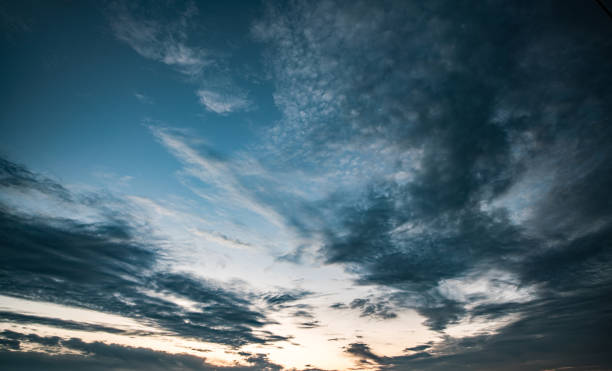
Recognizing the impact of weather and time of day on cloud appearances
In the celestial theater, where clouds take center stage, recognizing the profound impact of weather and the ever-shifting dance of time is akin to deciphering nature’s lyrical composition.
As the sun ascends, casting its golden glow across the sky, cumulus clouds emerge as the sunlit protagonists, their fluffy contours painted in hues of warmth and optimism.
At twilight, cirrus clouds unfurl delicate tendrils that catch the last rays of daylight, weaving a tapestry of subtle radiance against the dusky canvas.
Yet, as the atmosphere weaves its symphony, weather becomes the conductor, influencing the narrative. Stormy tempests cast ominous shadows, transforming the clouds into brooding protagonists, thundering with a dramatic intensity.
Recognizing this interplay of elements allows writers to craft not just descriptions, but atmospheric stories that mirror the moods and melodies of the celestial sphere. Weather and time become the nuanced brushstrokes that color the canvas of the sky, inviting readers to witness the dynamic performance of clouds in the theater of time.
Symbolism and Mood
In the vast expanse of the sky, clouds transcend their meteorological roles to become the ethereal symbols of nature’s emotive language.
Each cloud type, like a celestial hieroglyph, carries symbolic weight, influencing the mood of the atmospheric narrative. Cirrus clouds, wispy and elusive, may symbolize the fleeting nature of moments, leaving a trail of poetic ambiguity in their wake.
Cumulus clouds, with their playful billows, mirror the buoyant spirit of optimism, casting a whimsical charm upon the heavens.
On the contrary, stratus clouds, enveloping the sky like a comforting shroud, may signify the quiet introspection of a moment or the veiled mystery of hidden emotions.
In this celestial lexicon, writers become skyward poets, leveraging cloud symbolism to evoke emotions and weave the ever-shifting moods of nature into the tapestry of their narratives.
The sky, then, becomes a canvas of symbols, where clouds are not just atmospheric phenomena but vessels of emotion and meaning, painting the heavens with the hues of the human experience.
Exploring the symbolic significance of clouds in literature
In the vast expanse of literary landscapes, clouds emerge as ethereal symbols, weaving a tapestry of metaphors and meanings that transcend their meteorological existence.
These celestial wanderers often serve as potent allegories, embodying the ephemerality of life, the transient beauty of moments, and the ever-changing nature of human emotions. Cirrus clouds may be imbued with the spirit of fleeting dreams, their wispy tendrils reflecting the delicate threads of aspirations that drift through the human experience.
Cumulus clouds, with their billowing forms, may stand as metaphors for the weighty dreams and aspirations that hover on the horizon.
Meanwhile, stratus clouds may cloak narratives in mystery, symbolizing the veiled secrets or hidden layers within the human psyche.
Whether as omens, mirrors, or silent witnesses, clouds in literature become poetic vessels, carrying the collective imagination of authors and readers alike into the boundless realms of symbolism and significance.
Understanding how cloud descriptions can contribute to the overall mood
In the literary realm, cloud descriptions are not mere atmospheric annotations; they are nuanced brushstrokes that paint the emotional canvas of a narrative.
The choice of adjectives, the cadence of metaphors, and the rhythm of similes in cloud depictions all become instruments in orchestrating the overarching mood of a story.
A sky adorned with the delicate lace of cirrus clouds might cast a melancholic spell, evoking a sense of wistful longing. Cumulus clouds, on the other hand, with their voluminous and playful demeanor, can infuse scenes with a whimsical and carefree spirit.
The overarching mood of a story can be subtly guided by the atmospheric cues written into the clouds, whether they mirror the turbulence of a storm or the serene calm of a cloudless day.
Thus, cloud descriptions become atmospheric maestros, conducting the emotional symphony of literature and inviting readers to not only visualize but also feel the mood as it unfurls across the celestial stage.
Crafting a Narrative with Cloud Descriptions
In the artistry of storytelling, clouds emerge not merely as celestial set pieces but as dynamic characters in the grand narrative of the sky.
Each cloud, whether it be the poetic whispers of cirrus, the bold declarations of cumulus, or the enigmatic veils of stratus, holds the potential to shape the mood and plot of a story.
Like characters with distinct personalities, clouds can foreshadow impending drama, mirror the emotional states of protagonists, or provide a canvas for the unfolding saga.
Crafting a narrative with cloud descriptions is akin to choreographing a celestial ballet, where the ebb and flow of cloud formations become the dance steps, leading readers through the atmospheric chapters of a literary masterpiece.
The sky, with its ever-shifting cloud protagonists, becomes a living manuscript, waiting for writers to decipher its tales and transcribe the drama written in the language of the heavens.
Editing and Refining
In the alchemical process of transforming words into a literary elixir, editing and refining become the sorcerer’s wand, wielding precision and polish to elevate prose from the mundane to the magical.
Like a skilled artisan sculpting a masterpiece, the editor chisels away the extraneous, leaving behind only the essence of storytelling gold.
It’s a dance of refinement, where every word is a carefully chosen step , and each sentence a choreographed movement in the ballet of narrative finesse.
Through the crucible of editing, the rough gems of initial drafts are transformed into glistening jewels, their facets catching the light of readerly admiration.
It’s the moment when a writer dons the hat of both creator and curator, sculpting not just a story but an experience—an immersive journey that invites readers to traverse the finely manicured landscapes of a meticulously edited literary terrain.
Exercises and Prompts
In the gymnasium of creativity, exercises and prompts are the dynamic personal trainers urging writers to flex their imaginative muscles and break a sweat on the page.
These prompts are not just scribbles on a notepad; they are the heart-pounding, mind-bending calisthenics that transform aspiring writers into literary athletes. Picture a prompt as a well-spun compass, guiding pens through uncharted territories of expression and unearthing hidden treasures of narrative potential.
Exercises become the artistic boot camp, sculpting prose with the precision of a wordsmith’s dumbbell curls. They are the jumping jacks of creativity, shaking loose the cobwebs of writer’s block and inviting the mind to somersault through new realms of possibility.
With each prompt and exercise, writers embark on a literary fitness journey, building stamina, agility, and the enduring power of storytelling resilience.
In this literary dojo, every exercise is a chance to spar with words, and every prompt is a call to the creative battlefield, where victory lies in the mastery of one’s own narrative prowess.
Frequently Asked Questions (FAQ) about How To Describe Clouds In Writing
How can i make my cloud descriptions more vivid and engaging in writing.
Enrich your descriptions by employing a diverse range of adjectives and adverbs, capturing not only the visual aspects but also the textures, movements, and emotions associated with different cloud types.
What role do metaphors and similes play in describing clouds?
Metaphors and similes act as literary catalysts, transforming clouds from mere meteorological phenomena into powerful symbols, enhancing the depth and meaning of your descriptions.
How can I incorporate environmental context into my cloud descriptions?
Consider the influence of weather conditions and the time of day, as they significantly impact the appearance and mood of clouds. Integrate these elements to create a more immersive and contextually rich narrative.
Why is it important to understand cloud classifications when describing them in writing?
Cloud classifications provide a foundation for accurate and nuanced descriptions. Recognizing cirrus, cumulus, and stratus clouds allows you to tailor your language to their distinctive features, enhancing the authenticity of your writing.
What’s the significance of symbolism and mood in cloud descriptions?
Clouds can be potent symbols, reflecting emotions and contributing to the overall mood of a narrative. Understanding their symbolic potential enables writers to evoke specific atmospheres and emotions in their work.
How can I refine and edit my cloud descriptions for maximum impact?
Approach editing as a meticulous sculptor, honing your descriptions for precision and resonance. Seek feedback, polish your language, and ensure that each word contributes to the atmospheric beauty you aim to convey.
Are there specific exercises or prompts to improve my ability to describe clouds in writing?
Engage in exercises that challenge you to experiment with different styles and tones. Use prompts that encourage exploration of various cloud types, atmospheric scenarios, and emotional contexts to enhance your descriptive skills.
How can cloud descriptions contribute to the narrative and storytelling process?
Clouds can play dynamic roles in storytelling, serving as atmospheric characters that mirror emotions, foreshadow events, or set the mood. Crafting a narrative with cloud descriptions involves integrating them seamlessly into the broader tapestry of your story.
In the realm of describing clouds in writing , we embark on a literary odyssey where words become the brushes painting the ever-shifting masterpiece of the sky.
This journey takes us through the nuances of cloud classifications, the poetic potential of descriptive language, and the transformative power of metaphors and symbolism.
From understanding the impact of environmental context to crafting narratives that dance with the atmospheric ballet, the art of describing clouds transcends the meteorological into a symphony of storytelling.
As writers, we are the architects of celestial landscapes, sculptors of emotion, and choreographers of the skies. With every carefully chosen word, we invite readers to not just witness the clouds but to soar alongside them, traversing the vast expanse where imagination and reality intertwine.
The guidebook may close, but the canvas of the heavens remains open, waiting for each writer to continue weaving their own atmospheric tales, crafting clouds into characters, and letting the sky tell stories of wonder, beauty, and infinite possibility.
Related Posts:
- How Much Is Sky Writing? (Ultimate Guide)
- How To Describe Stars In Writing (10 Important Tips)
- How To Describe Moon In Writing (10 Best Tips & Words)
- How to Describe a Magical Forest (10 Effective Tips)
- How To Describe Night In Writing (10 Best Ways)
- How To Describe A Sunset In Writing (Words, Phrases…
Similar Posts

How To Overcome Writer’s Block (20 Tricks That Really Work)
Embarking on the quest to overcome writer’s block is a journey through the labyrinth of creativity, a path where the elusive muse seems to retreat behind the shadows of self-doubt and inspiration dwindles like a distant star. Writer’s block, the arch-nemesis of every wordsmith, can strike with an uncanny ability to silence the most eloquent…

What Is A Website Maintenance Plan? (Complete Guide 2024)
A Website Maintenance Plan serves as the strategic blueprint for the ongoing health, evolution, and success of a digital presence. In the fast-paced and ever-changing landscape of the internet, a static website is akin to a neglected garden that may wither over time. A well-crafted maintenance plan is the horticulturist’s guide, outlining the meticulous care…

What Is Freelance Writing? (Definition,07 Types)
Freelance writing is the dynamic intersection of passion, creativity, and entrepreneurship, where individuals wield the power of words to craft compelling narratives, inform, entertain, and inspire. In its essence, freelance writing represents the embodiment of freedom and autonomy, offering writers the flexibility to pursue their craft on their own terms, unfettered by the constraints of…

What Is Reflective Writing? (07 Best Tips, Types & Examples)
Reflective writing stands as a beacon of introspection in the realm of personal expression and academic discourse. It is a multifaceted genre that invites individuals to delve into the depths of their thoughts, feelings, and experiences, and to articulate their insights with clarity and authenticity. At its core, reflective writing is a process of self-examination…

How Do Websites Make Money With Ads? (12 Best Ways)
In the bustling digital landscape, the question of how websites make money with ads unveils a fascinating tapestry of strategies, innovations, and symbiotic relationships. As the heartbeat of the online ecosystem, websites navigate the intricate dance between user experience and revenue generation. From the bold strokes of display ads to the nimble precision of programmatic…
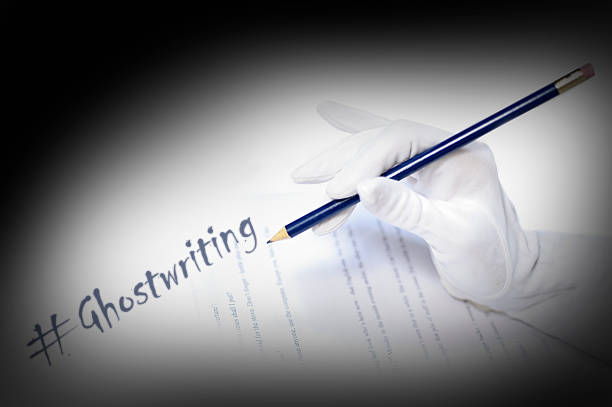
Do Authors Use Ghost Writers? (Explained with 05 Reasons)
In the intricate tapestry of literary creation, the question of whether authors employ ghostwriters weaves a narrative that transcends the traditional understanding of solitary authorship. The notion of an individual crafting every word of a novel or memoir is challenged by the clandestine collaboration between authors and the often invisible artisans known as ghostwriters. This…

Painting the Sky: Clouds Description Creative Writing
My name is Debbie, and I am passionate about developing a love for the written word and planting a seed that will grow into a powerful voice that can inspire many.
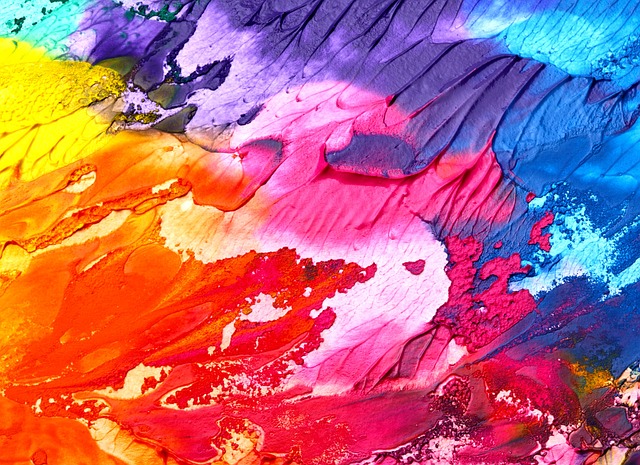
Different Types of Clouds and their Characteristics
The art of describing clouds in creative writing, how to capture the beauty of clouds through language, writing techniques to bring clouds to life on paper, using metaphors and similes to depict clouds in writing, tips for creating vivid descriptions of clouds in creative writing, the importance of observing clouds for writers, exploring the emotions and mood created by clouds in writing, frequently asked questions, wrapping up.
Clouds are fascinating natural phenomena that not only add beauty to the sky but also provide valuable insights into weather patterns. There are several distinct types of clouds, each with its own unique characteristics and formation process. Let’s explore some of the most common types and delve into their fascinating features.
Cumulus clouds: These are the fluffy, cotton-like clouds that often resemble big puffs of cotton candy in the sky. They are usually bright white in color and form at lower altitudes. Cumulus clouds are typically fair-weather clouds, indicating stable atmospheric conditions. However, when they grow vertically and darken, they transform into cumulonimbus clouds, bringing thunderstorms or heavy rain.
Cirrus clouds: Cirrus clouds are thin, wispy, and often appear high above the ground. They are composed of ice crystals and have a feather-like appearance. These high-altitude clouds are usually an indicator of fair weather, but their presence can also signal an approaching front. Cirrus clouds can indicate changes in atmospheric pressure and are sometimes referred to as “mare’s tails” due to their delicate and elongated shape.
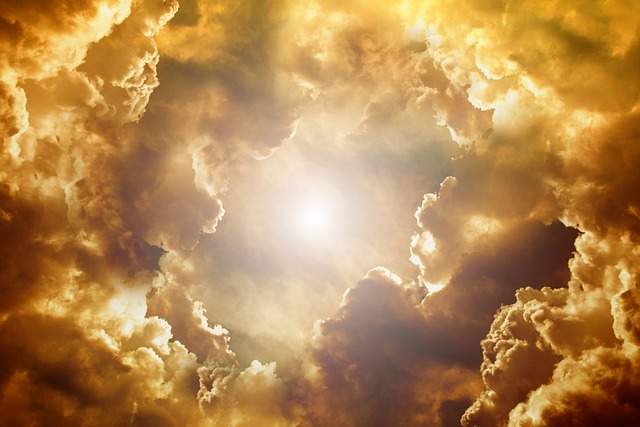
Clouds are nature’s ever-changing canvas, casting their ephemeral spell across the sky. To master the art of describing clouds in your creative writing, one must delve into the limitless possibilities they offer. These ethereal formations can enhance the mood, setting, and atmosphere of your writing, creating a vivid tapestry of emotions and imagery in the reader’s mind.
When describing clouds, consider employing sensory language that brings the reader into the scene. Use bold metaphors and similes to paint a captivating picture. Are the clouds fluffy as cotton candy or dense like an approaching storm? Do they drift lazily across the cerulean sky or race like wild horses? Explore the mesmerizing palette of colors: are they heavenly white, imbued with gold at sunset, or intense shades of gray, foretelling an imminent downpour?
- Describe the shape: cumulus, stratus, or nimbus? Are they wispy, billowy, or towering?
- Highlight the movement: are they dancing across the heavens or brooding with menace?
- Capture their interaction with sunlight: do they sparkle, shimmer, or cast a comforting shadow?
To truly breathe life into your cloud descriptions, incorporate the emotional impact they have on your characters and story. Perhaps the sight of ominous storm clouds mirrors the protagonist’s looming sense of dread. Alternatively, a serene, cotton candy sky might reflect the idyllic atmosphere of a romantic scene. Remember, the art of describing clouds lies not only in their physical attributes but also in their ability to become an integral part of your narrative, evoking emotions and resonating with your readers.
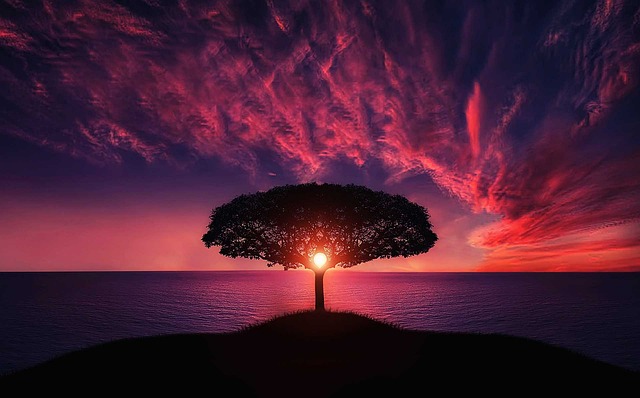
Describing the splendor of clouds can be a challenging task, but with the right use of language, their ethereal allure can be conveyed to perfection. Whether you are a poet, writer, or simply someone who wishes to appreciate the marvel of nature, here are some tips on capturing the captivating beauty of clouds:
1. Embrace vivid imagery: Paint a picture with words by employing rich and vibrant descriptions. Visualize the clouds as colossal cotton candy tufts stretching across the cerulean canvas of the sky. Capture their ever-changing forms, from wispy cirrus clouds that resemble delicate brushstrokes to majestic cumulonimbus clouds that tower like ancient monuments.
2. Engage the senses: Transport your readers into the world of clouds by appealing to their senses. Describe the softness of the cloud’s touch, as if reaching out and skimming fingertips across pillows of condensed moisture. Invoke the smell of rain before a storm, the subtle scent of ozone mingling with the earthy aroma of wet soil. Allow readers to hear the lullaby of raindrops as they gently patter against rooftops, carrying with them the promise of life and renewal.

When it comes to capturing the essence of clouds on paper, there are a myriad of writing techniques that can evoke their beauty and ethereal nature. By employing these techniques, you can bring your cloud descriptions to life, allowing readers to feel the softness, movement, and grandeur of the celestial formations. Here are some tried and tested methods to help you master the art of writing about clouds:
- Use vivid and descriptive language: Instead of settling for basic adjectives like white or fluffy, dive deeper into the details. Imagine how the clouds appear from different angles and at different times of the day, then use colorful words like billowing, wispy, or cotton candy-like to paint a more vibrant picture.
- Create emotional connections: Rather than solely focusing on physical descriptions, explore the emotions that clouds evoke. Are they a source of comfort, mystery, or serenity? By infusing your descriptions with the emotions they elicit, readers can better immerse themselves in the scene you are conveying.
- Play with figurative language: One effective way to bring clouds to life on paper is through the use of metaphors and similes. Compare the clouds to objects or phenomena that share similar characteristics. Perhaps they resemble a blanket of marshmallows, a flock of sheep grazing across the sky, or even the gentle strokes of an artist’s brush on a canvas.
By implementing these writing techniques, your cloud descriptions will take flight, transporting readers to a world where they can almost reach out and touch the delicate wisps of moisture dancing across the sky. Remember, the key lies in using vivid language, engaging emotions, and employing imaginative comparisons that transform simple clouds into extraordinary works of art on the pages of your writing.

Clouds, those ethereal entities that adorn our skies, have long captivated the imagination of writers. Symbolic of a myriad of emotions and atmospheres, they can add depth and atmosphere to any piece of writing. By utilizing metaphors and similes, writers can bring these celestial wonders to life, painting vivid pictures and creating emotional resonance.
Metaphorically, clouds can be compared to:
- Soft pillows that float across the sky, adding a touch of comfort and tranquility.
- Dream catchers capturing the sun’s rays as they dance on their cotton-like surface, filling the atmosphere with a warm and whimsical glow.
- Heralds of the heavens silently announcing the arrival of twilight with their muted shades of orange, pink, and gold, like angelic messengers descending to earth.
Similes, on the other hand, allow writers to make direct comparisons using “like” or “as.” Consider these examples:
- The clouds hung over the city as thick as a wool blanket , casting a shadow that enveloped the streets and buildings.
- The sky was filled with billowing clouds, like cotton candy stretched across the horizon , tempting the imagination to dive into their sugary depths.
- As the storm approached, the clouds gathered in the distance, as menacing as an army of gray giants ready to unleash their fury upon the unsuspecting earth.
With metaphors and similes at your disposal, embracing the poetic potential of clouds can elevate your writing to new heights. So, unleash your creativity and let your imagination soar like the clouds themselves!
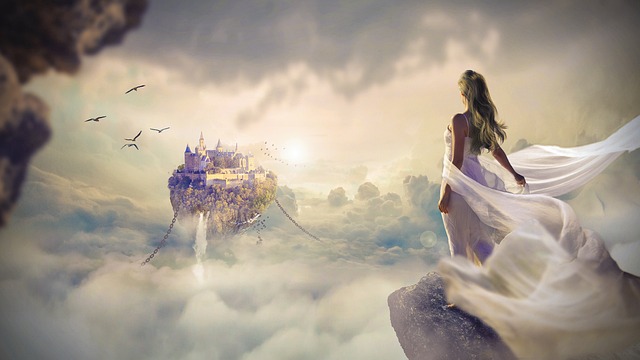
When it comes to describing clouds in your creative writing, no ordinary words will do justice to their enchanting beauty. To paint a vivid picture in your reader’s mind, consider these helpful tips that will unlock the magic of these celestial wonders.
- Adjectives with flair: Don’t settle for basic descriptions like “fluffy” or “white.” Dig deeper and visualize the texture and colors of clouds by using expressive adjectives like billowing, iridescent, or ethereal. By choosing words that evoke emotion, you can transport your readers into a dreamscape of swirling vapor.
- Metaphorical magic: Compare clouds to familiar objects or sensations to make them come alive in your writing. For instance, you could describe fluffy cumulus clouds as marshmallow mountains or liken the smoky wisps of cirrus clouds to delicate strands of silver thread dancing across the sky. By employing metaphors, the clouds will take on a new dimension, igniting your readers’ imagination.
- Sensory sensations: Engage your reader’s senses by describing not just how clouds look, but also how they feel, smell, or even taste. Incorporate sensory details like the cool touch of a cotton candy cloud or the sweet scent of rain lingering in the air. By appealing to the senses, your descriptions will transcend mere words, immersing your readers in a multisensory experience.
With these tips at your fingertips, you can weave enchanting descriptions of clouds in your writing that will transport your readers to the boundless realms of sky and imagination. Let your words paint a mesmerizing canvas, and watch as the clouds come to life in the minds of your audience.
Clouds, oh those mesmerizing formations that decorate the sky! As writers, we often find inspiration in the world around us, and clouds have a way of sparking our imagination like no other. Observing clouds not only allows us to enjoy the beauty of nature but also serves as a valuable tool to enhance our storytelling capabilities. Let’s explore the importance of incorporating cloud-watching into our writing routine:
- Visualization: Clouds awaken our inner child, inviting us to engage in imaginative play. By observing their ever-changing shapes, sizes, and colors, we can improve our ability to visualize scenes and characters in our writing. Just as clouds transform from fluffy cotton candy to menacing storm formations, our stories can come alive with vivid descriptions that captivate readers.
- Mood and Atmosphere: Much like the weather, clouds have the power to set the mood and create atmosphere in our narratives. From the puffy cotton balls dotting a clear summer sky to the ominous dark clouds foreshadowing an impending storm, every cloud formation carries its own emotional weight. By studying clouds, we can gain insights into how to craft the perfect setting and ambiance to enhance the impact of our storytelling.
Clouds have a way of evoking a kaleidoscope of emotions and mood in writing, casting a spell of enchantment over the reader. These celestial formations possess a charm that captures the imagination and adds depth to the narrative. Here are some of the emotions and moods that clouds can create in writing:
- Wonder: As we gaze upon a cluster of fluffy white clouds floating in a clear blue sky, a sense of awe and wonder washes over us. In writing, clouds can ignite the same feeling, making the reader marvel at their beauty and mystery.
- Serenity: The gentle sight of wispy clouds gracefully drifting across the sky can instill a sense of peace and tranquility. Describing the calmness and serenity that clouds bring can create a soothing atmosphere in the written piece, bringing solace to the reader.
- Melancholy: On gloomy days, dark clouds loom overhead, casting a somber shadow on the surroundings. In writing, these cloudy days can evoke feelings of sadness and nostalgia, setting the mood for reflective and introspective narratives.
- Imagination: Clouds, with their ever-changing shapes and forms, provide an endless playground for the imagination. Describing the whimsical figures that clouds resemble can transport the reader to magical worlds and expand the horizons of possibility.
Clouds possess the remarkable ability to evoke a wide range of emotions and create a specific mood in writing. Their ethereal beauty and elusive nature make them a captivating subject that can elevate any piece of literature, filling it with awe, tranquility, melancholy, and a touch of whimsical imagination.
Q: What is the significance of clouds in creative writing? A: Clouds play a crucial role in creative writing as they not only add visual depth to descriptions, but also evoke emotions, set the atmosphere, and symbolize various abstract concepts.
Q: How can clouds be described in a creative and captivating manner? A: Clouds can be described using vivid and dynamic language, focusing on their shape, texture, color, movement, and interaction with the surrounding environment. Metaphors, similes, and sensory details can bring clouds to life on the pages of a story or poem.
Q: What emotions can clouds evoke in writing? A: Depending on the context and description, clouds can evoke a wide range of emotions. For instance, fluffy white clouds against a clear blue sky might evoke feelings of peace, serenity, or innocence, while dark, brooding clouds can create a sense of foreboding, tension, or melancholy.
Q: How can clouds set the atmosphere of a scene? A: By describing the characteristics of clouds, such as their density, size, or movement, writers can set the atmosphere of a scene. For example, a scene with low-hanging, dense clouds might create a feeling of claustrophobia or intensity, while wispy, scattered clouds could evoke a light, carefree atmosphere.
Q: Do clouds symbolize anything in creative writing? A: Yes, clouds often serve as symbols of emotion, change, or transition. They can represent fleeting moments, shifting moods, or the unpredictability of life. In some cases, clouds can also symbolize dreams, aspirations, or the vastness of the human imagination.
Q: How can writers incorporate clouds into their narratives? A: Writers can incorporate clouds by integrating them into descriptions of landscapes, weather, or characters’ emotions. They can use clouds to create contrasts, emphasize certain themes or symbolize events or transitions in the story. By making clouds an integral part of the narrative, writers can enhance the overall richness and depth of their storytelling.
Q: Are there any notable examples of cloud descriptions in literature? A: Absolutely! Many renowned authors have skillfully woven cloud descriptions into their writing. For instance, in Charles Dickens’ “Great Expectations,” the protagonist often observes the clouds to reflect his changing emotions. Emily Dickinson, in her poetry, utilizes clouds to symbolize various aspects of life and transcendence. These examples demonstrate how clouds can be employed to add meaning and depth to literary works.
Q: Can cloud descriptions be applied to other forms of creative writing? A: Absolutely! While cloud descriptions are often associated with visual arts or poetry, they can be effectively used in any form of creative writing. Utilizing captivating cloud descriptions can enhance narratives, add atmosphere, and create an emotional connection with readers in genres ranging from fiction and non-fiction to essays and memoirs.
Q: Any tips for aspiring writers on using cloud descriptions effectively? A: When incorporating cloud descriptions, consider the overall tone and mood of your piece. Experiment with imagery, metaphors, or personification to breathe life into your clouds. Remember to strike a balance between providing detailed descriptions and allowing the reader’s imagination to fill in the gaps. Ultimately, cloud descriptions should serve a purpose, whether it’s enhancing the setting, developing characters, or supporting a theme. Don’t be afraid to be creative and have fun with it!
In conclusion, writing creatively about clouds allows us to explore the beauty and essence of the sky, unleashing our imagination and connection to nature.
Creative Mediums: What to Use to Write on Jenga Blocks
Rising Stars: Creative Writing Contests for High School Students
Leave a Comment Cancel reply
Save my name, email, and website in this browser for the next time I comment.
Reach out to us for sponsorship opportunities.
Welcome to Creative Writing Prompts
At Creative Writing Prompts, we believe in the power of words to shape worlds. Our platform is a sanctuary for aspiring writers, seasoned wordsmiths, and everyone. Here, storytelling finds its home, and your creative journey begins its captivating voyage.
© 2024 Creativewriting-prompts.com
The Enlightened Mindset
Exploring the World of Knowledge and Understanding
Welcome to the world's first fully AI generated website!
Exploring How to Describe Clouds in Creative Writing
By Happy Sharer
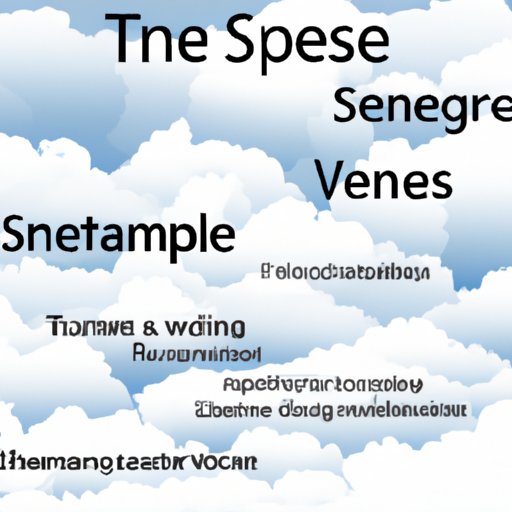
Introduction
Describing clouds in creative writing can be a difficult task. After all, they are not tangible objects with defined features or characteristics. However, with the right techniques, you can learn how to create vivid images of clouds in your writing. This article will provide tips on how to describe clouds in creative writing that will help you overcome this challenge.
Paint a Picture
When it comes to describing clouds, one of the best techniques is to treat them as if you were painting a landscape. Think about how the sky looks when there are clouds in it. What colors, shapes, and sizes do the clouds have? How do they move? Use words to create a vivid image of what the sky looks like.
Include Imagery
Another great way to describe clouds in creative writing is to use metaphors and similes. For example, you could say that the clouds are like “cotton candy in the sky” or “feathers floating on the wind.” These comparisons can make your description more vivid and engaging.
Personify Clouds
One of the most creative ways to describe clouds is to personify them. Imagine that they have feelings and personalities, and then use words to convey these ideas. You could say that the clouds look sad or angry, or that they are playful or mischievous. This technique can add a unique element to your writing.
Explore the Atmosphere
When describing clouds in creative writing, don’t forget to include the atmosphere surrounding them. What sounds, smells, and other elements are present? Are there birds flying by or the sound of thunder in the distance? Incorporating these details into your description can make it even more vivid and interesting.
Use All Five Senses
Another important tip for describing clouds in creative writing is to incorporate all five senses. What does the sky feel like when the clouds pass overhead? Can you smell the rain from the clouds? What does the sun look like when it shines through them? Including these details can make your description even more powerful and evocative.
Compare and Contrast
Finally, don’t forget to compare and contrast different types of clouds. Describe the differences between cumulus and cirrus clouds, or between high-level and low-level clouds. Highlighting the unique features of each type of cloud can make your description even more interesting and engaging.
Describing clouds in creative writing can be a challenging task. However, with the right techniques, you can create vivid images of clouds that will engage your readers. Paint a picture, use imagery, personify clouds, explore the atmosphere, incorporate all five senses, and compare and contrast different types of clouds. With these tips, you’ll be able to bring the sky to life in your writing.
(Note: Is this article not meeting your expectations? Do you have knowledge or insights to share? Unlock new opportunities and expand your reach by joining our authors team. Click Registration to join us and share your expertise with our readers.)
Hi, I'm Happy Sharer and I love sharing interesting and useful knowledge with others. I have a passion for learning and enjoy explaining complex concepts in a simple way.
Related Post
Unlocking creativity: a guide to making creative content for instagram, embracing the future: the revolutionary impact of digital health innovation, the comprehensive guide to leadership consulting: enhancing organizational performance and growth, leave a reply cancel reply.
Your email address will not be published. Required fields are marked *
Expert Guide: Removing Gel Nail Polish at Home Safely
Trading crypto in bull and bear markets: a comprehensive examination of the differences, making croatia travel arrangements, make their day extra special: celebrate with a customized cake.

BRYN DONOVAN
tell your stories, love your life
- Writing Inspiration
- Semi-Charmed Life
- Reading & Research
- Works In Progress.
Master List for Describing Weather
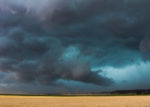
A lot of writers struggle with describing settings. I’ve written before about how to describe settings and why it matters , but a few people have told me they’d like me to do some of my master lists for writers to help them out!
I have a weird love for creating lists like this, so I’m happy to do it. “How to describe weather” seemed like a good place to start. This way, you won’t get stuck trying to figure out how to describe nice weather, or thinking up ways to describe rain. Hopefully, this will make your writing go faster.
I always include simple as well as more creative ways to describe or write about weather. Sometimes, the simple word is the one you want! I included dryness and humidity in a few of the categories because it felt weird for them to get their own.
As always, this is not a comprehensive list, and I might add to it. My list will probably make you think of other possibilities, too. Bookmark or pin it for future writing reference!
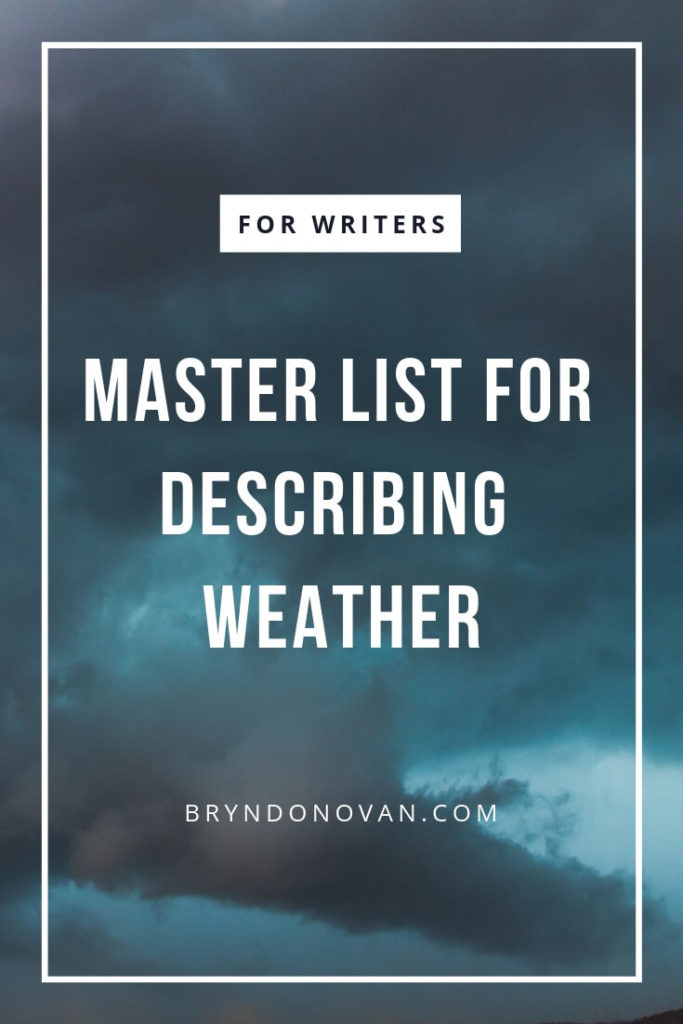
HOT WEATHER

blazing sunshine
glaring sun
baking in the sun
sun-drenched
scorching heat
extravagant heat
relentless sun
like a suana
dense tropical heat
radiating heat
blistering heat
oppressive heat
insufferable heat
suffocating heat
heat pressing down
searing sun
shimmering heat
like an oven
like a furnace
WARM / PLEASANT WEATHER

(“Pleasant” is a matter of opinion, of course.)
a beautiful day
a clear day
a temperate day
a golden day
a glorious day
heavenly weather
bright and sunny
a gorgeous spring day
a dazzling summer day
a brilliant autumn day
a vivid blue sky
a cloudless sky
fluffy white clouds
gentle sunshine
lazy sunshine
kind sunshine
filtered sunlight
dappled sunlight
welcome warmth
one of those rare, perfect days
the kind of day that made people forget to worry
the kind of day that lifted people’s moods
COOL WEATHER

refreshing air
stimulating cool air
invigorating cool air
bracing cool air
a nip in the air
a brisk day
a chilly day
weak sunshine
GRAY / OVERCAST WEATHER

(Most people don’t like gray days, so most of these descriptions are negative. I love them, so I had to add a few positive descriptions.)
colorless sky
a soft gray sky
a dove-gray sky
a gray day made for books and tea
steel-gray sky
granite sky
cement-gray sky
threatening clouds
foreboding clouds
COLD WEATHER

glacial air
bitter cold
brutal cold
bone-chilling cold
penetrating cold
devastating cold
numbing cold
punishing cold
dangerous cold
unforgiving cold
too cold to talk
so cold it burned one’s lungs
so cold it took one’s breath away

like a blast from a hair dryer
a gust of wind
insistent winds
heavy winds
strong winds
cutting wind
whipping winds
biting wind
wintry squall
violent gale
howling wind
shifting winds
restless wind
fresh breeze
soft breeze
balmy breeze
perfumed breeze
slight breeze
hint of a breeze
stirring breeze
wind rustling through the trees

fine drizzle
gray drizzle
pebbles of falling rain
spitting rain
stinging rain
steady rain
rain falling in torrents
cascades of rain
rain beating down
shower of rain
sheets of rain
hard-driving rain
pelting rain
lashing rain
slashing rain
THUNDER AND LIGHTNING

rumbling in the distance
a roll of distant thunder
crash of thunder
crackle of thunder
crack of thunder
clap of thunder
bang of thunder
booming thunder
rattled with thunder
earth-shaking thunder
tempestuous
a furious storm
flash of lightning
streaks of lightning
SNOW AND ICE
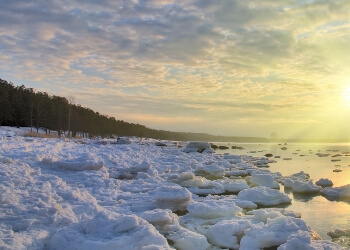
flurries of snow
dancing flakes
snowflakes floating down
snowflakes wafting down
swirling snow
falling thick and fast
big flakes falling like petals
blinding snowstorm
raging blizzard
sparkling expanses
blankets of white
caked with snow
boulders of snow
branches coated in ice
glittering ice
crystallized by frost
silvered with frost

clouds of mist
swirling mist
billowing fog
cloaked in mist
cocooned in fog
shrouded in fog
enveloped by fog
smothered by fog
made mysterious by fog
the fog rolled in
the fog was burning off
the fog was lifting
the fog was clearing
the fog was dissipating
I have many lists like this in my book Master Lists for Writers: Thesauruses, Plots, Character Traits, Names, and More . Check it out!
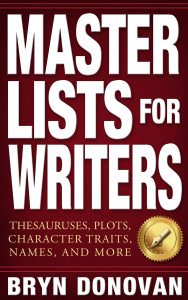
Do you describe weather conditions in your writing? Do you have a favorite example of a weather description? Let me know in the comments! Thanks for reading, and happy writing!
[spacer height=”20px”]
Related Posts
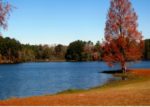
Share this:
21 thoughts on “ master list for describing weather ”.
In my current WIP, weather is a crucial element. Not only is the woman in the romance a professional photographer — of weather — but it is a weather phenomenon, namely a tornado, that brings them together. So the description of the sky and the weather is quite detailed in places (specially as the supercell storm roars down on them).
On another angle, the phrase “gloriously sunny” is one that despite having that horrible “ly” adverb (shudder) is so evocative of the type of weather and the POV character’s attitude (and possibly even the type of weather that has gone before), that it’s powerful. It says a huge amount with only two words.
Hi Chris! Oh, wow…that’s a lot more detailed than most of us ever get in writing about the weather. It sounds like a great premise!
I will need this list as I begin edits next month on my WIP. I currently live in Hawaii, but am writing a story at Christmas time in Vermont. 🙂 Thank you!
Aw, nice! That’s some very different weather from what you’re used to. 🙂
It really is! And traveling to the climate I need isn’t ideal right now. So, off to the freezer I go! 🙂
Wow! This is fantastic. Thanks. You ARE a master at this.
- Pingback: Master List for Describing Weather – Written By Bryn Donovan – Writer's Treasure Chest
This is comprehensive! It’s bookmarked for future use. Thanks!
Thanks, Steve, I’m glad you liked it!
Amazing list that goes beyond the words that I struggle with – especially describing the rain-painted setting of Snowdonia.
Love your lists. You don’t have one for beaches by any chance? Would this, including the weather be another book by any chance??
Hi, Nicole! It’s funny you should ask. 🙂 I am going to release a second, more expanded version of MASTER LISTS FOR WRITERS . It’s going to have several setting descriptions in there (including a whole list for beaches!), and the weather list will be in there, too! I’m hoping to get it done before November of this year, but we’ll see. Thanks for asking!
That’s awesome and look forward to it’s release.
- Pingback: ? Writing Links Round Up 7/1-7/5 – B. Shaun Smith
- Pingback: How to Write a Novel: Resources - MultiTalented Writers
- Pingback: ? Writing Links Round Up 8/19-8/23 – B. Shaun Smith
I am in Chinan. I happened to enter this web-link and want to learn more about writing, I wonder if there are any descriptive passages. I can only find some words and expressions…
That was really useful. Thank you!
- Pingback: The Power of Vision in Writing | Writers In The Storm
This list is fabulous. Thank you for sharing it. I will be consulting it when incorporating weather elements into writing my next picture book.
- Pingback: How’s The Weather In Your Story? – Writer's Treasure Chest
Leave a Reply Cancel reply
This site uses Akismet to reduce spam. Learn how your comment data is processed .
Discover more from BRYN DONOVAN
Subscribe now to keep reading and get access to the full archive.
Type your email…
Continue reading
- Skip to main content
- Skip to primary sidebar

Writing Tips Oasis - A website dedicated to helping writers to write and publish books.
22 Words to Describe the Movement of Clouds
By A.W. Naves

Do you need some words to describe the movement of clouds to help with your writing? Check out the 22 words we’ve listed below!
Moved aimlessly , carried by wind or currents.
“The clouds drifted lazily across the sky, creating beautiful patterns that hung in the air as if in a celestial gallery.”
“White fluffy clouds drifted over the mountaintops, casting shadows on the valleys below them.”
Moved in a smooth, continuous motion , often in a circular manner.
“The heavy fog and clouds rolled in from the sea, enveloping the coastline in a mysterious mist.”
“The storm clouds rolled across the plains, casting an eerie shadow over the land below.”
3. Gathered
Came together to form a larger mass or concentration.
“The dark clouds gathered above the mountain peaks, obscuring the view of them from the ground.”
“Thick black clouds gathered ominously, warning villagers that a torrential downpour was imminent.”
Changed position , often indicating a transition or alteration.
“The clouds shifted , revealing glimpses of the setting sun along the bay behind where the newlyweds dined.”
“The wind changed directions and the clouds shifted to move in a different path toward their next destination.”
5. Migrated
Moved from one place to another , often in a systematic manner.
“The clouds migrated across the sky, carried by the rapidly increasing winds that flowed across the bayou.”
“The monsoon clouds migrated towards the coastal region, bringing relief from the scorching heat.”
Moved in a circular path or orbit , often around a central point or object.
“The clouds seemed to make up a barrier as they circled the plane preparing for its descent.”
“The storm clouds circled menacingly, threatening to unleash their fury on the large fleet of boats sailing across the ocean toward the shore of their enemy’s village.”
Stacked or heaped on top of one another, often forming a mass or accumulation.
“The cumulus clouds piled up heavily, resembling fluffy cotton balls in the sky.”
“The storm clouds piled ominously on top of one another, casting a dark shadow over the landscape.”
Increased in size or volume, often with a sense of expansion.
“The storm clouds swelled , darkening the sky as they ushered in the approaching flood being predicted by news outlets across the island.”
“The fog fell, and the clouds swelled , engulfing the landscape and reducing visibility to nearly zero.”
Moved smoothly with grace and elegance.
“The marshmallow clouds glided across the sky without a care in the world.”
“The clouds glided past at great speed, dancing gracefully toward some unknown destination.”
10. Dissipated
Gradually dispersed , becoming less visible or prominent.
“The clouds dissipated as the sun rose higher in the sky, warming the earth.”
“The thunder clouds gradually dissipated as the rain subsided, giving way to the sunshine that pushed through their coverage.”
11. Huddled
Bunched up closely together as if in a huddle.
“The shadowy rain clouds huddled overhead, slowly blocking out the sunlight with their growing volume.”
“We watched as the worrisome clouds huddled overhead, choking out the daylight as the storm began to sweep through the tiny coastal town.”
12. Morphed
Underwent a gradual or significant change in form or appearance.
“The shape of the clouds morphed into various recognizable objects, sparking the imagination of the children playing in the park.”
“The cumulus clouds morphed into a towering thunderhead, signaling that a storm was on the horizon.”
13. Wandered
Moved aimlessly or without a fixed direction , often exploring or meandering.
“The clouds wandered across the vast expanse of the sky, carried by gentle breezes.”
“The careless clouds wandered across the night sky, obscuring the full moon that rose high above them.”
Moved away from each other, creating a separation or gap.
“The clouds parted , revealing a glimpse of the radiant sun shining through.”
“The swirling clouds parted to make way for the helicopter that descended from the sky.”
15. Hovered
Remained suspended or lingered in one place, often without any significant movement.
“The clouds hovered about the drone, preventing it from taking the aerial footage it had been sent up to capture.”
“The helicopter creating a whirlwind over the landing pad, but the clouds hovered above, unbothered by its blades.
16. Tumbled
Moved in an uncontrolled manner , often with a rolling or tumbling motion.
“The dark storm clouds tumbled across the sky, indicating an impending tempest.”
“Leaves gusted on the wind and mingled with the passing clouds as they tumbled past.”
17. Retreated
Moved back or withdrew , often in response to unfavorable conditions.
“The rain clouds gradually retreated , making way for a clear and sunny sky.”
“The army of storm clouds retreated , leaving behind a sense of relief and calmness.”
Moved gradually or cautiously along an edge or boundary.
“The clouds in the night sky edged along the tops of the mountains, obscuring their peaks.”
“Clouds edged their way across the sky with no particular urgency or destination in mind.”
Came into existence or took shape , often through a process of development or creation.
“The cumulonimbus clouds formed rapidly, heralding the arrival of a powerful thunderstorm.”
“The wisps of clouds formed intricate patterns, resembling works of art in the expansive sky.”
20. Appeared
Came into view or became visible, often suddenly or unexpectedly.
“The sinister-looking clouds appeared just before the wedding, threatening to ruin Sharon’s big day.”
“The full moon cast a soft, silvery glow across the party for most of the evening but then the clouds appeared and blocked its presence.”
21. Clustered
Grouped closely together in a concentrated or dense arrangement.
“The feathery white clouds clustered above the mountaintop, resembling a celestial congregation.”
“The storm clouds clustered threateningly, foreboding an imminent downpour.”
22. Materialized
Manifested in a tangible or physical form, often seemingly out of thin air.
“The ghostly clouds materialized out of nowhere causing a shiver to run down Sarah’s spine.”
“We were disappointed as dark clouds materialized over the boat, forcing us to abandon our fishing expedition.”
KathySteinemann.com: Free Resources for Writers and Poets
Word lists, cheat sheets, and sometimes irreverent reviews of writing rules. kathy steinemann is the author of the writer's lexicon series..

1000+ Ways to Describe Colors: A Word List for Writers

Why Is Color in Writing So Important?
Pablo Picasso said , “Colors, like features, follow the changes of the emotions.” Picasso was an artist who evoked emotion with colorful pigments. As a writer, you can do the same with colorful words.
Note the different pictures painted by the following two paragraphs.
Ned gazed at the calypso-orange horizon. A lapis-blue speck sparkled above it in the deepening violet of a new night sky — Planet Vorton, home.
Ned gaped at the corpse-grey horizon. A mold-blue speck festered above it in the deepening black of a smoggy night sky — Planet Vorton, home.
Same number of words, different colors, with complementing adjectives and verbs. One paragraph emanates optimism, the other gloom.
Compound Adjectives Sometimes Require Hyphens
According to The Chicago Manual of Style , if a compound adjective appears before a noun, it should be hyphenated.
Compare the following examples:
Tristan wore an eye-catching purple tie. Tristan’s purple tie was eye catching .
Wendi modeled a melon-pink dress. Wendi’s dress was melon pink .
Accent Colors With Adjectives
Here’s a list of more than one hundred adjectives from thousands you could choose to produce more vivid descriptions of the colors in your writing.
A to C accented, achromatic, ashen, ashy, atomic, blazing, bleached, bleak, blinding, blotchy, bold, brash, bright, brilliant, burnt, chromatic, classic, clean, cold, complementing, contrasting, cool, coordinating, creamy, crisp
D to G dark, dayglow, dazzling, deep, delicate, digital, dim, dirty, drab, dreary, dull, dusty, earthy, electric, energetic, eye-catching, faded, faint, festive, fiery, flashy, flattering, fluorescent, frosty, full-toned, gaudy, glistening, glittering, glossy, glowing
H to P harsh, hazy, hot, icy, illuminated, incandescent, intense, iridescent, knockout, lambent, light, loud, luminous, lusterless, lustrous, majestic, matte, medium, mellow, milky, monochromatic, muddy, murky, muted, natural, neon, neutral, opalescent, opaque, pale, pastel, patchy, pearly, perfect, picturesque, plain, primary, pure
R to S radiant, reflective, rich, royal, ruddy, rustic, satiny, saturated, shaded, sheer, shining, shiny, shocking, showy, smoky, soft, solid, somber, soothing, sooty, sparkling, stained, streaked, streaky, striking, strong, subdued, subtle, sunny, swirling
T to W tacky, tinged, tinted, tonal, toned, traditional, translucent, transparent, undiluted, uneven, uniform, vibrant, vivid, wan, warm, washed-out, waxen, wild
Enhance Multicolored Objects With Adjectives Such as These
B to L bicolor, blended, braided, cataclysmic-colored, checkered, compound, contrasting, crisscrossed, dappled, disparate, dotted, dusted, flecked, freckled, fused, intermixed, interwoven, jumbled, lined
K to P kaleidoscopic, many-hued, marbled, mingled, mixed, motley, mottled, multicolored, multihued, particolored, patterned, peppered, piebald, pied, polychromatic, prismatic, psychedelic
S to V salted, speckled, splotched, stippled, two-tone, tricolor, varied, variegated, veined
Props Provide More Opportunities to Add Color and Detail
A to D accent, bleach, brightness, brilliance, chroma, clarity, CMYK, coating, color wheel, colorant, coloration, cover, deposit, depth, diffusion, dimension, dispersion, dye
F to I film, finish, flicker, fluorescence, blare, glaze, gleam, glimmer, glint, glisten, glitter, glow, gradation, henna, highlight, hint, hue, incandescence, intensity, iridescence
L to O lacquer, layer, lightness, lowlight, luminosity, luster, monotone, nuance, opacity, opalescence
P to R paint, Pantone, patina, peroxide, pigment, pigmentation, polish, prism, purity, radiance, rainbow, RGB, residue, rinse
S sample, saturation, seam, shade, sheen, shimmer, shine, smidgeon, sparkle, spectrum, stain, stratum, streak, stripe, suggestion, surface, swatch
T to V tattoo, tester, tier, tincture, tinge, tint, tone, touch, trace, twinkle, undertone, varnish, vein, veneer
Perhaps These Verbs Will Provide Inspiration
Colors can blend, clash, or enhance. They might revitalize, fade, or overlap. Choose carefully to provide the nuance you need in your writing.
A to C accent, accentuate, appear, attract, balance, bathe, bespatter, blanch, blare, blaze, blench, bleach, blend, blotch, brighten, brush, burn, captivate, clash, color, combine, complement, conflict, contrast, coordinate, crayon
D to J darken, daub, decolorize, decorate, deepen, dot, draw, dye, embellish, emit, enhance, enliven, fade, flare, flash, flatter, fleck, glare, glaze, gleam, glimmer, glint, glisten, glow, harmonize, heighten, highlight, illuminate, infuse, intensify, jar
L to R light, lighten, match, meld, merge, mingle, mix, outline, overlap, paint, permeate, pervade, plaster, radiate, revitalize
S to W saturate, seal, shade, shine, sketch, smear, sparkle, splash, splatter, spray, spread, stain, suffuse, tinge, tint, varnish, wash
Invent Colors
Your ingenuity is the only limit with invented colors. Consider a few examples.
Yolanda sashayed toward me, hips swiveling in a seduction-red skirt that complemented her bad-baby-black lipstick.
Either Yolanda intends to ravish our narrator, or he hopes she’s a bad girl with seduction on her mind.
Bruise-blue eyes stared out through glasses crisscrossed with cracks. Matching lumps burgeoned from Marco’s chin and cheeks.
Readers will make the connection between bruise-blue and the lumps, imagining someone who has been beaten or injured.
Find color ideas by googling phrases such as “things that are green” or “things that look blue.”
And Now, a Kaleidoscope of Colors
Some of the following lists contain invented colors. Many are based on objects we encounter in our environment. You can use almost any noun to create an adjective that will resonate with readers.
For the next several years, Trump blond or Hillary blonde will produce instant mental images.
Science fiction might use deep-space black , quasar blue, or starburst yellow .
An environmentalist could choose colors such as oil-slick black, smog grey, or acid-rain yellow .
Choose or invent colors that intensify your writing.
You can use many of these words as is, or precede the color they represent to produce a compound adjective. Rather than anthracite , for example, you might prefer anthracite black .
Black anger black, anthracite, bat black, boot black, cat black, cave black, cavity black, charcoal, coal black, crow black, deep-space black, ebony, evil black, funeral black, grease black, ink, jade black, jet, leather black, licorice, metal black, midnight, mildew black, mold black, night black, obsidian, oil-slick black, onyx, pitch black, raven, sable, shadow black, shoe-polish black, silhouette black, smoky, sooty, spider black, tar black, tire black, tuxedo black, uber black, velvet black
Blond/Blonde Although blond can be used for either males or females, many writers prefer blond to describe males and blond e to describe females. Likewise with gender-identified pets and animals.
Blond was adopted into English from French, and the French language uses gender-specific descriptors.
Compound adjectives in the following list are spelled with the feminine form.
almond-crème blonde, amber, apple-cider blonde, apricot, ash blonde, banana-bread blonde, blanched, bleached, bombshell, bottle blonde, brassy, bronze, brown-sugar blonde, butter blonde, butternut, butterscotch, caramel, chamomile blonde, champagne, chardonnay blonde, corn blonde, diamond blonde, dirty blonde, dishwater blonde, electric blonde, flaxen, French-fry blonde, frosted blonde, gilded blonde, ginger, ginger-ale blonde, ginger spice, golden, goldenrod, Hillary blonde, honey blonde, honey-butter blonde, honeysuckle blonde, hot-toffee blonde, macadamia blonde, mushroom blonde, neon blonde, peroxide blonde, platinum, sand blonde, straw blonde, strawberry blonde, sunflower blonde, sun-kissed blonde, sunset blonde, tarnished-gold blonde, Trump blond/e, trumpet blonde, vanilla-malt blonde, vintage gold, wheat blonde
Blue admiral blue, Aegean blue, agate blue, Arctic blue, azure, baby blue, berry blue, blue-jay blue, blue-jeans blue, bluebell blue, blueberry blue, blueberry-juice blue, bluebird blue, blue-jay blue, brook blue, bruise blue, cadet blue, cerulean, china-blue, cobalt, cornflower blue, crystal blue, denim blue, electric blue, forget-me-not blue, galaxy blue, gunmetal blue, ice blue, indigo, ink blue, jellyfish blue, lagoon blue, lake blue, lapis blue, laser blue, lilac blue, lobelia blue, mold blue, moon blue, navy, ocean blue, quasar blue, river blue, robin-egg blue, sapphire blue, sky blue, star blue, steel-blue, swimming-pool blue, teal, toilet-water blue, toothpaste blue, ultramarine
Brown acorn brown, almond brown, amber, auburn, autumn brown, Bambi brown, beige, brandy brown, brick brown, bronze, brunet, buckeye brown, camel brown, caramel, carob brown, cedar brown, champagne brown, chestnut, chipmunk brown, chocolate brown, cinnamon, cider brown, clay brown, coffee brown, cognac brown, cookie brown, copper, cork brown, desert sand, drab brown, dun brown, ecru, espresso brown, fawn brown, football brown, freckle brown, ginger, gingerbread brown, golden brown, hazel, hickory brown, honey brown, infrabeige, kiwi brown, lion brown, loam brown, mahogany, maroon, merlot brown, mocha, mouse brown, mud brown, muddy brown, nut brown, oak brown, orange brown, peanut brown, pecan brown, pekoe brown, penny brown, pigskin brown, pretzel brown, rosewood, russet, rust, sandstone brown, seal brown, sepia, sienna, spice brown, syrup brown, taffy, tan, taupe, tawny brown, teddy-bear brown, topaz brown, tortilla brown, tourmaline brown, umber, walnut, wheat brown, whiskey brown, wood brown
Green apple green, army green, artichoke green, asparagus green, avocado green, barf green, basil green, blue green, bottle green, bright green, cabbage green, camouflage green, cat’s-eye green, celery green, chartreuse, clover green, crocodile green, crystal-marble green, cyan, electric green, elf green, emerald, fern green, frog green, grape green, grass green, hypergreen, jade, jasper green, jelly green, juniper, kale green, khaki green, kiwi green, leaf green, LED green, olive, leprechaun green, lettuce green, lime, lizard green, loden, mildew green, mint, moss green, neon green, ocean green, parsley green, pea green, pea-soup green, peacock green, pear green, Perrier-bottle green, pickle green, pine green, puke green, sage, sea green, seafoam green, seasick green, seaweed green, seedling green, shamrock green, snot green, spinach green, spring green, sprout green, spruce green, tea green, teal, toad green, velvet green, viridian, watermelon green, yellow green
Grey/Gray alien grey, aluminum grey, anchor grey, ash grey, battleship grey, bottle grey, boulder grey, carbon grey, cement grey, charcoal grey, cloud grey, coin grey, corpse grey, crater grey, death grey, dove grey, elephant grey, exhaust grey, fling grey, flint grey, fog grey, fossil grey, fungus grey, ginger grey, granite grey, graphite, gravel grey, gruel grey, gum grey, gunmetal grey, hippo grey, hoary grey, ice grey, iron grey, knife grey, lead grey, mercury grey, meteor grey, mummy grey, nail grey, nickel, otter grey, pebble grey, pepper grey, pewter, pigeon grey, porpoise grey, porridge grey, rat grey, salt-and-pepper, seal grey, shadow grey, shark grey, shovel grey, silver, slate, sleet grey, slug grey, slush grey, smog grey, smoke, steel grey, stone grey, storm grey, stormy grey, stormy-sea grey, sword grey, tabby grey, tank grey, tweed grey, wax grey, wolf grey
Orange apricot orange, burnt orange, butternut orange, calypso orange, candlelight orange, cantaloupe orange, caramelized orange, carrot orange, cayenne orange, cheddar orange, cheese-cracker orange, Chinese-lantern orange, cider orange, citrus orange, clementine orange, coral orange, crayon orange, curry orange, fire orange, flame orange, goldfish orange, mac-and-cheese orange, mango-tango orange, mandarin orange, marigold orange, marmalade orange, monarch orange, nacho orange, nasturtium orange, navel orange, papaya orange, peach orange, peach-butter orange, peach-sorbet orange, popsicle orange, pumpkin orange, safety-vest orange, salamander orange, salmon orange, sherbet orange, shrimp orange, starfish orange, sunset orange, sweet-potato orange, tangelo orange, tangerine orange, terra cotta, tiger orange, traffic orange, yam orange
Pink amaranth, azalea pink, baby pink, ballet-slipper pink, blush, bright pink, bubblegum pink, cantaloupe pink, carnation pink, cerise, champagne pink, cherry-rose pink, coral, cotton-candy pink, crepe pink, cupid pink, cyclamen pink, damask, flamingo pink, fuchsia, geranium pink, grapefruit pink, lemonade pink, magenta pink, mandarin pink, mango pink, melon pink, old-rose pink, oleander pink, parfait pink, pastel pink, peach, peach-blossom pink, peony pink, piggy pink, piglet pink, pomegranate pink, prom pink, punch pink, raspberry-smoothie pink, rose, rosewood pink, rouge pink, salmon pink, seashell pink, sherbet pink, shocking pink, strawberry pink, swine pink, taffy pink, watermelon pink, Zinfandel pink
Purple amethyst purple, amparo purple, boysenberry purple, burgundy purple, Byzantium purple, clover purple, concord purple, coneflower purple, cyclamen purple, eggplant purple, fig purple, gentian purple, gooseberry purple, grape purple, heather, heliotrope, hyacinth purple, indigo, iris purple, jam purple, kazoo purple, lavender, lilac, lollipop purple, lotus purple, magenta purple, mauve, mulberry purple, onion purple, opal purple, orchid purple, periwinkle purple, petunia purple, pillow purple, plum, posy purple, primrose purple, raisin purple, regalia purple, rhubarb purple, royal purple, sage-flower purple, sangria purple, sugar-plum purple, tanzanite purple, Tyrian purple, violet, wild-berry purple, wine purple, wisteria purple
Red apple red, auburn, beet red, berry red, blaze red, blood red, blush red, brick red, burgundy red, candy red, candy-apple red, candy-cane red, carrot red, cherry red, cherry-soda red, Christmas red, cinnamon-candy red, communist red, copper red, coral red, crab-apple red, cranberry red, crimson, currant red, fire red, fire-engine red, fire-hydrant red, flame red, flaming red, garnet red, ginger red, heart red, henna, holly-berry red, jam red, ketchup red, ladybug red, LED red, licorice red, lipstick red, lobster red, maple-leaf red, merlot red, mulberry red, neon red, pepper red, pomegranate red, poppy red, radish red, raspberry red, roan, rose, rouge, ruby, Russian red, rust, rusty, Santa-suit red, scarlet, sorrel, stoplight red, strawberry red, sunburn red, Titian, tomato red, tulip red, Valentine red, wanton red, watermelon red, wine red
White alabaster, angel white, ash white, blizzard white, bone white, bread-dough white, cake white, cameo white, chalk, chaste white, chiffon white, china white, clamshell white, cloud white, coconut white, cornstarch white, cream, crème, dumpling white, eggshell white, fizz white, foam white, fog white, frost white, gardenia white, ghost white, goose-down white, heron white, hospital white, KKK white, ivory, lace white, lather white, lily white, linen white, lotus white, milk white, mist white, moonstone white, noodle white, paper white, parchment white, pearl white, phantom white, picket white, platinum white, polar white, porcelain white, powder white, rice white, salt white, Samoyed white, sheet white, skeleton white, snowflake white, specter white, starch white, sugar white, talc white, vellum white, virgin white, wedding-veil white, winter white, won-ton white
Yellow acid-rain yellow, autumn yellow, banana yellow, bourbon yellow, bumblebee yellow, butter yellow, buttercup yellow, butterscotch yellow, cadmium, canary yellow, chick yellow, corn yellow, custard yellow, daffodil yellow, daisy yellow, dandelion yellow, Dijon yellow, duckling yellow, egg-yolk yellow, flaxen, ginger yellow, gold, goldenrod, grapefruit yellow, hardhat yellow, honey yellow, jaundice yellow, lemon, macaroni yellow, maize, mustard, omelet yellow, pencil yellow, pineapple yellow, plantain yellow, poppy yellow, rubber-ducky yellow, saffron, sawdust yellow, school-bus yellow, scrambled-egg yellow, starburst yellow, sticky-note yellow, straw yellow, sulfur yellow, sun yellow, sunflower yellow, sweetcorn yellow, tallow yellow, taxi yellow, turmeric yellow, wasp yellow, whisky yellow, yield-sign yellow
Are You Interested in More Word Lists and Writing Tips?
If you haven’t done so already, please subscribe to my blog . (The link will take you to the subscription widget at the top left of this post.)
I usually post two to five times monthly, and you can discontinue your subscription at any time.
Please don't be shy. Leave a reply. Cancel reply
Your email address will not be published. Required fields are marked *
Save my name, email, and website in this browser for the next time I comment.
Notify me of new posts by email.
8 thoughts on “ 1000+ Ways to Describe Colors: A Word List for Writers ”
I wanted to take a moment to express my heartfelt gratitude for this marvellous word list you have provided. Not only has it enriched my vocabulary, but it has also sparked new ideas and inspired me to explore different writing styles. Your resource has become an indispensable tool in my writing journey, and I will continue to cherish and utilise it in all my creative endeavours. 🙂
Thanks so much, Axelle, and good luck with those creative endeavours!
Oh my! These are dripping with creativity. Many thanks.
I’m glad you found them helpful, Kathy. Hey — nice name. 😉
Thanks for stopping by, and stay safe!
I found this while googling whether to hyphenate ash blonde. I am amazed at the wealth of material contained in this blog. Thank you.
Thanks for dropping by, Dwayne. Here’s more information about hyphenation of adjectives .
This is one of the chapters I love most in book 1 – wanted to say THANK YOU for the Master TOC and the .pdf download link.
Thanks, Felicia!
I’m planning a Writer’s Body Lexicon and then probably a third volume of the main Lexicon series. I had considered producing an omnibus, but I think it would have too many pages to make a print version practical. Unless I figure out a way to compact the spacing in some of the chapters. Hmm.
- Conjunctions
- Prepositions
Cloud Describing Words: Adjectives & Examples
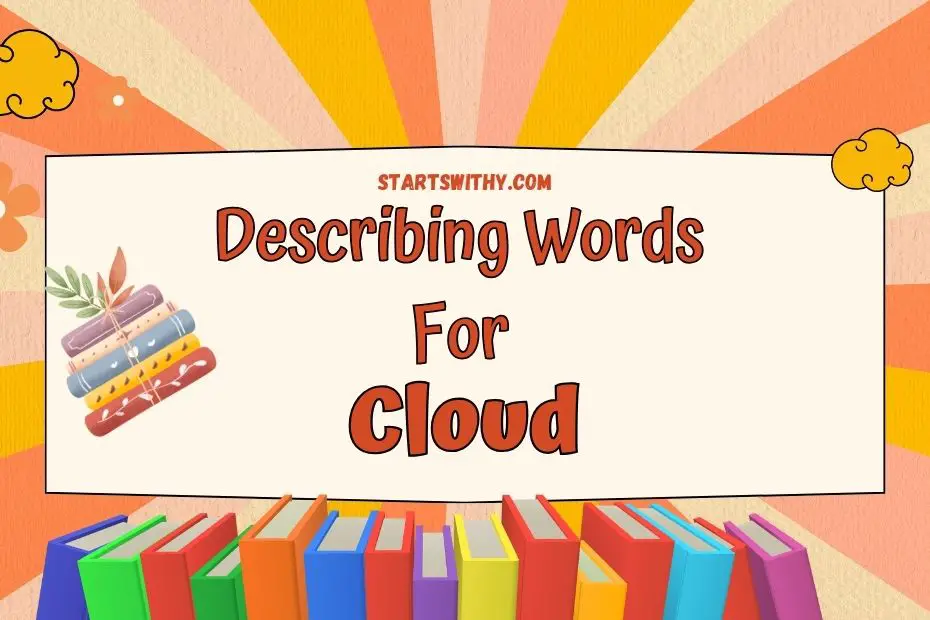
Clouds are a fascinating natural phenomenon that captivate our attention and spark our imagination. Whether it’s a fluffy cumulus floating lazily across the sky or a dark and brooding nimbostratus signaling an impending storm, clouds come in all shapes, sizes, and colors. In this article, I’ll be exploring a variety of adjectives that can be used to describe clouds, along with examples to help you visualize these descriptive words. So, if you’ve ever gazed up at the sky and wondered how to capture the essence of a cloud in words, you’ve come to the right place. Let’s dive into the world of adjectives for clouds and discover the beauty and diversity they possess.
When it comes to describing clouds, there is a rich tapestry of adjectives that can be used to paint a vivid picture in our minds. From the ethereal and delicate to the bold and dramatic, these words allow us to express the ever-changing nature of clouds. Whether you’re a poet looking for inspiration or simply someone who appreciates the beauty of nature, this article will provide you with a comprehensive list of adjectives to enhance your descriptions of clouds. So, get ready to explore the enchanting world of cloud adjectives and elevate your writing to new heights.
Table of Contents
How to Describe cloud? – Different Scenarios
When it comes to describing clouds, there are various scenarios to consider. Clouds can take on different shapes, sizes, and colors depending on the weather conditions and time of day. Let’s explore different scenarios and the adjectives that can be used to describe clouds in each one.
- Fluffy Clouds : On a sunny day, you might come across fluffy clouds that resemble cotton candy. These clouds are typically white and have a soft, delicate appearance. Some descriptive words for fluffy clouds include:
- Marshmallow-like
- Stormy Clouds : When a storm is brewing, the sky gets dark and ominous. The clouds become dense and can block out the sun. These stormy clouds evoke a sense of intensity and power. Adjectives that can be used to describe stormy clouds include:
- Sunset Clouds : As the sun starts to set, the sky often becomes a canvas of vibrant colors. Clouds on a sunset can take on hues of red, orange, pink, and purple, creating a breathtaking view. Some descriptive words for sunset clouds are:
- Rainclouds : When rain is imminent, the sky becomes blanketed with rainclouds. These clouds are often dark gray and heavy with moisture. Adjectives to describe rainclouds include:
- High Altitude Clouds : Above the ground, there are clouds that form at higher altitudes. These high altitude clouds can be wispy and have a feathery appearance. Adjectives to describe high altitude clouds include:
- Mare’s tail
- Feather-like
Describing Words for cloud in English
When it comes to describing clouds, there are various adjectives that can help us paint a vivid picture. These words can be especially useful for kindergarten and preschool teachers who are teaching young children about clouds and weather. In this section, I’ll provide you with a list of describing words for clouds, along with examples to help you enhance your teaching materials.
1. Fluffy Clouds
Fluffy clouds are those that appear to be light, soft, and puffy. They often resemble balls of cotton or cotton candy. Here are some adjectives you can use to describe fluffy clouds:
- Cottony : The clouds looked cottony and soft, floating gently across the sky.
- Pillowy : The sky was filled with pillowy clouds, creating a dreamlike atmosphere.
- Whispy : The whispy clouds seemed to dance through the air.
2. Stormy Clouds
Stormy clouds are typically dark and often indicate the possibility of rain, thunder, or lightning. Here are some adjectives to describe stormy clouds:
- Menacing : The sky was filled with menacing, dark clouds, hinting at an approaching storm.
- Brooding : The brooding clouds seemed to be holding their breath, ready to release their fury.
- Ominous : The ominous clouds cast an eerie shadow over the landscape.
3. Sunset Clouds
Sunset clouds add a touch of magic to the sky when the sun begins to set. These clouds often display vibrant colors or a serene glow. Here are some adjectives to describe sunset clouds:
- Radiant : The sky was painted with radiant clouds, glowing orange and pink.
- Gilded : The gilded clouds shimmered in the fading sunlight, casting a warm glow.
- Spectacular : The sky put on a spectacular show, with clouds ablaze in hues of purple and gold.
Remember, using descriptive words can help engage young learners and spark their imagination. By incorporating these adjectives into your teaching materials, you can make cloud observation more exciting and memorable for children.
Keep reading to discover more adjectives for rainclouds and high altitude clouds in the next sections.
Adjectives for cloud
Positive adjectives for cloud with 12 example sentences.
When it comes to describing clouds, there are many positive adjectives that can help bring their beauty and wonder to life. Here are twelve examples of positive adjectives you can use to describe different types of clouds:
- Fluffy : Fluffy clouds are light, soft, and give a sense of peacefulness.
- Puffy : Puffy clouds resemble large cotton balls, with rounded edges and a billowy appearance.
- Cottony : Cottony clouds have a texture similar to cotton, and convey a sense of comfort.
- Dreamy : Dreamy clouds are ethereal and create a sense of tranquility.
- Serene : Serene clouds have a calm and peaceful aura, inviting relaxation and contemplation.
- Majestic : Majestic clouds are grand and impressive, evoking a sense of awe and wonder.
- Billowy : Billowy clouds are voluminous, appearing as if they’re floating and swelling in the sky.
- Whimsical : Whimsical clouds have a playful and imaginative quality, often resembling whimsical shapes.
- Heavenly : Heavenly clouds exude a sense of purity and beauty, as if they belong to a celestial realm.
- Radiant : Radiant clouds are bright and luminous, casting a warm and vibrant glow.
- Magical : Magical clouds have an enchanting quality, as if they hold secrets and stories within their ethereal embrace.
- Blissful : Blissful clouds create a sense of joy and contentment, filling the sky with pure happiness.
Synonyms and Antonyms with Example Sentences
Synonyms for cloud.
When describing clouds, we can use a variety of synonyms to add depth and richness to our language. Here are some alternative words you can use to describe clouds and make your descriptions more captivating:
- Cumulus : These are fluffy clouds that resemble giant cotton balls in the sky. They often indicate fair weather.
- Nimbus : These are puffy clouds that are thick and dark, bringing rain or snow.
- Stratus : These are cottony clouds that form a blanket in the sky. They create a gray and overcast appearance.
- Cirrus : These are feathery clouds that are high up in the sky. They often indicate fair weather.
- Altocumulus : These are billowy clouds that appear in patches. They are usually white or gray and can bring thunderstorms.
- Cirrocumulus : These are whimsical clouds that have a wavy texture but are very high up in the sky. They often signal fair weather.
Using these synonyms will help paint a vibrant picture of the different types of clouds, making cloud observation more exciting and memorable for young children.
Antonyms for Cloud
To provide a well-rounded understanding of clouds, it’s also helpful to discuss antonyms or words that are the opposite of “cloud.” Here are a few antonyms you can use when teaching about clouds:
- Clear : This describes a sky without any clouds, where the blue sky is easily visible.
- Sunny : This indicates a sky filled with bright sunshine and no clouds.
- Bright : This describes a sky that is clear and filled with sunlight.
- Radiant : This conveys a sense of intense brightness and warmth in the sky.
By introducing these antonyms, you can help children understand the contrast between cloudy and clear skies, enhancing their knowledge of weather and the world around them.
Incorporating these synonyms and antonyms into your cloud descriptions will not only enrich your language but also stimulate children’s imagination and curiosity. So the next time you’re teaching about clouds, be sure to use these descriptive words and engage your students with the wonders of the sky.
Describing clouds with adjectives can truly enhance the experience of cloud observation, especially for young children. By using descriptive words, such as cumulus, nimbus, stratus, cirrus, altocumulus, and cirrocumulus, we can paint a vivid picture of the different types of clouds and their unique characteristics. These adjectives allow us to capture the essence of each cloud formation, making it more exciting and memorable.
Additionally, introducing antonyms like clear, sunny, bright, and radiant helps children understand the contrast between cloudy and clear skies. This not only enriches their vocabulary but also stimulates their imagination and curiosity about the wonders of the sky.
As teachers, incorporating these descriptive words into our lessons can create a more engaging and interactive learning environment. It encourages children to observe and appreciate the beauty of nature, fostering a deeper connection with the world around them.
So, let’s embrace the power of adjectives and inspire young minds to explore the ever-changing canvas of the sky. By doing so, we can ignite a lifelong love for learning and a sense of wonderment that will accompany them throughout their lives.
Related Posts


Describing Blood: Adjectives with Examples
Blood is a vital element of our existence, coursing through… Read More » Describing Blood: Adjectives with Examples

Adjectives for Age: Describing Words & Examples
As we navigate through life, one thing that remains constant… Read More » Adjectives for Age: Describing Words & Examples

Adjectives for Fight: Examples and Describing Words
When it comes to describing a fight, finding the right… Read More » Adjectives for Fight: Examples and Describing Words

Search for creative inspiration
19,890 quotes, descriptions and writing prompts, 4,964 themes
cloudy morning - quotes and descriptions to inspire creative writing
- cloud forest
- cloudy night
- early morning
- pink clouds
This morning, each sole upon the street, each soul riding upon the clouds, ever warm in that bright sunlight.
The cloudy morning brought the blacktop street to dappled hues that spoke of soulful blues.
The cloudy morning is shafts of light amide the blue-grey and the soft promise of sweet rain.
My dreams give way to wakeful wonderings as the cloudy morning ever bluer.
The cloudy morning brings a gentle diffuse light that soothes the eyes and gives space for my soulful musings.
On this morning the clouds diffuse the daylight to a soft gentle sweetness; even out in the street I could be cozy under my duvet in a strong summer light. They move much as the ocean, showing the blue amid the whitish dove-grey, a medley of silvers that ripple outwards to adorn the sky.
On this cloudy morning there are growing patches of blue, the sort of hue that is soft and bright at the same time. Though beneath the sheet of cloud is a grey that deepens to steel, the leading edge is a brilliant white, as if it is the pages of a new book ready for any curious eye. So, on this day that could bring rain or sunshine, I'm hoping for both, for the chance of a rainbow and to feel so much more because the day is blessed with clouds.
Clouds move in the morning sky, kissed into brilliant white by the sun. They move south toward the ocean, together yet independent. Gaps widen and close, one slides right under another and always they are changing shape.
The morning brings strings of white stratus to contrast against the blue sky. They drift lazily in the breeze without destination or purpose, as if every day for the clouds is a Sunday afternoon.
Light grew steadily outside until the curtains glowed just the same as stained glass. Eddie stuck his head behind the fabric to survey what the day might bring. The road was slick with water, though the puddles remained quite still, no hint of rain still falling. Above the clouds were still grey but without the denseness of yesterday, allowing patches of blue to form.
The clouds were arranged as neatly as child's toys, scattered over blue, content to drift where they fell. The morning sun had the potential to bring a day as hot as yesterday, but those wonderful puffs of white radiated it back out into space. The air was cooler, the colours less vivid and all without a drop of rain.
Sign in or sign up for Descriptionar i
Sign up for descriptionar i, recover your descriptionar i password.
Keep track of your favorite writers on Descriptionari
We won't spam your account. Set your permissions during sign up or at any time afterward.

Descriptive Writing Piece: Hot Air Balloon
This is a descriptive writing piece that I wrote in response to a question for GCSE English Language – the question was ‘Write a description suggested by this photograph’ (photo below). It can be used for any student at any level – GCSE and above – to improve their creative writing skills, particularly on the following exam boards: AQA, CIE / Cambridge, Edexcel, OCR, WJEC / Eduqas, CCEA.
Hopefully, you enjoy reading it! I had so much fun writing it – the main purpose of a descriptive piece or descriptive essay is to transport the reader to a time and place without giving a full story, and I always struggle to not turn it into a story but with this one, I think I did pretty well in the end!
If you’re looking for more help with creative writing, you can take our full courses here:
Basic Descriptive Writing
Advanced Descriptive Writing
All English Language and Literature Courses
There’s something so perfect about air. It’s invisible, yet it’s everywhere. A great gust of wind in your face can blow away cobwebs from even the darkest of days, while a gentle breeze reminds you of beach holidays, placid lakes, or summer evenings spent reading in dimly lit parks with tufts of grass rippling softly all around.
That’s why I’ve always been drawn to balloons. Not the rubbery, garish monstrosities you find lurking ominously in the corners of children’s birthday parties… nor the floaty red orbs full of helium that you inhale to make your voice squeak. No, I like hot air balloons.
It’s the lofty weightlessness that gets me every time: looking up and seeing nothing between yourself and the perfect, shimmering azure edge of the atmosphere – there’s nothing quite like it in the world. I marvel at the feats of mankind: give us an oversized wicker basket, a rough cut square of canvas, a few sturdy ropes, a gas burner and lo – defying gravity, we float, we soar, we fly.
My balloon even has a name. We call her ‘Zephyr’. She’s named after the West Wind, the one that’s always blowing me eastward and often off course when I ascend to high altitudes. Gentle, but temperamental; just like the balloon herself.
Descriptive Writing: Nightmare World (Writing Process, Example Plan + Written Extract)
Today, our destination is a mountain in the Himalayas. All mountains are breathtakingly beautiful, especially when viewed at a parallel; when you face them from the correct height, as an equal, they pop up like giant, jagged chunks of turkish delight dusted with the finest quality icing powder, disrupting the infinite flat blue of the skyline with their erratic irregularity.
But it’s not just any old mountain that we’re headed for; this one is special. It’s one of the most ancient (and concurrently one of the most mystical) mountains in the world. A few puffs of flame from the gas burner, a fortuitous shift in the winds, we turn an invisible corner and we’re there. The mountain looms majestically before us: ancient, nameless, eternal. Surrounded by wisps of translucent grey clouds that float passively on the breeze, it sits there brooding as if in a state of deep meditation. Topped with a dusting of snow, the rock beneath gives the impression of being paler than the surrounding peaks, making it seem a little wan at times, a little melancholy. We approach cautiously, turning the gas burner as low as possible, with the deepest respect for its meditative state, as if the slightest noise could disrupt its slumber.
How to Plan a Perfect Answer in Descriptive Writing
At the foot of the mountain is our true port of call: a buddhist temple. For six months a year, this monastery is isolated from the rest of the world by a thick blanket of snow that shrouds it in peace and frosted silence. From time to time, they run low on supplies. That’s where Zephyr and I come in. Carved out of the rock, it looks itself like a forgotten outcrop, speckled with holes for windows and sporting golden peaks of its own which serve as roofs. As the sun mellows and sinks behind the mountain, dusk descends upon the temple, the last rays of light catching the parapets and making them shine. Rich glows emanate from inside – flickers of candlelight – and we get close enough at last to hear the dim hum of evening prayers.
The shape and elevation of the temple windows makes them resemble tiny little megaphones, ergonomically designed to amplify the sounds emanating from within. Bells and voices blend into a single, pure tone that shimmers as it ricochets off the mountains in the valley, until the whole world seems to shimmer along with it… perfectly in tune to the same singular vibration, if only for a moment. The sound is so sacred and rarefied that we daren’t move forward: instead, we find ourselves hovering in silence, listening, waiting for it to end.
Thanks for reading! If you found this resource useful, you can take our full courses here:
Related Posts

The Theme of Morality in To Kill A Mockingbird

Unseen Poetry Exam Practice – Spring

To Kill A Mockingbird Essay Writing – PEE Breakdown

How to Get Started with Narrative Writing

What do I need to do for AQA Language Paper 2?

How to do well in the AQA GCSE Paper 2 Exam!

How to Write a Perfect Essay on The Crucible by Arthur Miller

AQA Power and Conflict: Example A* / L9 Grade Paragraph

Descriptive Writing: The train
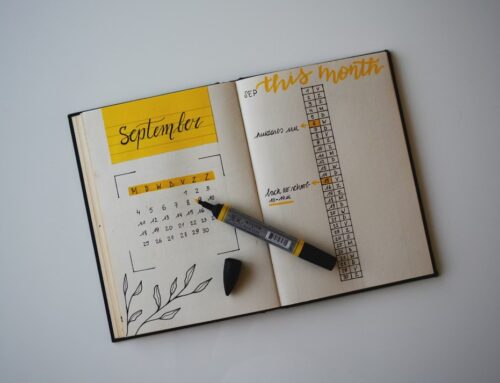
Make Your Own CAIE IGCSE Poetry Exam Questions
© Copyright Scrbbly 2022

26 Metaphors for Clouds: Unveiling the Poetry of the Skies
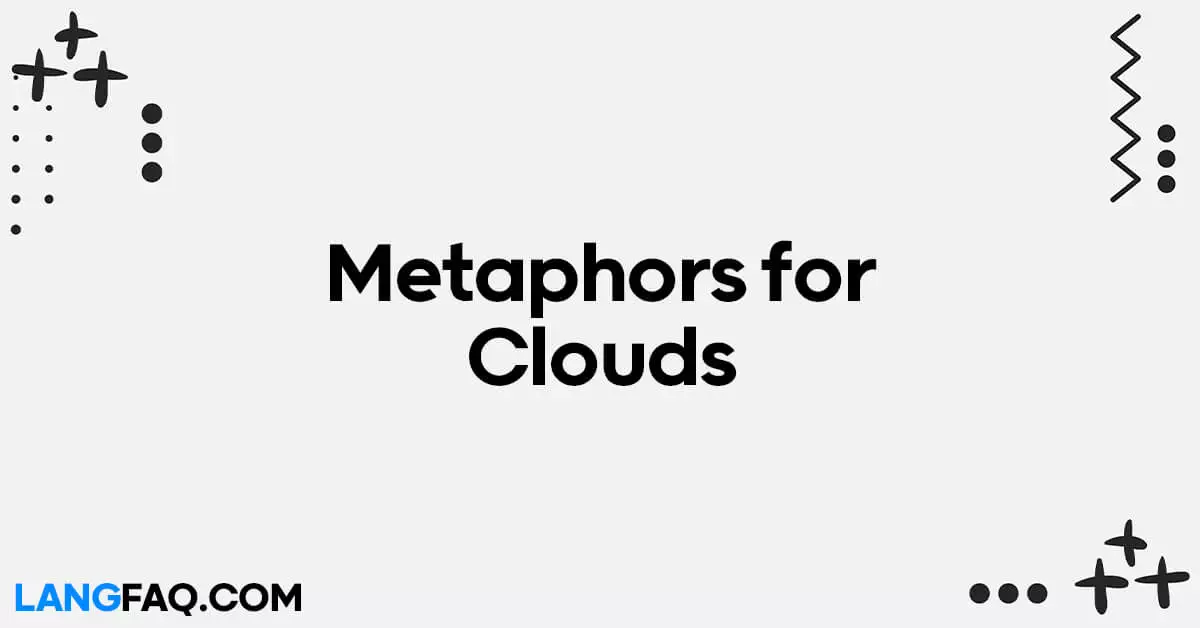
Share this post:
Ah, the enchanting allure of the skies! The topic “26 Metaphors for Clouds” invites us to embark on a poetic expedition through the realms of celestial imagery. Join us as we unravel the metaphors that turn clouds into dreamlike visions, celestial paintings, and whispers of time.
26 Metaphors for Clouds
- Dreamy Cotton Candy : Clouds resemble the soft, fluffy texture of cotton candy, creating a dreamlike atmosphere.
- Heaven’s Brushstrokes: The sky becomes a canvas, painted with the artistic brushstrokes of clouds.
- Imaginary Wisps: Clouds take on the form of wisps, floating through the sky like ethereal thoughts.
- Emotional Storms: Clouds mirror our emotions, ranging from calm and serene to turbulent and stormy.
- Comforting Sky Blankets: Clouds provide a comforting embrace, like a warm blanket in the sky.
- Dancing Shadows: The interplay of light and clouds creates a dance of shadows on the Earth below.
- Celestial Nomads: Clouds wander through the heavens, nomads in the celestial landscape.
- Tranquil Sky Cover: They form a tranquil cover over the sky, bringing a sense of peace.
- Hopeful Silver Linings: Positive clouds offer silver linings, symbolizing hope and optimism.
- Whispering Breezes: The wind carries whispers from the clouds, creating a soothing atmosphere.
- Nature’s Poetry: Clouds become verses in nature’s poetic composition, shaping the language of the sky.
- Fantastical Floaters: Floating clouds take us on a journey through fantastical realms of imagination.
- Vibrant Horizon Palette: The sky turns into a vibrant palette, changing colors from dawn to dusk.
- Ephemeral Elegance: Elegance graces the sky briefly, as clouds exhibit a delicate and fleeting beauty.
- Symphony of the Sky: Clouds orchestrate a harmonious symphony, blending with the sounds of nature.
- High-flying Elevation: Clouds elevate our gaze, encouraging us to reach for the limitless possibilities.
- Chronicles of Time: Clouds carry whispers of time, narrating stories from the past and present.
- Cosmic Artistry: The sky becomes an artistic canvas, painted with cosmic brushstrokes.
- Playful Sky Pillows: Clouds transform into playful pillows, creating a whimsical atmosphere.
- Mythical Morphoses: Clouds shape-shift into mythical forms, sparking imaginative interpretations.
- Daydream Drifters: Clouds allow our thoughts to drift in daydreams, carried by the gentle breeze.
- Heavenly Murmurs: Clouds create whispers that echo through the sky, like divine murmurs.
- Skyward Storytellers: Above, clouds become storytellers, narrating tales written in the language of the sky.
- Beyond-the-Horizon Infinity: Clouds extend beyond the horizon, symbolizing limitless possibilities.
- Sky’s Kaleidoscope: Clouds create a constantly changing kaleidoscope in the heavens.
- Pillars of the Atmosphere: They stand as pillars in the atmospheric landscape, shaping the character of the sky.
These metaphors for clouds weave a tapestry of imaginative language, transforming the ordinary into the extraordinary. From dreamy cotton candy clouds to the sky’s kaleidoscope, each metaphor adds depth and emotion to our perception of the ever-changing celestial landscape.
Whether portraying the sky as a canvas painted with heaven’s brushstrokes or as playful sky pillows drifting overhead, these metaphors invite us to explore the poetry written across the heavens. Through the lens of these vivid expressions, clouds become not just atmospheric phenomena but storytellers, artists, and companions in the journey of our skyward contemplation.
Dreamy Cotton Candy Clouds: A Whimsical Sky Ballet
The sky, adorned with dreamy cotton candy clouds, transforms into a whimsical ballet of colors and textures. These clouds, reminiscent of the sweet fluffiness of cotton candy, evoke a sense of wonder and joy. They paint the atmosphere with a dreamlike quality, creating a visual feast for anyone who gazes upward.
When to Use:
- Colleague Context: In a professional setting, you can use this metaphor to bring a touch of creativity to discussions about future projects or brainstorming sessions. For example, “Let’s aim for a vision as enchanting as dreamy cotton candy clouds for our next marketing campaign.”
- Friend Context: When planning a casual get-together, express excitement by saying, “I can’t wait for our picnic! I’m hoping for a sky filled with those dreamy cotton candy clouds—it’ll be the perfect backdrop for our day.”
Example Sentence:
“As the team discussed the upcoming product launch, Sarah proposed a marketing approach that would wrap the campaign in the dreamy cotton candy clouds of creativity and innovation.”
Cambridge Dictionary Insight:
Fluffy, resembling cotton candy; having a light and airy quality.
Tip: Use this metaphor to infuse a sense of imagination into discussions, fostering a positive and creative atmosphere.
Heavenly Canvas: Nature’s Artistry Unveiled
Imagine the sky as a heavenly canvas, where nature’s artistry unfolds with each passing moment. The clouds, like strokes from an otherworldly brush, create a masterpiece that captivates the observer. This metaphor elevates the sky to the status of an ever-changing gallery, showcasing celestial paintings that leave a lasting impression.
- Mentor-Mentee Context: Encourage your mentee by saying, “Your journey in this field is like an artist’s brush painting on the heavenly canvas of possibilities. Embrace the process, and your unique strokes will shine.”
- Formal Context: In a presentation, use this metaphor to describe the evolving landscape of your industry. For instance, “Just as an artist explores the canvas, our industry constantly adapts, creating a dynamic and ever-changing landscape.”
“As the speaker concluded, he emphasized the importance of innovation, comparing it to an artist exploring the heavenly canvas of technology and pushing the boundaries of what’s possible.”
Celestial, relating to the sky or the heavens.
Tip: Employ this metaphor to convey a sense of grandeur and significance, especially in discussions related to creativity and adaptability.
Imaginary Wisps: Clouds as Ethereal Thought-Bearers
The sky’s imagery is transformed when clouds take on the form of imaginary wisps, drifting lazily across the azure expanse. These wisps become the carriers of ethereal thoughts, inviting observers to engage in a contemplative journey through the boundless realm of the sky.
- Casual Context with Friends: When discussing future plans, you might say, “Let’s dream big! Our goals should be like those imaginary wisps in the sky—floating freely and full of endless possibilities.”
- Professional Setting: In a team meeting, encourage creativity by stating, “Think beyond the conventional. Our approach to problem-solving should be as free-flowing as the imaginary wisps in the sky.”
“In her journal entry, Emily described her aspirations as imaginary wisps, weaving through the pages and carrying her dreams to new heights.”
Ethereal, extremely delicate and light in a way that seems not to be of this world.
Tip: Use this metaphor to inspire a sense of boundless creativity and limitless potential in various aspects of life.
Emotional Storms: Turbulence in the Sky of Feelings
Clouds, with their ever-changing forms, serve as a visual metaphor for the turbulence within our emotions. From moments of calm to storms of intensity, the emotional storms mirrored in the sky become a powerful way to express the complex nature of human feelings.
- Friend Context: When consoling a friend going through a tough time, you might say, “Life has its emotional storms, but remember, after the rain, there’s always a chance for a beautiful rainbow.”
- Personal Reflection: In a reflective piece, share your experiences by stating, “My journey has been a series of emotional storms and serene moments, each contributing to the canvas of my life.”
“As the protagonist in the novel faced the challenges of life, the author skillfully used the changing weather as a metaphor for the emotional storms within.”
Turbulent, involving a lot of sudden changes; characterized by conflict, disorder, or confusion.
Tip: Utilize this metaphor to convey the ups and downs of life, fostering empathy and understanding in both personal and professional conversations.
Comforting Sky Blankets: Finding Solace in Softness
Clouds, akin to comforting sky blankets, create an atmosphere of serenity and peace. This metaphor invites individuals to imagine being cradled in the soft embrace of the sky, fostering a sense of security and tranquility amidst life’s challenges.
- Formal Setting: Incorporate this metaphor into a presentation to emphasize the importance of creating a workplace that provides comfort and support . For example, “Our company culture aims to be like comforting sky blankets, ensuring our employees feel secure and supported.”
- Casual Conversation: When comforting a friend, express empathy by saying, “I know things are tough right now, but imagine the sky wrapping you in its comforting sky blankets. You’re not alone.”
“As the team navigated a period of change, the manager reassured them that the company would act as comforting sky blankets, providing support and stability.”
Serene, peaceful, and calm.
Tip: Incorporate this metaphor to convey a sense of safety and support, promoting a positive and nurturing environment.
Dance of Shadows: A Playful Interplay of Light
The interaction between light and clouds creates a dance of shadows on the Earth below. This metaphor captures the dynamic and captivating nature of this interplay, turning everyday scenes into mesmerizing displays of contrast and movement.
- Photography Commentary: When discussing a captivating photo, you might say, “The dance of shadows, cast by the clouds, adds depth and drama to the composition, making the image truly stunning.”
- Nature Appreciation: During a hike or nature walk, express awe by stating, “Look at the dance of shadows beneath the trees. It’s like a natural ballet choreographed by the sun and clouds.”
“The artist, inspired by the dance of shadows in a bustling city, created a painting capturing the interplay of light and clouds, showcasing the beauty of urban life.”
Interplay, the way in which two things have an effect on each other.
Tip: Use this metaphor to highlight the beauty in contrasts and to add a touch of drama to descriptions of visual elements.
Celestial Nomads: Drifting Through the Heavens
Clouds, described as celestial nomads, wander through the vast expanse of the sky, casting their fleeting shadows upon the Earth. This metaphor elevates clouds to transient wanderers, creating a sense of movement and impermanence in the celestial realm.
- Colleague Context: During a strategic planning meeting, infuse a sense of adaptability by saying, “Our approach to the market should be like celestial nomads—adapting to changes and drifting toward new opportunities.”
- Poetic Expression: In a creative writing piece, evoke a sense of wanderlust by describing clouds as celestial nomads exploring the endless sky.
“In her travel blog, Maria likened herself to a celestial nomad, drifting from one destination to another, collecting memories like clouds collecting raindrops.”
Nomad, a member of a group of people who move from one place to another, rather than living in one place all the time.
Tip: Apply this metaphor to discussions about adaptability, exploration, and embracing change, creating a sense of fluidity in various contexts.
Tranquil Sky Cover: Embracing the Quiet Beauty
When the day winds down and the stars emerge, serene clouds form a tranquil blanket over the night sky. This metaphor invites individuals to appreciate the quiet beauty that envelops the world during the peaceful hours of the evening.
- Friend Context: Reflecting on a quiet evening, share the sentiment with a friend by saying, “Isn’t it comforting when the sky forms a tranquil cover? It’s like nature’s way of wrapping the day in a gentle embrace.”
- Self-Reflection: In a personal journal entry, describe moments of calm by stating, “Under the tranquil sky cover, I found solace and a moment to reflect on the beauty of simplicity.”
“As the city slowed down, the lights dimmed, and the tranquil sky cover revealed a breathtaking display of stars, creating a serene ambiance.”
Solace, comfort and peace that comes from knowing that others are supporting you.
Tip: Use this metaphor to convey a sense of peace, comfort, and introspection, especially during discussions centered on mindfulness and well-being.
These metaphors offer a rich tapestry of language, turning ordinary discussions into engaging narratives. Whether evoking the comforting embrace of sky blankets or the dance of shadows on the Earth, each metaphor brings a unique perspective to conversations, adding depth, emotion, and vivid imagery.
Hopeful Silver Linings: Illuminating Positivity Amidst Challenges
In the vast expanse of clouds, silver linings emerge as symbols of hope and optimism, even in the face of challenges. This metaphor encourages individuals to seek the positive aspects within difficulties, reminding them that every cloud has a silver lining.
- Mentor-Mentee Context: Guide your mentee through tough times by saying, “Remember, challenges are like clouds, but within them, there are hopeful silver linings. Embrace the lessons they bring.”
- Team Encouragement: In a team meeting, inspire resilience by stating, “Let’s approach setbacks with the mindset that each challenge holds a hopeful silver lining—an opportunity for growth.”
“As the project faced unexpected setbacks, the team leader emphasized the importance of finding and focusing on the hopeful silver linings within each obstacle.”
Silver lining, a sign of hope in an unfortunate or gloomy situation.
Tip: Incorporate this metaphor to instill a sense of optimism and resilience, promoting a positive outlook during challenging times.
Whispering Breezes: Nature’s Soothing Melody
The gentle movements of clouds create whispering breezes that weave a soothing melody through the air. This metaphor invites individuals to imagine the sky as a source of comfort and tranquility, where the wind carries messages of serenity.
- Friend Context: Planning a relaxing day outdoors, express anticipation by saying, “Let’s find a quiet spot where the whispering breezes and the rustle of leaves create a natural symphony.”
- Stress Relief Recommendation: Suggest stress relief to a friend by saying, “Take a moment to step outside and listen to the whispering breezes—it’s like nature’s own form of therapy.”
“In her meditation practice, Jane visualized herself in a serene meadow, where the whispering breezes brought a sense of calm and peace.”
Soothing, making you feel calm or more relaxed.
Tip: Utilize this metaphor to convey a sense of calmness and relaxation, making it suitable for discussions related to mindfulness and well-being.
Nature’s Poetry: Clouds as Verses in the Sky
The ever-changing forms of clouds become verses in nature’s poetic composition. This metaphor elevates the sky to the status of a poetic canvas, where clouds craft intricate verses that narrate the story of the natural world.
- Creative Project Context: When proposing a creative project, express the idea by stating, “Let’s treat our campaign like nature’s poetry, with each element, like the clouds, contributing a unique verse to the narrative.”
- Nature Appreciation: During a nature walk, share the sentiment with friends by saying, “Look at the sky—it’s like nature’s poetry, with clouds weaving verses that tell the story of the day.”
“As the artist painted a mural on the city wall, he envisioned the clouds as verses in nature’s poetry, adding a touch of magic to the urban landscape.”
Intricate, having a lot of small parts or details that are arranged in a complicated way.
Tip: Apply this metaphor to discussions about creativity and storytelling, emphasizing the beauty and intricacy found in the natural world.
Fantastical Floaters: A Journey Through Imaginative Realms
Clouds, like fantastical floaters, invite individuals to embark on a journey through imaginative realms. This metaphor encourages creativity and invites individuals to see beyond the ordinary, exploring the limitless possibilities within their minds.
- Creative Thinking Workshop: Kick off a brainstorming session by stating, “Let’s think of our ideas as fantastical floaters—each one taking us on a journey through imaginative realms of innovation.”
- Children’s Storytelling: When telling a bedtime story, capture a child’s imagination by saying, “Once upon a time, there were fantastical floaters in the sky, carrying dreams and stories to far-off lands.”
“As the team explored innovative solutions, they embraced the idea of their projects as fantastical floaters, charting new territories of creativity.”
Imaginative, having or showing creativity or inventiveness.
Tip: Use this metaphor to foster a sense of creativity and exploration, making it especially effective in contexts that require innovative thinking.
Vibrant Horizon Palette: Painting the Sky with Colors
The sky transforms into a vibrant horizon palette, where colors shift and blend from dawn to dusk. This metaphor portrays the ever-changing hues of the sky as an artistic masterpiece, inviting individuals to appreciate the visual spectacle.
- Photography Commentary: Discussing a stunning photograph, you might say, “The vibrant horizon palette captured in this image showcases nature’s ability to paint the sky with an array of breathtaking colors.”
- Nature Appreciation: During a scenic drive, express awe by stating, “Look at the vibrant horizon palette—the sky is like an artist’s canvas, constantly changing its colors.”
“As the sun dipped below the horizon, the vibrant horizon palette illuminated the evening sky, creating a breathtaking scene.”
Spectacle, a visually striking performance or display.
Tip: Incorporate this metaphor to add a sense of visual richness and artistic beauty, enhancing descriptions of natural landscapes and visual experiences.
Ephemeral Elegance: The Delicate Beauty of Fleeting Moments
Clouds exhibit ephemeral elegance, a fleeting beauty that graces the sky for brief moments. This metaphor encourages individuals to appreciate the delicate and transient nature of beauty, finding significance in the passing moments.
- Formal Setting: Discussing the beauty of a project, you might say, “Our approach should reflect the ephemeral elegance of clouds—capturing moments of brilliance that leave a lasting impact.”
- Personal Reflection: Reflecting on a life event, express sentiment by stating, “Life’s moments are like the ephemeral elegance of clouds—beautiful and fleeting, yet eternally cherished.”
“As the artist painted a mural, he aimed to capture the ephemeral elegance of clouds, creating a visual representation of fleeting beauty.”
Fleeting, lasting for a very short time.
Tip: Use this metaphor to convey the idea that even brief moments can hold immense beauty and significance.
Symphony of the Sky: Harmonious Blend of Nature’s Sounds
Clouds orchestrate a symphony in the sky, blending harmoniously with the sounds of nature. This metaphor transforms the atmosphere into a musical composition, highlighting the interconnectedness of elements in the natural world.
- Outdoor Event Description: When promoting an outdoor event, create anticipation by saying, “Join us for a night under the stars, where the symphony of the sky and nature’s sounds will create a magical atmosphere.”
- Nature Retreat Proposal: Suggesting a weekend getaway, express excitement by stating, “Imagine waking up to the symphony of the sky—a retreat where the music of nature rejuvenates the soul.”
“As the campfire crackled, participants at the nature retreat were serenaded by the symphony of the sky, a blend of rustling leaves and distant bird calls.”
Orchestrate, to arrange or direct the elements of a situation to produce a desired effect.
Tip: Apply this metaphor to discussions related to nature appreciation and events, emphasizing the beauty of natural sounds.
High-flying Elevation: Reaching for Limitless Possibilities
Clouds inspire individuals to aim for high-flying elevation, encouraging them to reach for the limitless possibilities that lie beyond the conventional. This metaphor serves as a motivational tool, fostering a sense of aspiration and ambition.
- Professional Development Seminar: Motivate colleagues by saying, “In our careers, let’s strive for high-flying elevation—embracing challenges and reaching new heights of success .”
- Personal Goal Setting: Encourage personal growth by stating, “As we embark on our journey, let’s set goals that reflect high-flying elevation, soaring beyond our current limitations.”
“The entrepreneur, driven by the vision of high-flying elevation, constantly sought innovative solutions and expanded the horizons of their business .”
Aspiration, a hope or ambition of achieving something.
Tip: Use this metaphor to infuse discussions with a sense of ambition and the pursuit of excellence.
Chronicles of Time: Narrating Stories Through Cloud Formations
Clouds carry whispers of time, narrating stories from the past and present. This metaphor invites individuals to imagine the sky as a canvas of history, where cloud formations weave tales that unfold with each passing moment.
- Historical Context: Discussing the significance of a place, you might say, “The clouds above hold the chronicles of time, silently narrating the stories of those who came before us.”
- Educational Setting: Teaching about history, express creativity by stating, “Let’s explore history like the chronicles of time written in the clouds, each formation revealing a different chapter.”
“During the historical tour, the guide pointed to the sky and spoke of the chronicles of time, emphasizing the connection between cloud formations and significant events.”
Narrate, to tell a story or describe a series of events.
Tip: Apply this metaphor to discussions about history, storytelling, and the interconnectedness of time and natural elements.
Cosmic Artistry: The Sky as a Canvas for Celestial Brushstrokes
The sky becomes an artistic canvas, painted with cosmic brushstrokes that create a breathtaking masterpiece. This metaphor elevates the celestial realm to an art form, inviting individuals to appreciate the grandeur of the universe.
- Astronomy Enthusiast Gathering: Capture the excitement by saying, “Tonight, let’s gather to witness the cosmic artistry—a celestial spectacle where the sky transforms into an expansive canvas.”
- Creative Project Kickoff: Initiating a creative project, set the tone by stating, “Our project aims to emulate cosmic artistry, drawing inspiration from the grandeur of the universe.”
“As the meteor shower graced the night sky, attendees marveled at the cosmic artistry, feeling a profound connection to the vastness of space.”
Tip: Use this metaphor to evoke a sense of awe and wonder, especially in discussions related to space, astronomy, and creative projects.
Playful Sky Pillows: Whimsy in the Heavens
Clouds transform into playful pillows, creating a whimsical atmosphere in the sky. This metaphor adds a touch of joy and lightheartedness, encouraging individuals to imagine the sky as a playground of fluffy, carefree forms.
- Children’s Event Planning: When organizing a family-friendly event, build excitement by saying, “Join us for a day filled with activities under the playful sky pillows—where imagination knows no bounds.”
- Team-Building Exercise: Infuse a team-building exercise with creativity by stating, “Let’s approach this challenge with the spirit of playful sky pillows—light, fun, and full of creative energy.”
“At the outdoor festival, families gathered to enjoy the playful sky pillows, a whimsical backdrop to a day of laughter and joy.”
Lightheartedness, a feeling of being happy and not being worried about anything.
Tip: Apply this metaphor to discussions that require a sense of playfulness and creativity, creating an atmosphere of joy and imagination.
Mythical Morphoses: Shaping Clouds into Imaginative Forms
Clouds shape-shift into mythical morphoses, sparking imaginative interpretations in the sky. This metaphor invites individuals to embrace creativity and envision familiar and fantastical figures within cloud formations.
- Creative Workshop: Engage participants by saying, “Let’s explore artistic expression by seeing the clouds as mythical morphoses—each formation a canvas for imaginative interpretations.”
- Children’s Storytelling Session: Capture children’s imaginations by stating, “As we look at the sky, let’s imagine the clouds as mythical morphoses, telling stories of magical beings and far-off lands.”
“In the art class, students were encouraged to create drawings inspired by the mythical morphoses seen in the sky, turning clouds into fantastical shapes.”
Shape-shift, to change from one form to another.
Tip: Utilize this metaphor to foster creativity and imaginative thinking, especially in contexts that involve artistic expression and storytelling.
Daydream Drifters: Allowing Thoughts to Wander
Clouds become daydream drifters, carrying thoughts to distant realms as they gracefully traverse the sky. This metaphor encourages individuals to embrace moments of daydreaming, letting their thoughts wander freely.
- Casual Conversation: When discussing future plans, express excitement by saying, “Let’s be daydream drifters, allowing our thoughts to wander and explore the possibilities that lie ahead.”
- Creative Writing Session: Encourage writers by stating, “In our stories, let’s be daydream drifters—letting our characters’ thoughts meander like clouds, creating rich narratives.”
“As the poet observed the clouds, she felt inspired to be a daydream drifter, allowing her thoughts to wander freely and weave poetic verses.”
Meander, to move slowly in no particular direction or with no clear purpose.
Tip: Apply this metaphor to discussions about creativity, exploration, and the beauty found in allowing thoughts to wander freely.
Illuminated Veil: Bathing the World in Radiant Light
Clouds, like an illuminated veil, diffuse sunlight and bathe the world in a gentle, radiant glow. This metaphor paints a picture of the sky as a luminous canvas, creating a serene and ethereal ambiance.
- Event Description: When promoting an outdoor event, create an enchanting image by saying, “Join us for an evening under the illuminated veil—the sky’s soft glow will transform the surroundings into a magical setting.”
- Nature Appreciation: During a scenic hike, express awe by stating, “Look at the illuminated veil above—the way the clouds diffuse the sunlight creates a captivating play of light and shadow.”
“At the outdoor wedding ceremony, the couple exchanged vows under the illuminated veil, creating a picturesque scene filled with radiant light.”
Tip: Incorporate this metaphor to evoke a sense of enchantment and beauty, especially in discussions related to nature, events, and visual experiences.
Ever-changing Mosaics: The Dynamic Artistry of Cloud Formations
Clouds form ever-changing mosaics, crafting dynamic patterns across the sky. This metaphor invites individuals to appreciate the transient and artistic nature of cloud formations, transforming the sky into a living canvas.
- Photography Commentary: Discussing the artistry of a photograph, you might say, “The ever-changing mosaics created by the clouds in this image showcase the dynamic beauty of nature.”
- Weather Report Description: Describing the sky’s appearance, state, “Today’s weather brings us ever-changing mosaics—an evolving masterpiece painted by the clouds.”
“As the storm passed, the sky cleared, revealing ever-changing mosaics that captivated onlookers with their intricate and shifting patterns.”
Dynamic, continuously changing or developing.
Tip: Use this metaphor to emphasize the dynamic and evolving nature of cloud formations, adding a sense of vibrancy to discussions about nature and weather.
Aerial Ballet: Graceful Dance of Clouds in the Sky
Clouds engage in an aerial ballet, performing a graceful and mesmerizing dance in the vast expanse of the sky. This metaphor transforms the atmosphere into a stage where clouds move with elegance and fluidity.
- Artistic Project Description: When proposing a dance performance, set the tone by saying, “Let’s choreograph a routine inspired by the aerial ballet of clouds—a dance of grace and beauty.”
- Nature Documentary Commentary: Discussing a documentary, express admiration by stating, “The aerial ballet of clouds featured in the film showcases the breathtaking choreography of nature.”
“As the sun set, the sky became a canvas for the aerial ballet of clouds, casting a spell of enchantment over the horizon.”
Fluidity, the quality of being able to move easily.
Tip: Apply this metaphor to discussions about grace, beauty, and natural movements, creating an atmosphere of enchantment and appreciation for the sky’s dynamic performances.
Celestial Kaleidoscope: a Symphony of Colors in the Sky
The sky transforms into a celestial kaleidoscope, where clouds paint a symphony of colors with each passing moment. This metaphor captures the vivid and ever-changing hues that adorn the celestial canvas.
- Art Exhibition Opening: When describing an art piece, express admiration by saying, “The artist captured the essence of a celestial kaleidoscope, bringing a symphony of colors to the canvas.”
- Scenic Drive Commentary: During a drive through picturesque landscapes, state, “Look at the sky—a celestial kaleidoscope of colors is unfolding, turning the horizon into a breathtaking palette.”
“At the outdoor concert, attendees marveled at the celestial kaleidoscope above, as the clouds painted a symphony of colors that complemented the music.”
Kaleidoscope, a constantly changing pattern or sequence of elements.
Tip: Use this metaphor to convey the dynamic and colorful nature of the sky, especially in discussions related to visual experiences and artistic representations.
Mystical Cloud Whispers: Secrets Shared in the Sky
Clouds become mystical whispers, sharing secrets across the vast expanse of the heavens. This metaphor adds an element of mystery and intrigue to the sky, inviting individuals to imagine the clouds as bearers of celestial secrets.
- Creative Writing Prompt: Spark creativity by saying, “Let’s write stories inspired by the mystical cloud whispers—an exploration of secrets whispered across the celestial realm.”
- Personal Reflection: During a moment of introspection, express contemplation by stating, “As I gazed at the sky, I wondered about the mystical cloud whispers—what secrets do they hold?”
“As the protagonist in the novel stargazed, she imagined the clouds as mystical whispers, carrying untold secrets through the vast expanse of the night.”
Mystical, having a spiritual meaning that is difficult to understand or explain.
Tip: Apply this metaphor to discussions that involve mystery, imagination, and contemplation, creating an air of curiosity and wonder.
Elemental Cloud Alchemy: Transformative Changes in the Sky
Clouds engage in elemental alchemy, undergoing transformative changes that captivate observers. This metaphor encourages individuals to see the sky as a laboratory of natural wonders, where clouds undergo magical metamorphoses.
- Scientific Discovery Announcement: When presenting a new finding, create intrigue by saying, “Our research reveals the elemental cloud alchemy, uncovering the transformative changes that shape the sky.”
- Meteorology Discussion: Explaining weather patterns, state, “The atmospheric conditions are conducive to elemental cloud alchemy, bringing about the transformative changes we observe.”
“As the storm approached, the sky became a theater of elemental cloud alchemy, showcasing the mesmerizing changes in shape and color.”
Alchemy, a power or process that changes or transforms something in a mysterious or impressive way.
Tip: Utilize this metaphor to discuss change, transformation , and the dynamic nature of natural phenomena, adding an element of fascination to scientific discussions.
Are clouds really like fluffy dreams? Absolutely! Clouds, with their soft and weightless appearance, often evoke a dreamlike quality, creating a whimsical atmosphere that sparks the imagination.
Do different cultures have unique cloud metaphors? Indeed, various cultures around the world have distinct cloud metaphors rooted in their folklore, mythology, and poetic traditions.
What is the significance of silver linings in cloud metaphors? Silver linings symbolize hope and positivity amidst challenges. Clouds, with their silver linings, remind us that even in difficult times, there is brightness and optimism.
How do clouds influence weather patterns? Clouds play a crucial role in weather patterns, affecting temperature, precipitation, and atmospheric conditions. Understanding cloud formations helps meteorologists predict weather changes.
Can clouds really resemble mythical shapes? Absolutely! Clouds’ ever-changing forms often lead to imaginative interpretations, with people seeing mythical shapes like dragons, castles, and legendary beings.
What is the science behind cloud formations? Clouds form when warm, moist air rises, and the water vapor condenses into tiny droplets or ice crystals. Factors like temperature, humidity, and atmospheric pressure influence cloud types.
Embarking on this journey through the metaphors for clouds has allowed us to glimpse the vastness of human imagination and the poetic language written across the skies. From fluffy dreams to celestial wanderers, each metaphor adds depth to our perception of the clouds’ ethereal beauty.
Similar Posts

26 Metaphors for Support: Unveiling the Power of Metaphors
Share this post: Facebook X Pinterest In a world where the strength of our connections defines our journey, support emerges as the silent force shaping our experiences. This…
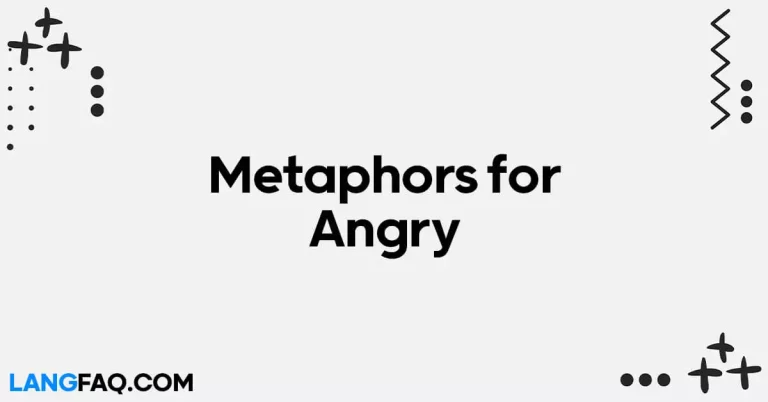
26 Metaphors for Angry
Are you feeling like a boiling kettle or a volcano ready to erupt? Emotions can often be challenging to express, especially when it comes to anger. Fortunately, language…
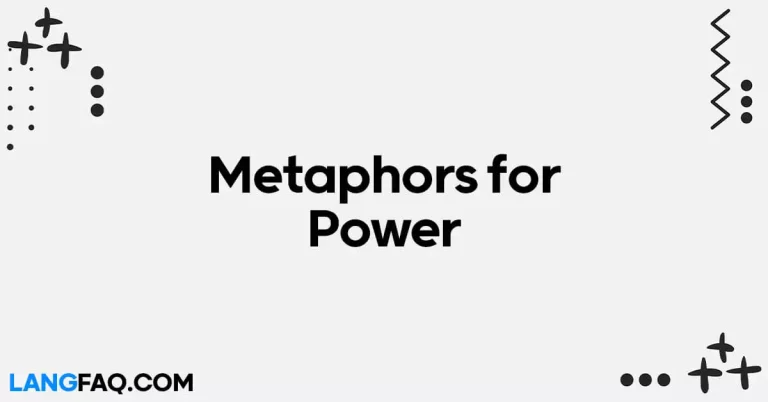
26 Metaphors for Power: Unveiling the Dynamics
Power, an elusive force that shapes destinies and defines realms. In this exploration, we delve into 26 metaphors for power, each offering a unique lens through which we…
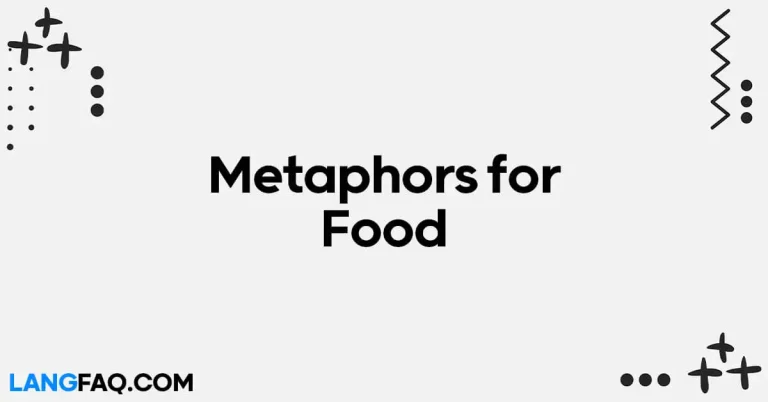
26 Metaphors for Food: A Gastronomic Symphony
Food is not just sustenance; it’s a canvas for creativity, a language of flavors. In this exploration, we delve into 26 metaphors for food that unveil the rich…
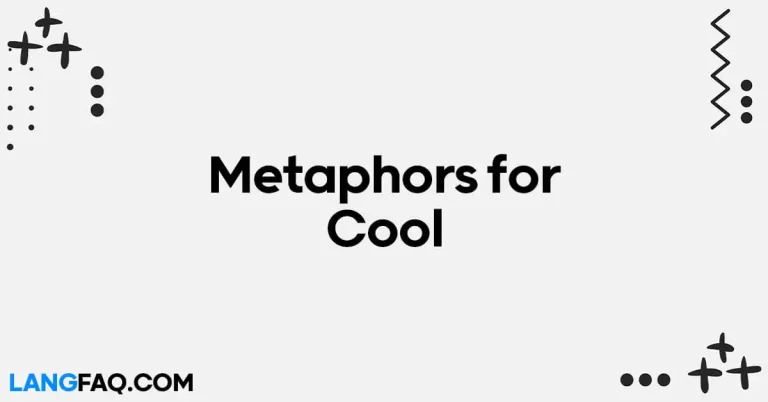
26 Metaphors for Cool: Unveiling the Art of Expression
Coolness, that enigmatic quality that everyone aspires to, is often challenging to define. It’s like catching lightning in a bottle – elusive, but when you see it, you…
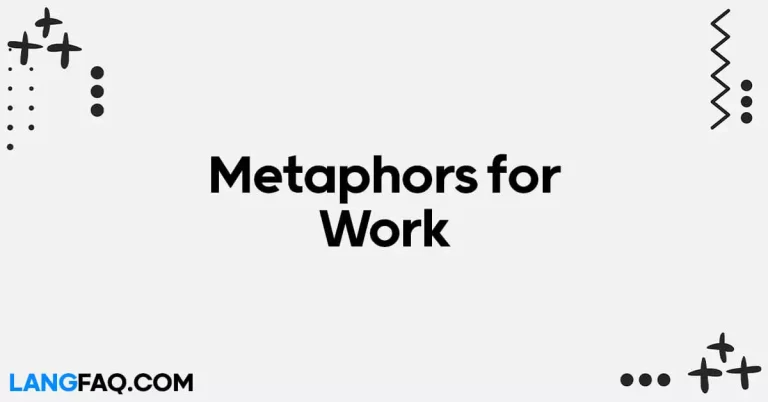
26 Metaphors for Work: Unlocking the Secrets of Employment
Work, in all its forms and facets, is a fundamental part of our lives. Whether you’re in a corporate setting, pursuing a creative passion, or engaged in manual…
DraftSparks ✨
41+ ‘Cloud’ Writing Prompts
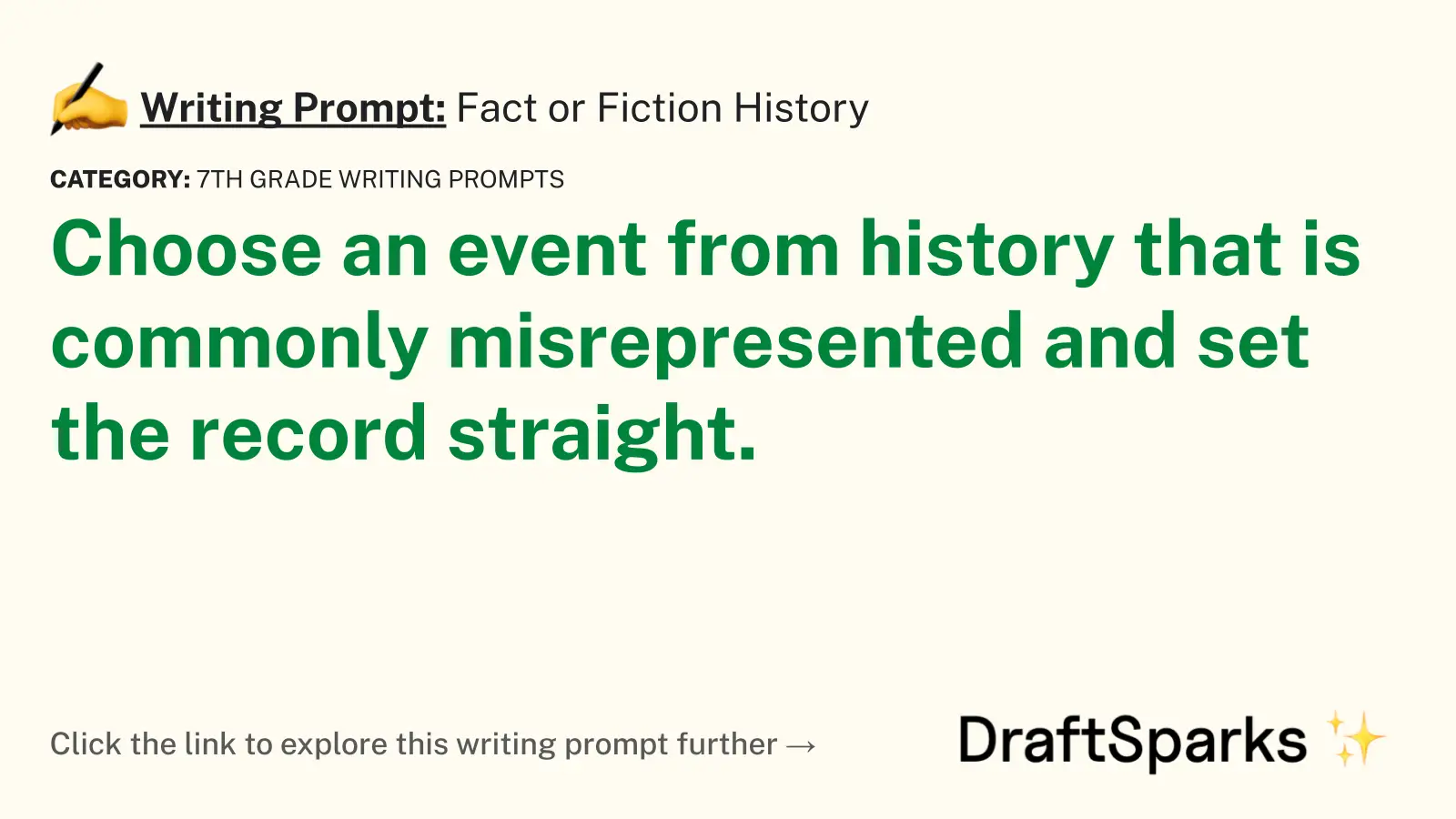
Fact or Fiction History
Choose an event from history that is commonly misrepresented and set the record straight.
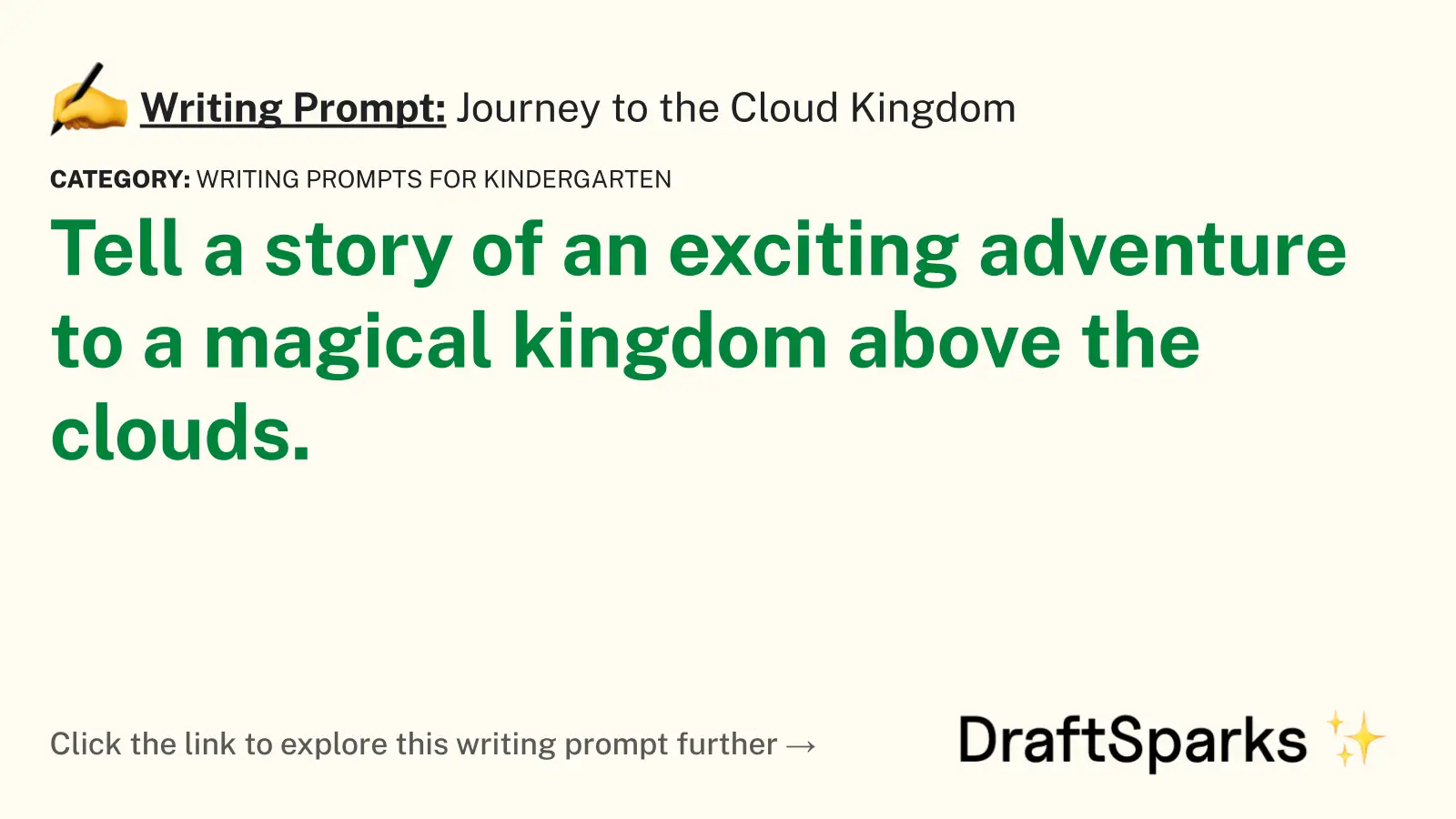
Journey to the Cloud Kingdom
Tell a story of an exciting adventure to a magical kingdom above the clouds.
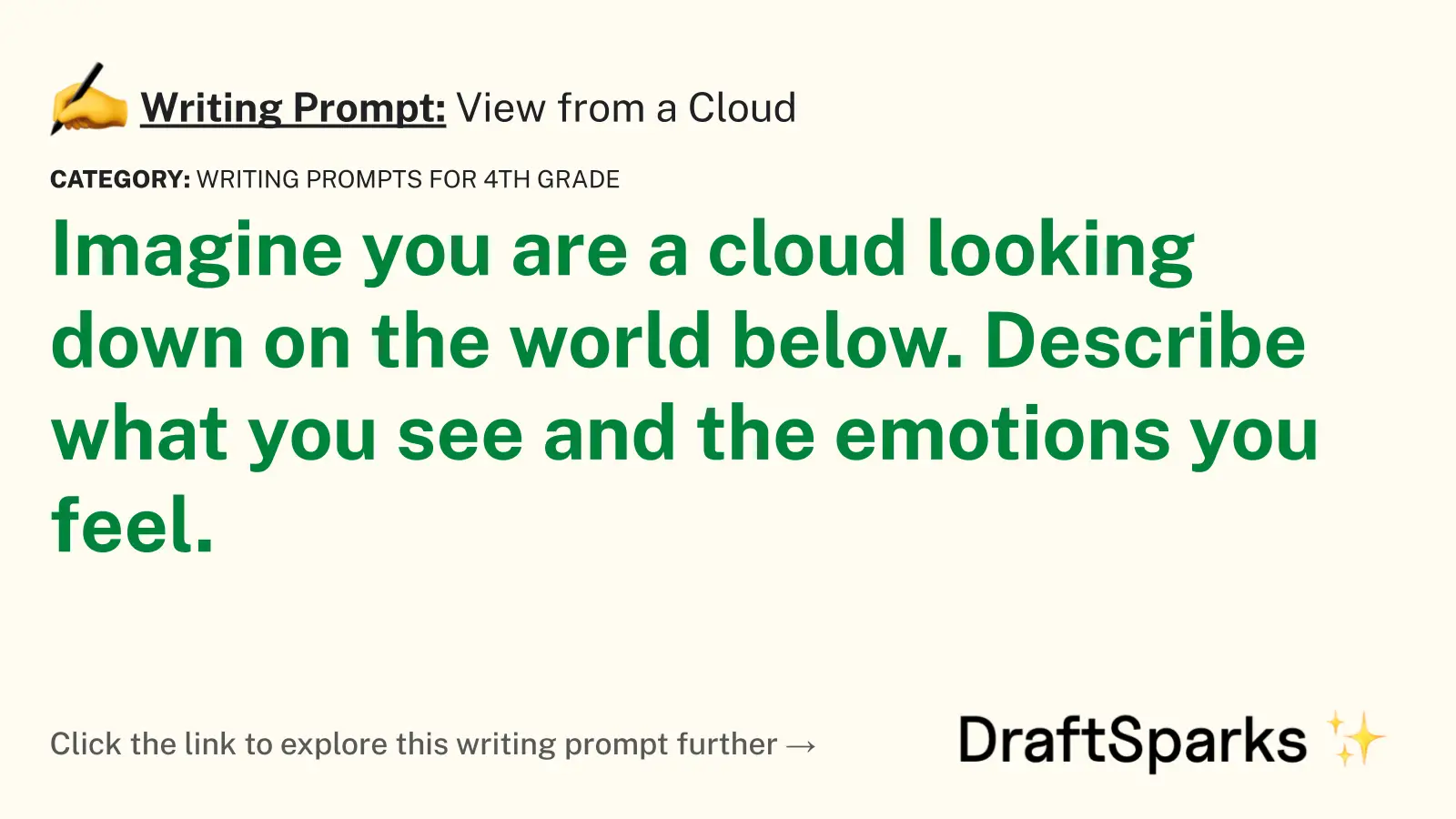
View from a Cloud
Imagine you are a cloud looking down on the world below. Describe what you see and the emotions you feel.
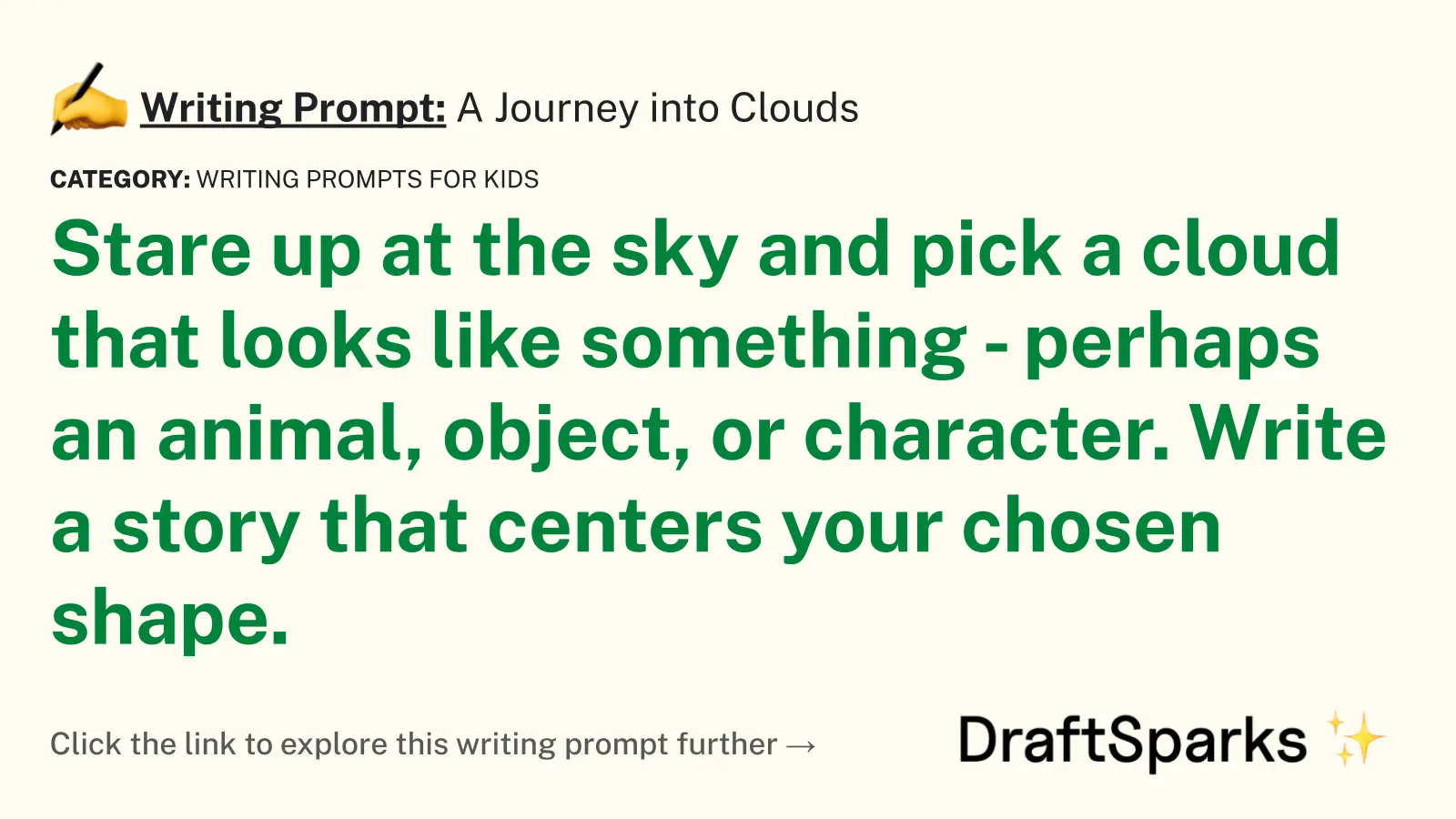
A Journey into Clouds
Stare up at the sky and pick a cloud that looks like something – perhaps an animal, object, or character. Write a story that centers your chosen shape.
Lifecycle of a Snowflake
Write a day in the life of a snowflake, from being formed in the cloud to melting on the ground.
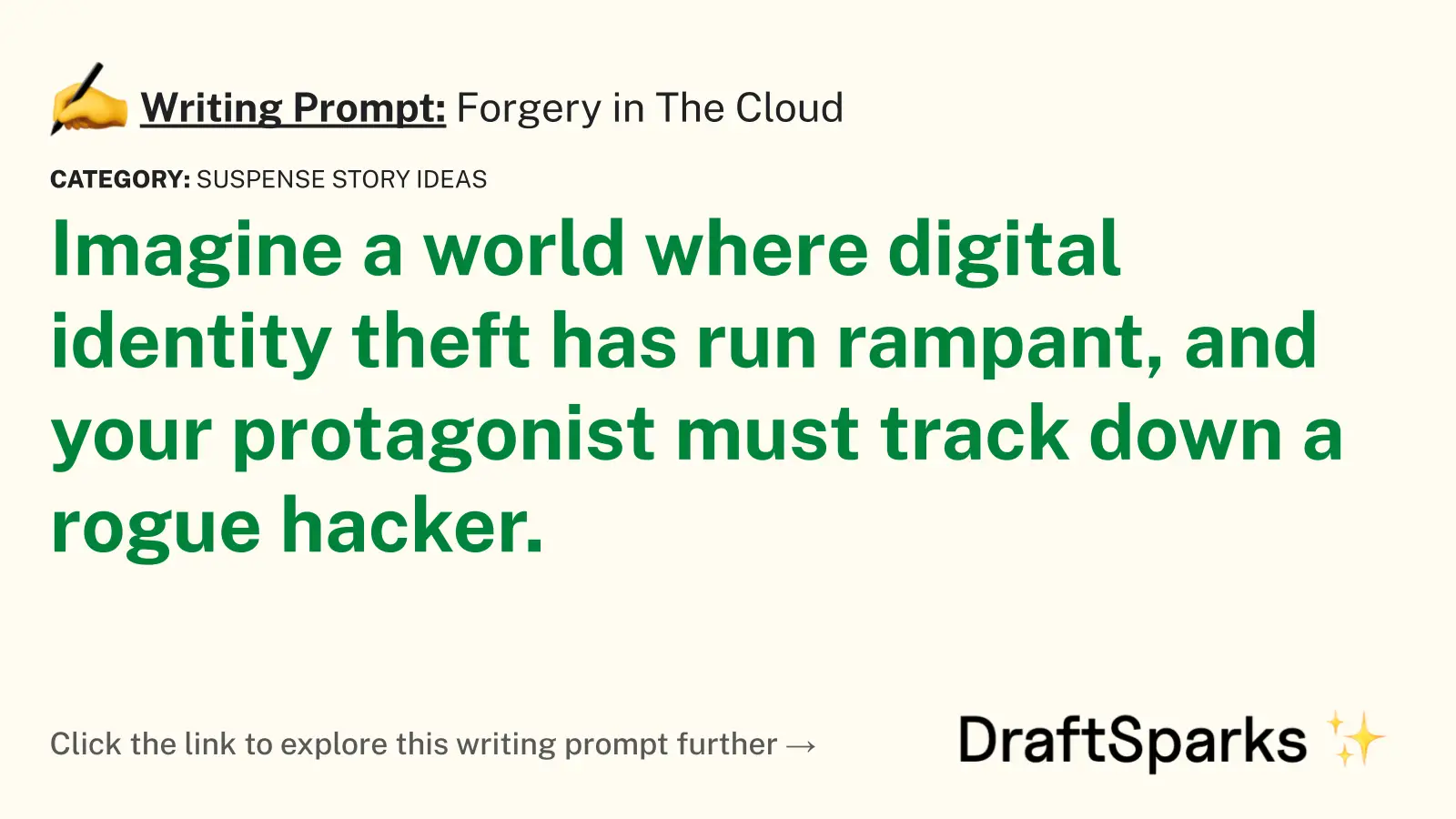
Forgery in The Cloud
Imagine a world where digital identity theft has run rampant, and your protagonist must track down a rogue hacker.
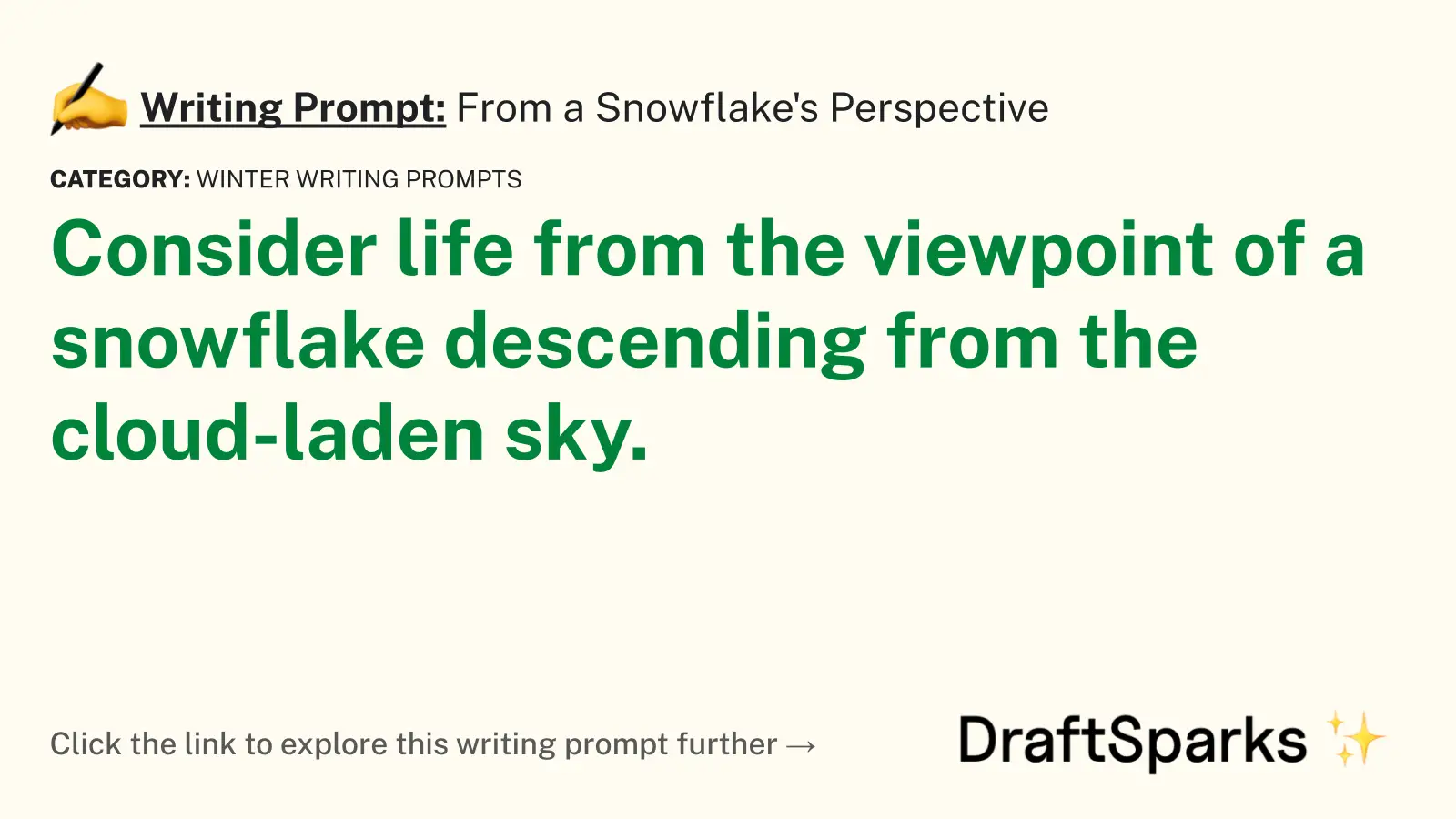
From a Snowflake’s Perspective
Consider life from the viewpoint of a snowflake descending from the cloud-laden sky.

Cloud Conversations
Write a conversation between two elements of the sky: the moon and a cloud, a star and the wind, etc.
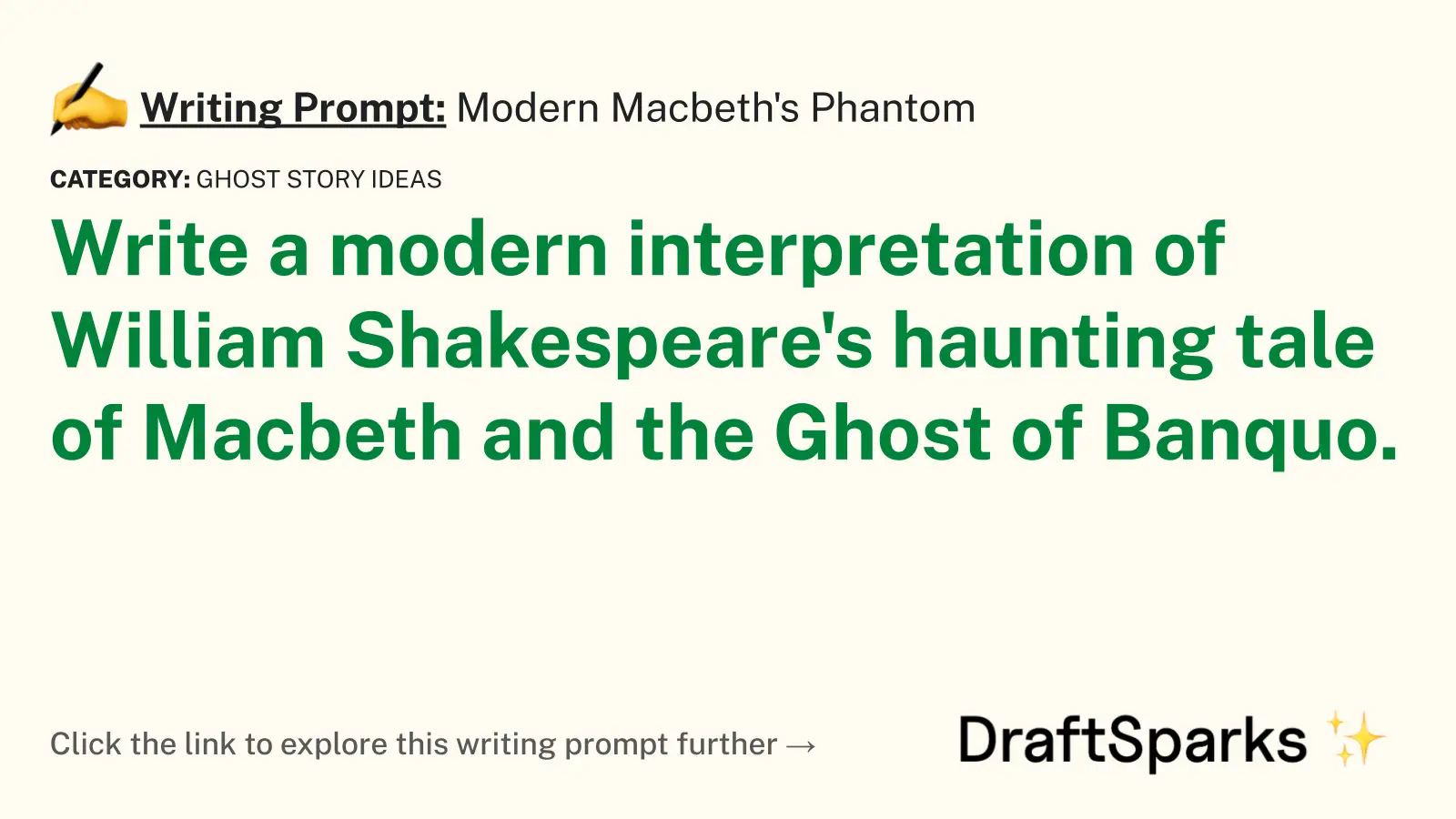
Modern Macbeth’s Phantom
Write a modern interpretation of William Shakespeare’s haunting tale of Macbeth and the Ghost of Banquo.
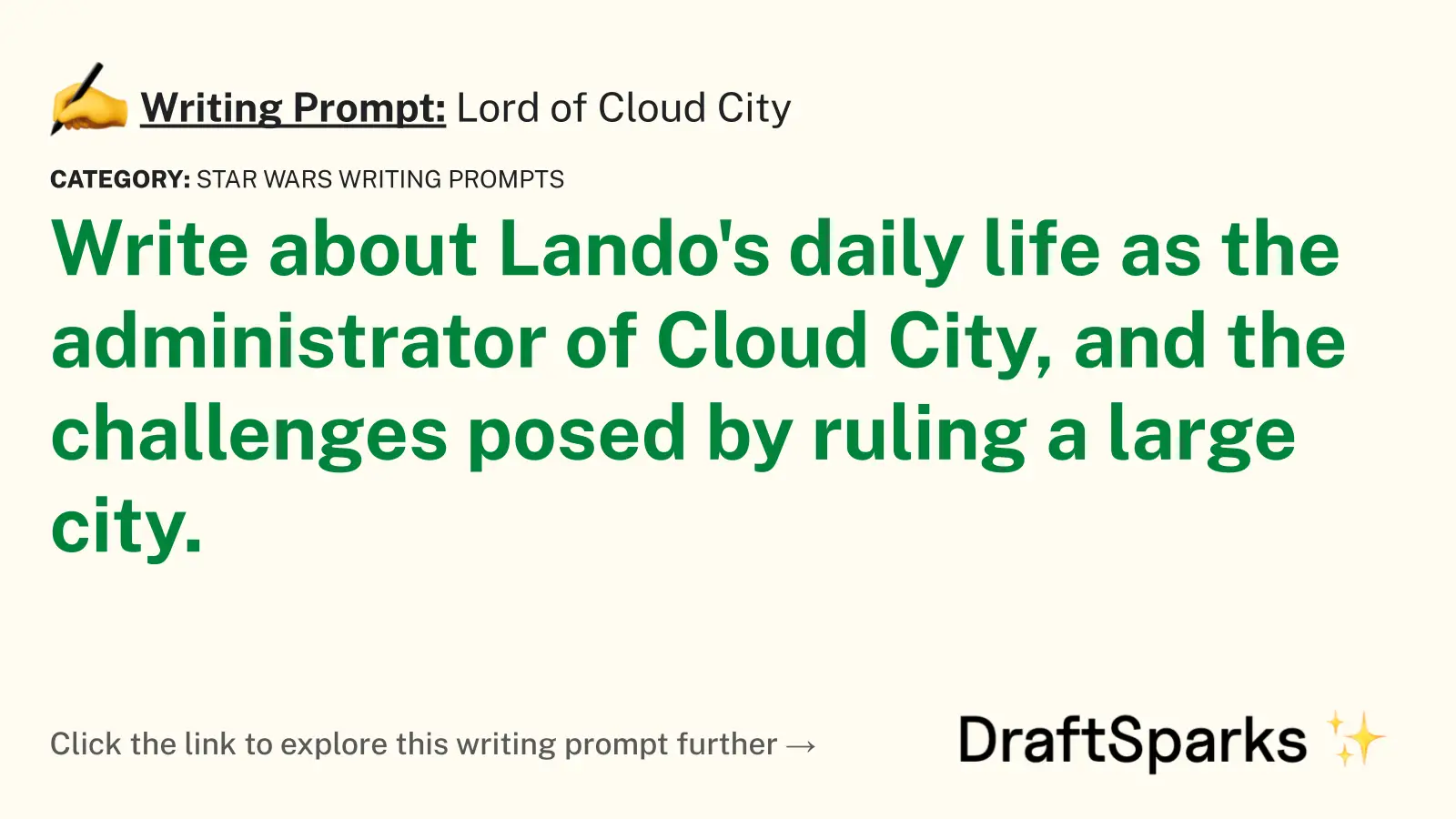
Lord of Cloud City
Write about Lando’s daily life as the administrator of Cloud City, and the challenges posed by ruling a large city.
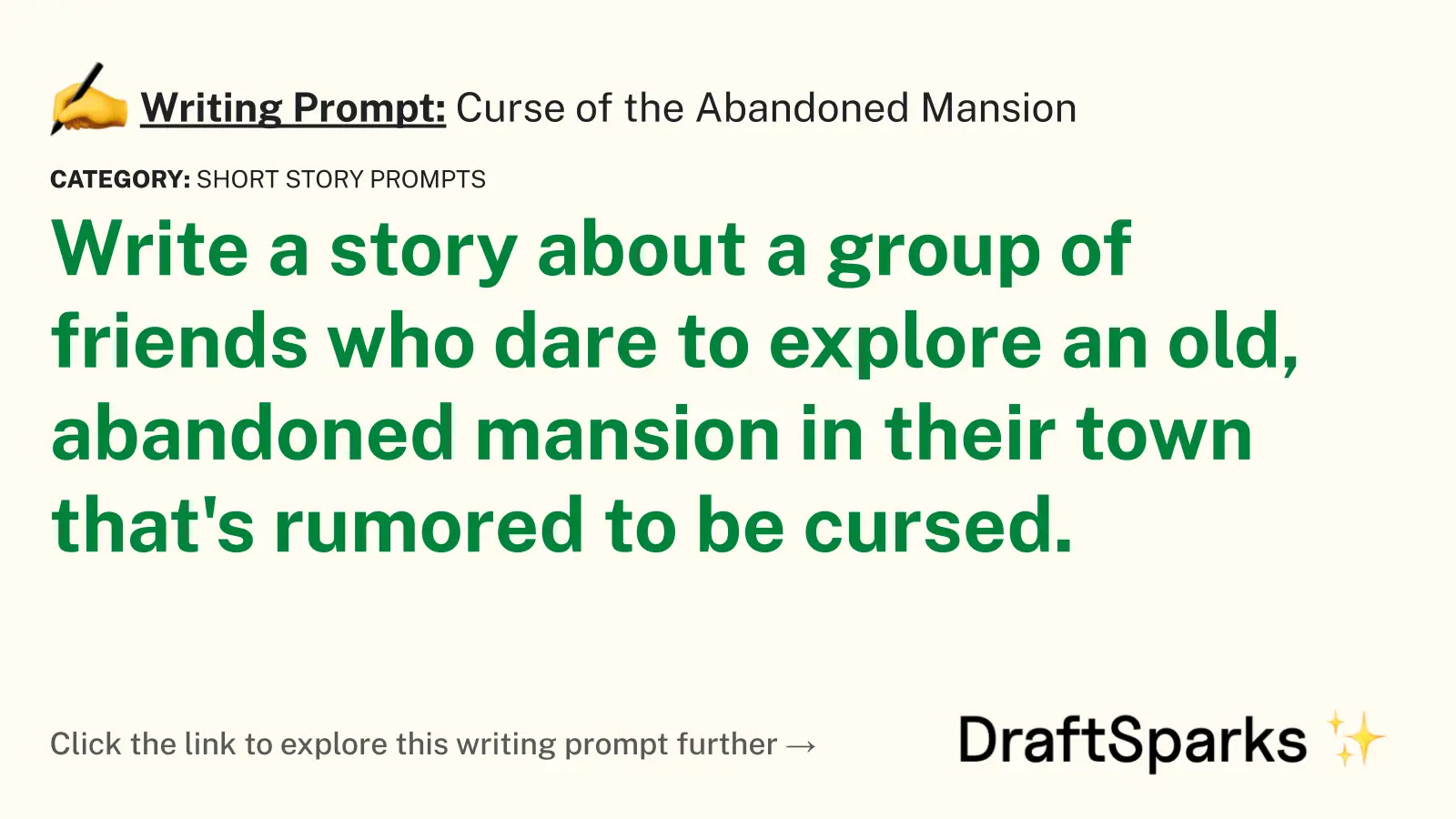
Curse of the Abandoned Mansion
Write a story about a group of friends who dare to explore an old, abandoned mansion in their town that’s rumored to be cursed.
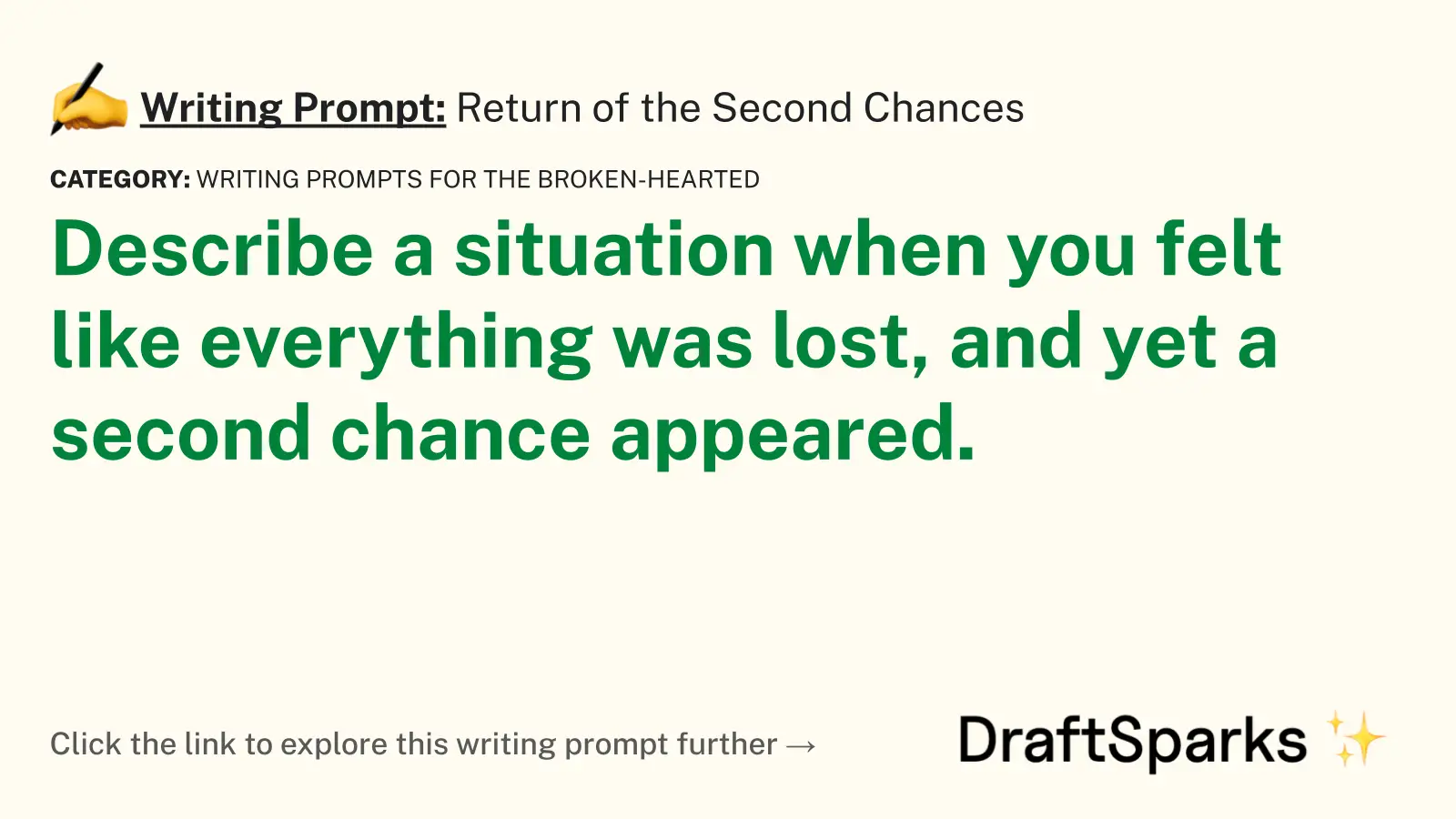
Return of the Second Chances
Describe a situation when you felt like everything was lost, and yet a second chance appeared.

The Lonely Cloud
Write about a lonely cloud you see in the sky—describe how it might feel and what could make it happy.

The Floating Island
Imagine one day you wake up to find your house is floating on an island in the sky. What adventures lie ahead?

The Story of a Raindrop
Trace the journey of a raindrop from cloud formation to returning to the sea.
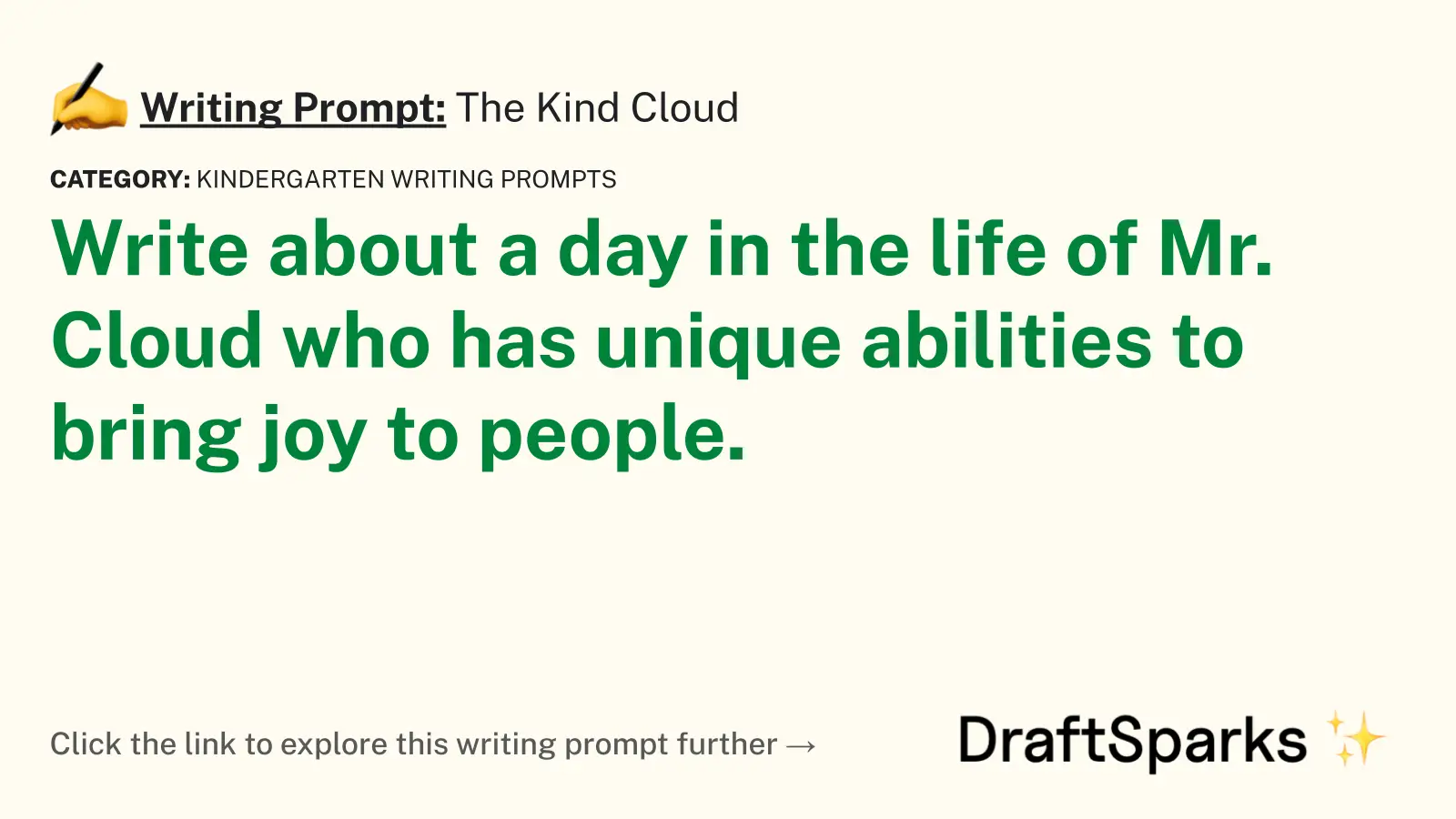
The Kind Cloud
Write about a day in the life of Mr. Cloud who has unique abilities to bring joy to people.
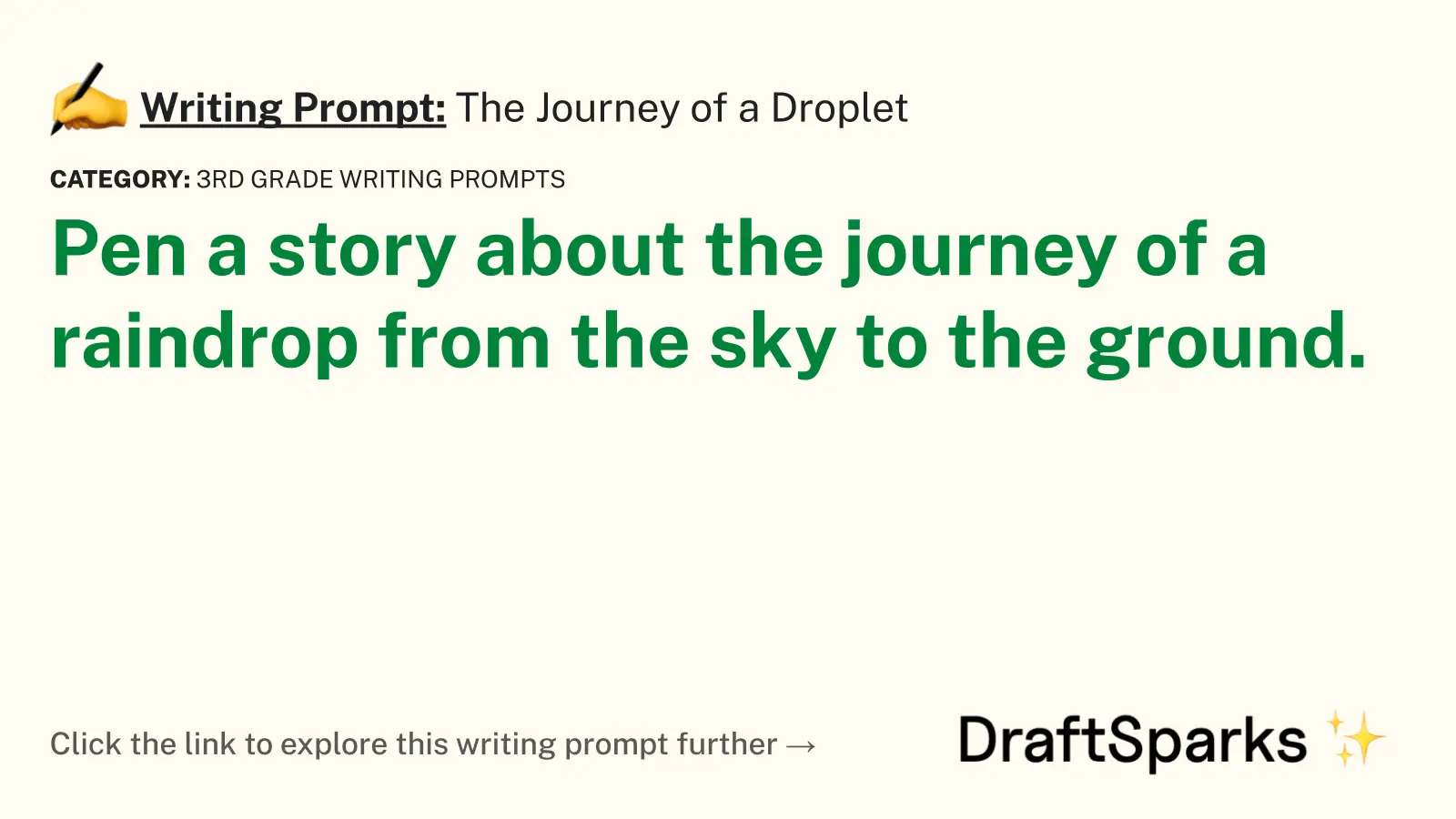
The Journey of a Droplet
Pen a story about the journey of a raindrop from the sky to the ground.

“A Day in the Life of a Raindrop”
Imagine you are a raindrop falling from the sky and describe your journey till you reach the ground.
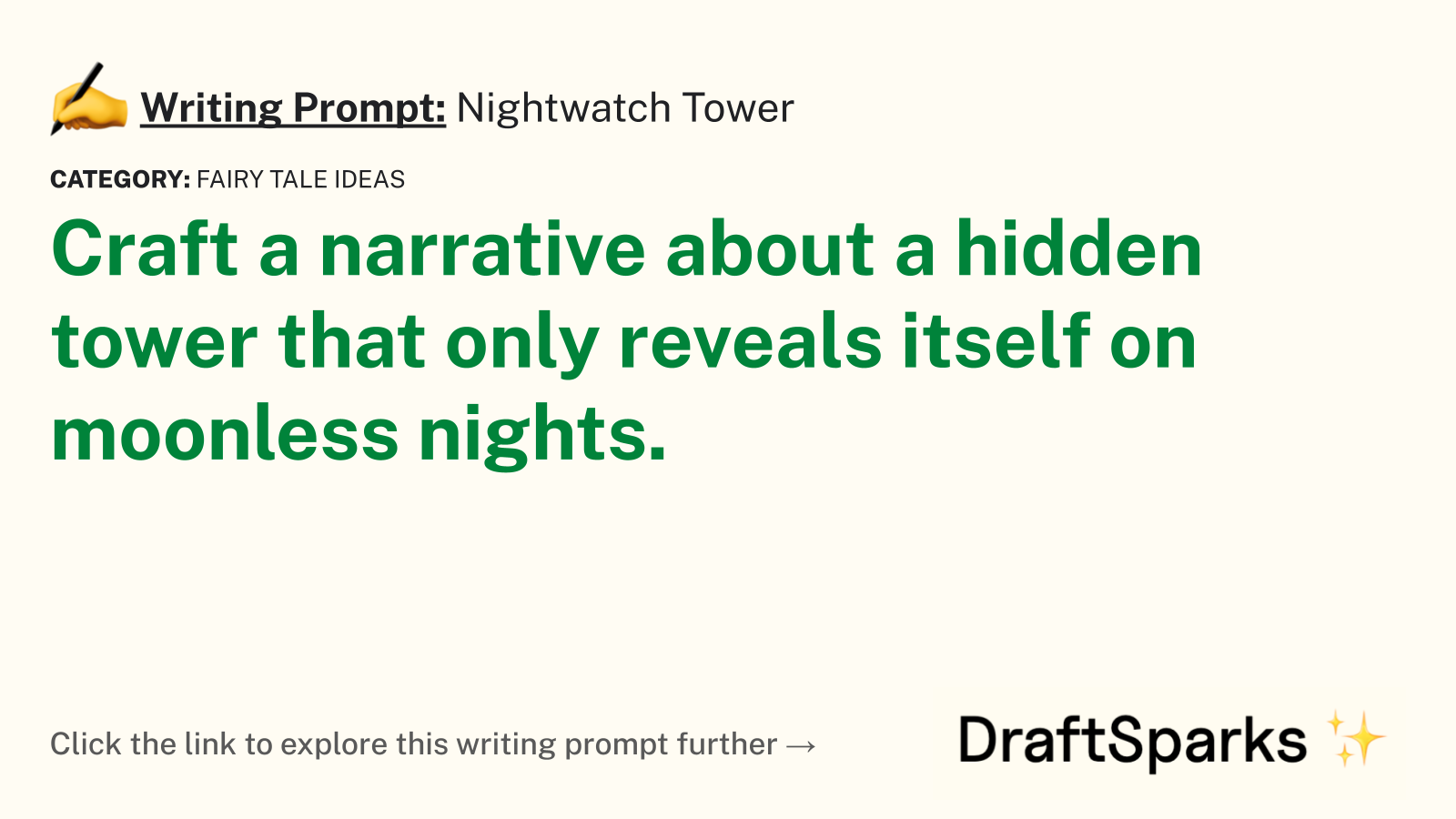
Nightwatch Tower
Craft a narrative about a hidden tower that only reveals itself on moonless nights.
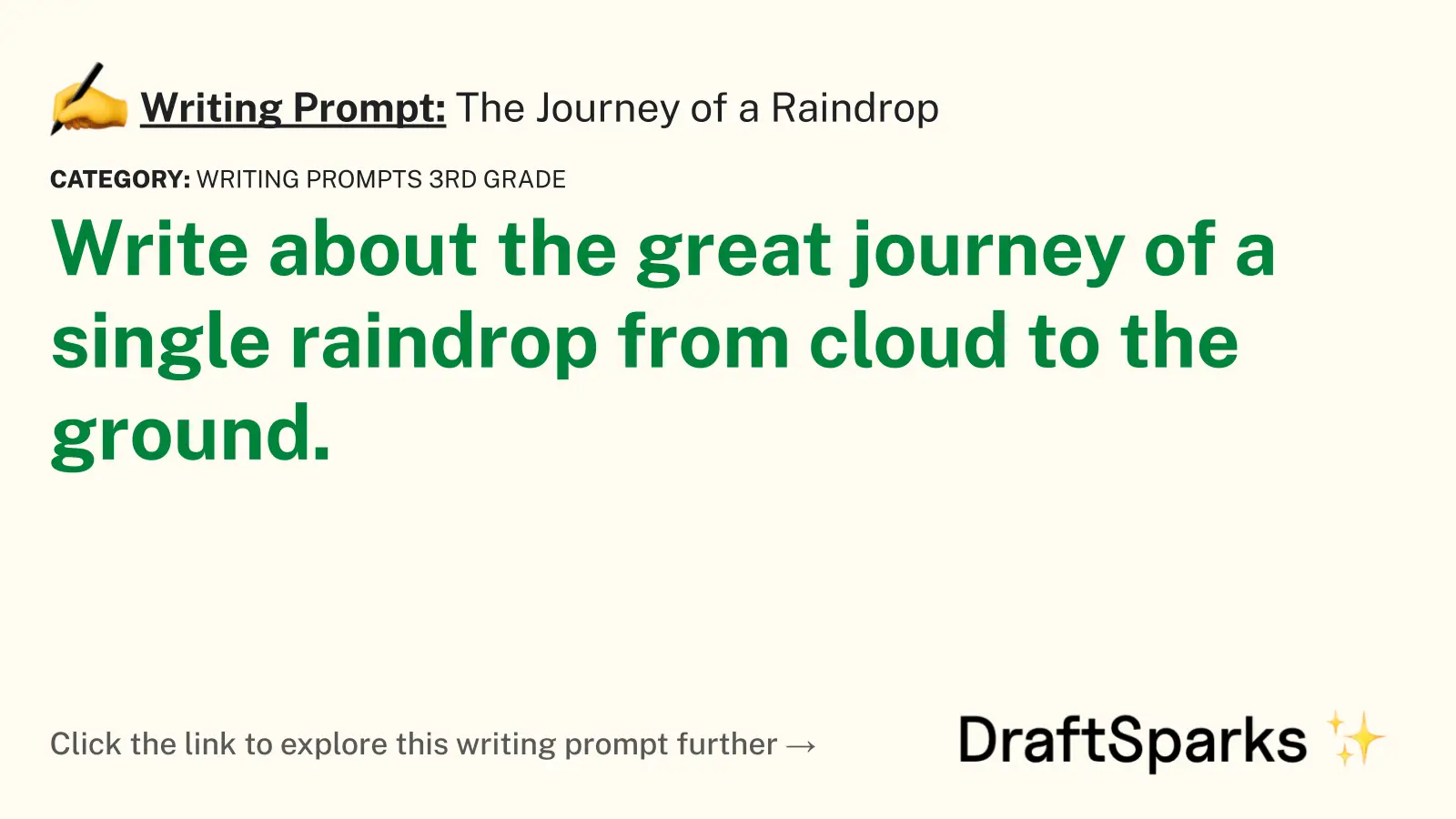
The Journey of a Raindrop
Write about the great journey of a single raindrop from cloud to the ground.

Tracking Cloud Thoughts
Spend a few moments observing the sky and describe the shapes of the clouds that you see.

Positive Spin on Change
Write about an uncertain situation in your life currently, then try to visualize and write about the best possible outcome.

Exploring the Gray Cloud
Write a letter to your depression, expressing how it makes you feel.

Evaluating Assumptions
Compile a list of assumptions you make about people, nature, society, or the world overall. Reflect on whether these assumptions are factual or not, and why you perceive them to be true.

The Light Through The Gloom
Write about a difficult situation you navigated and the positive things you saw or learned despite the difficulty.

Beauty in Negativity
List out negative experiences and write about finding a silver lining in each.
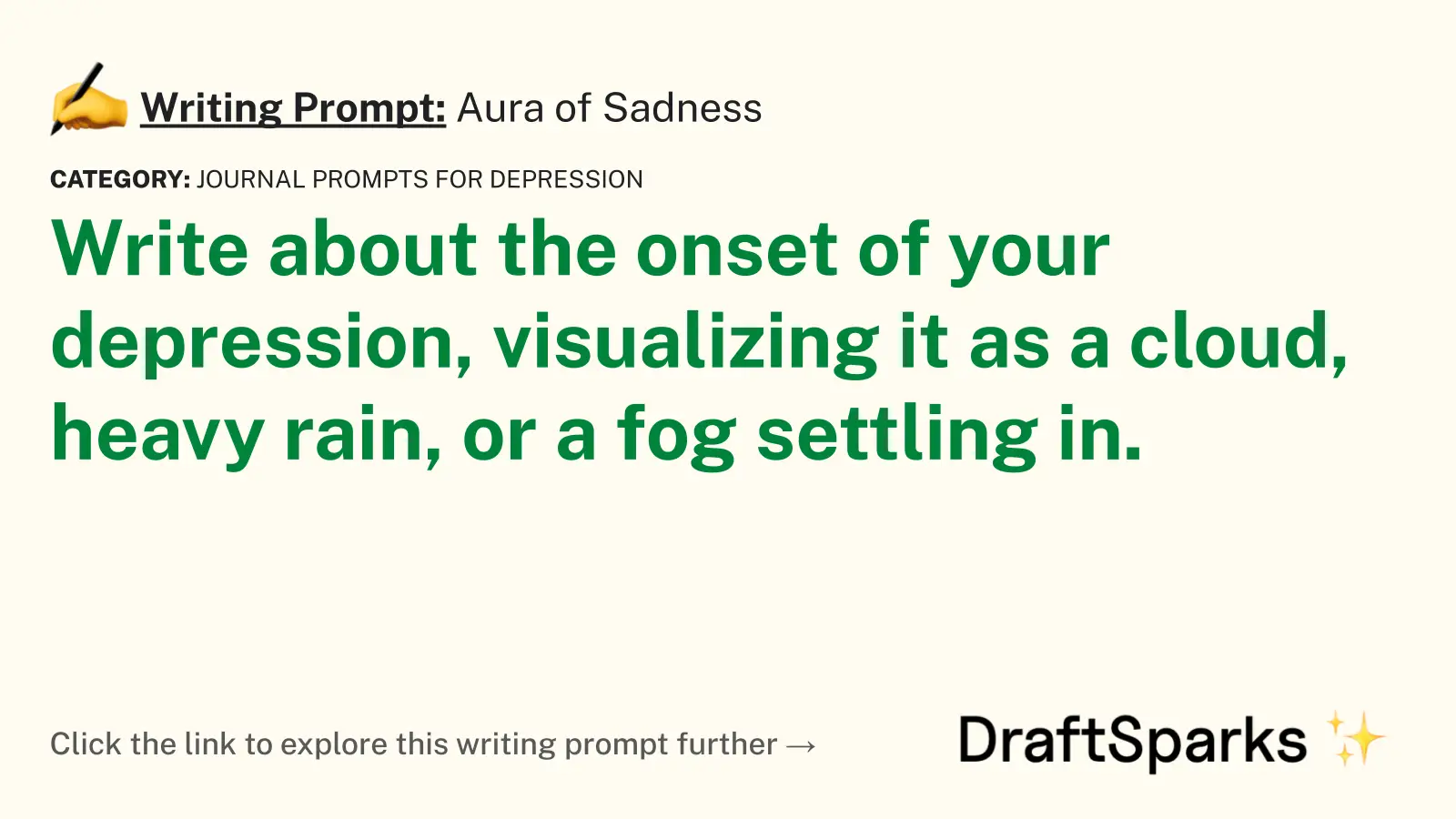
Aura of Sadness
Write about the onset of your depression, visualizing it as a cloud, heavy rain, or a fog settling in.

The Bridge of Benevolence
List five acts of kindness you’ve done and how they made you feel.

The Grateful Letter
Compose a letter to someone who has been a positive influence in your life.

Re-imagining Your Perfect Day
Describe your perfect, depression-free day.
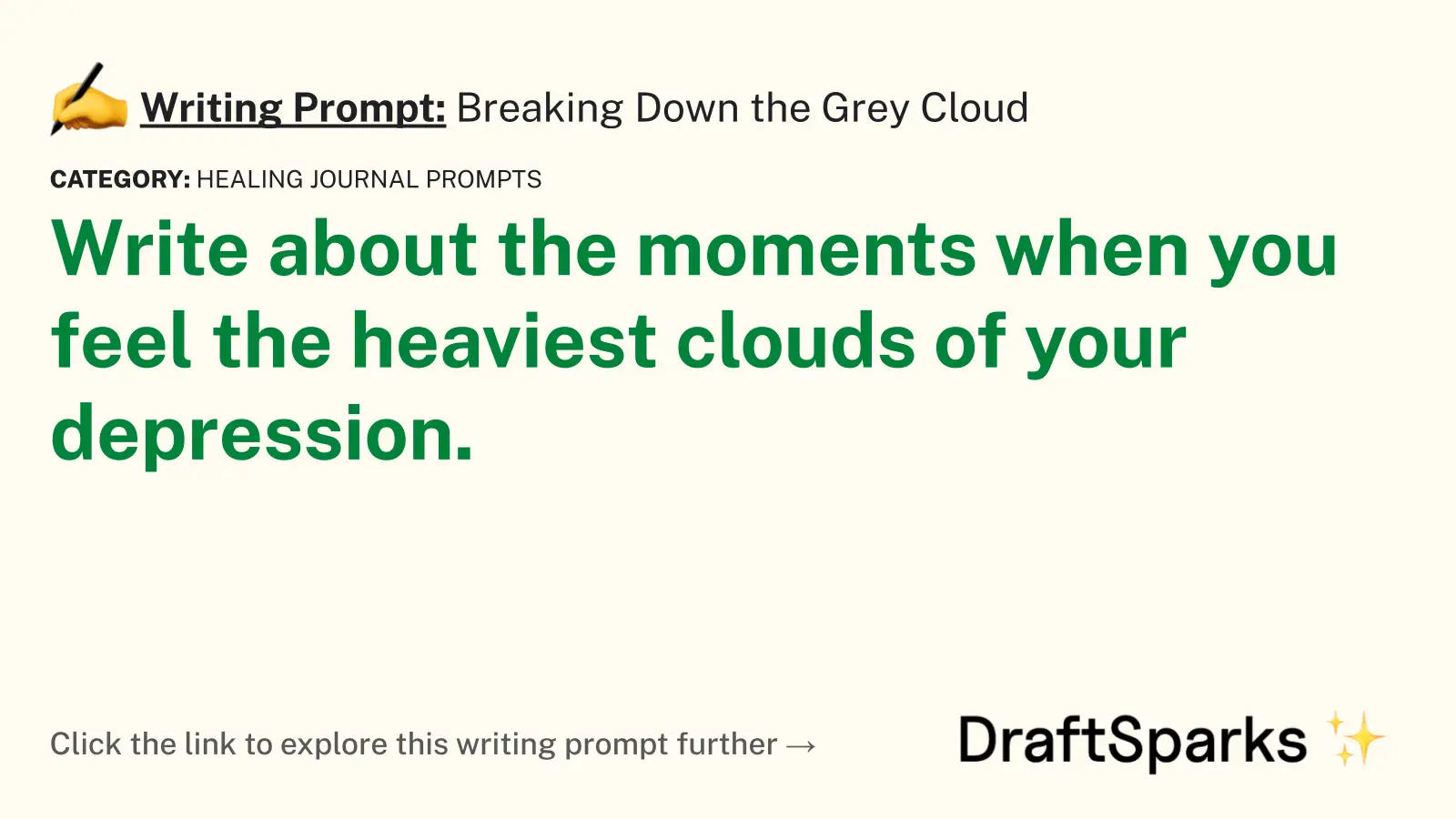
Breaking Down the Grey Cloud
Write about the moments when you feel the heaviest clouds of your depression.

The Joy Chronicles
Write about moments of joy and happiness amidst your journey with depression.
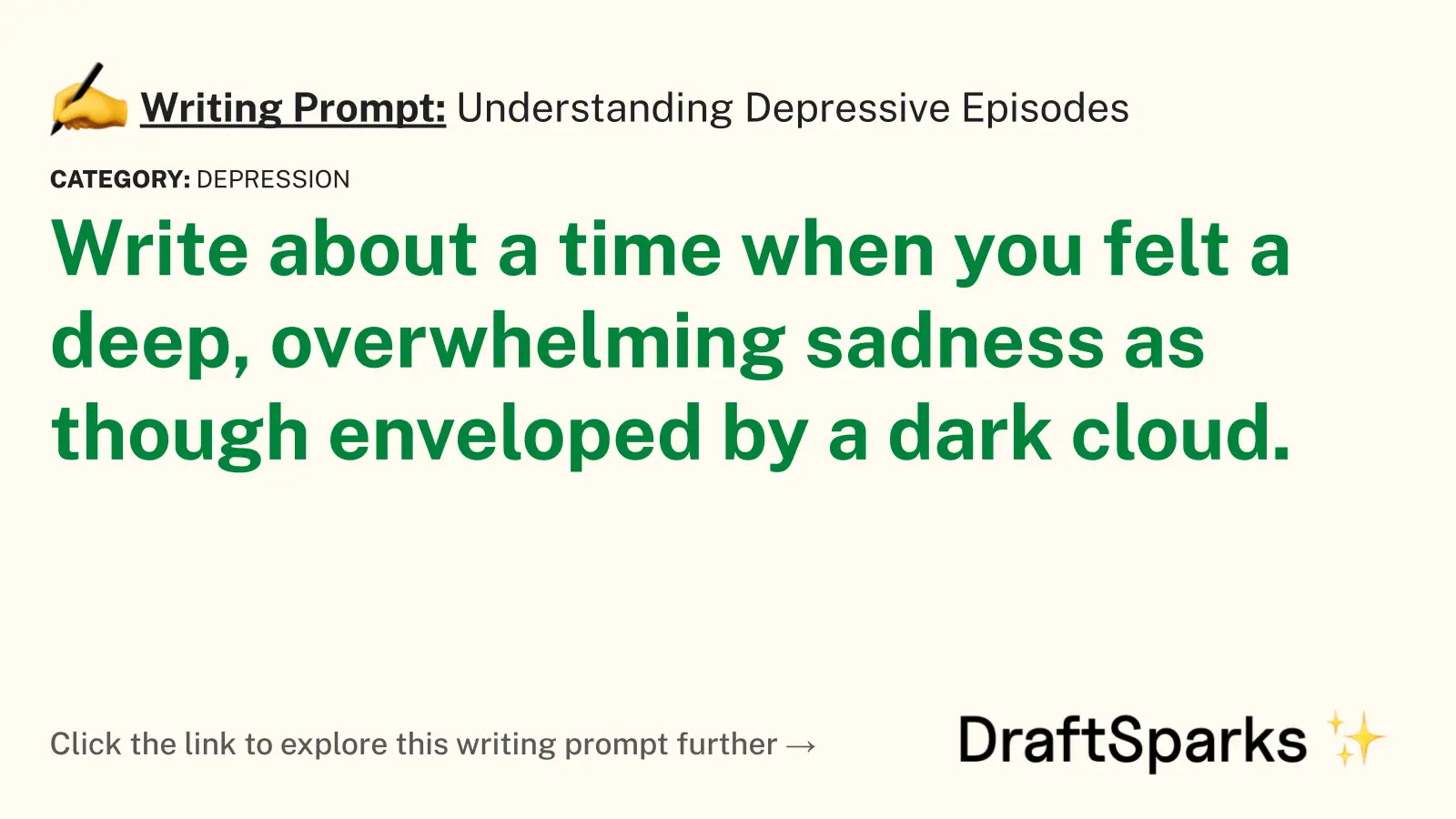
Understanding Depressive Episodes
Write about a time when you felt a deep, overwhelming sadness as though enveloped by a dark cloud.

Navigating the Dark Clouds
Write about a time you felt overwhelmed by depression and detail the strategies you used to navigate through the darkness.
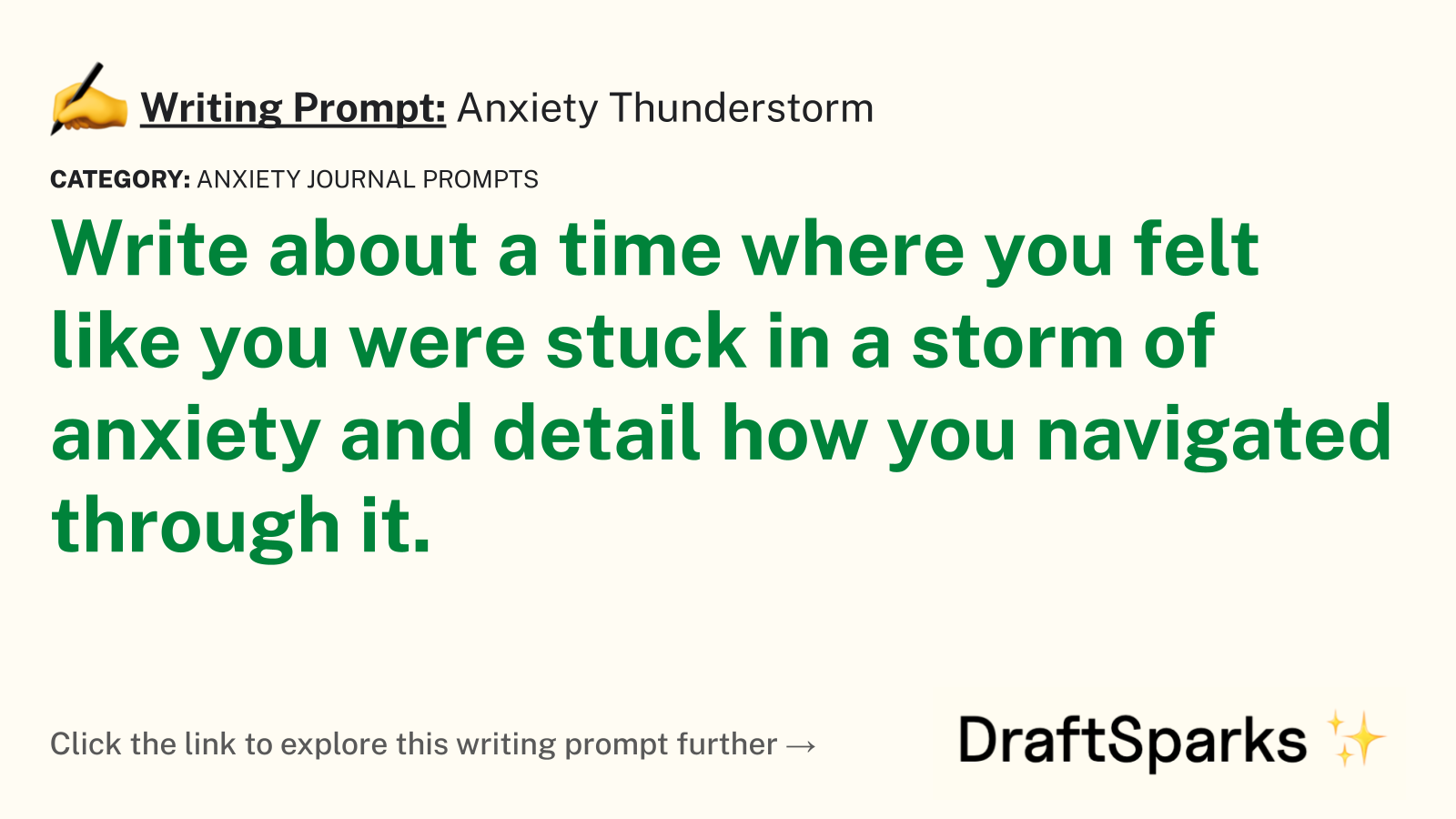
Anxiety Thunderstorm
Write about a time where you felt like you were stuck in a storm of anxiety and detail how you navigated through it.

The Joy Synopsis
Choose a moment you felt great joy and describe it with your five senses.
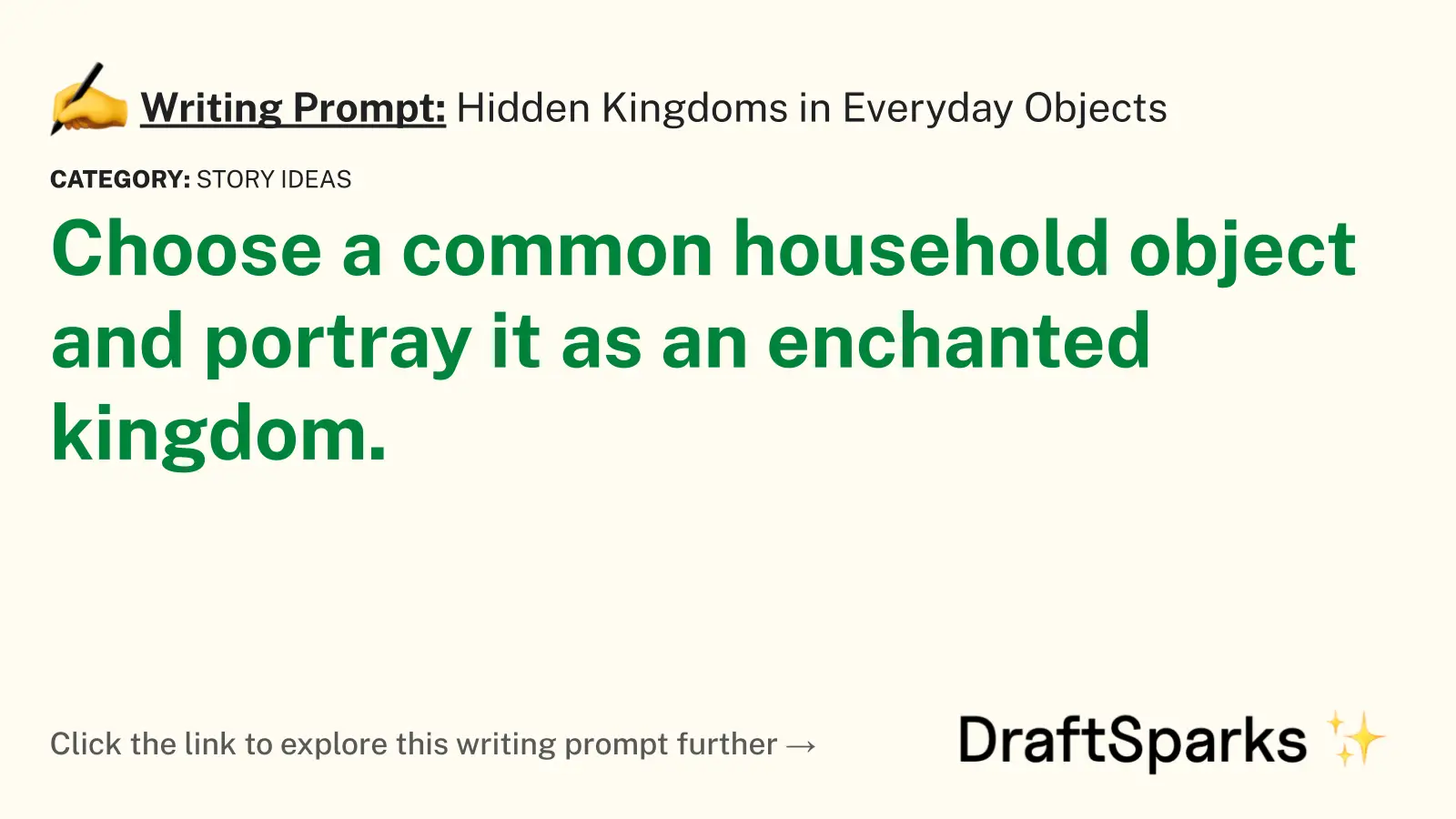
Hidden Kingdoms in Everyday Objects
Choose a common household object and portray it as an enchanted kingdom.

Journey of a Raindrop
Tailor a poem that narrates the journey of a raindrop. It can begin in the cloud and finish as it hits the ground, or even further.
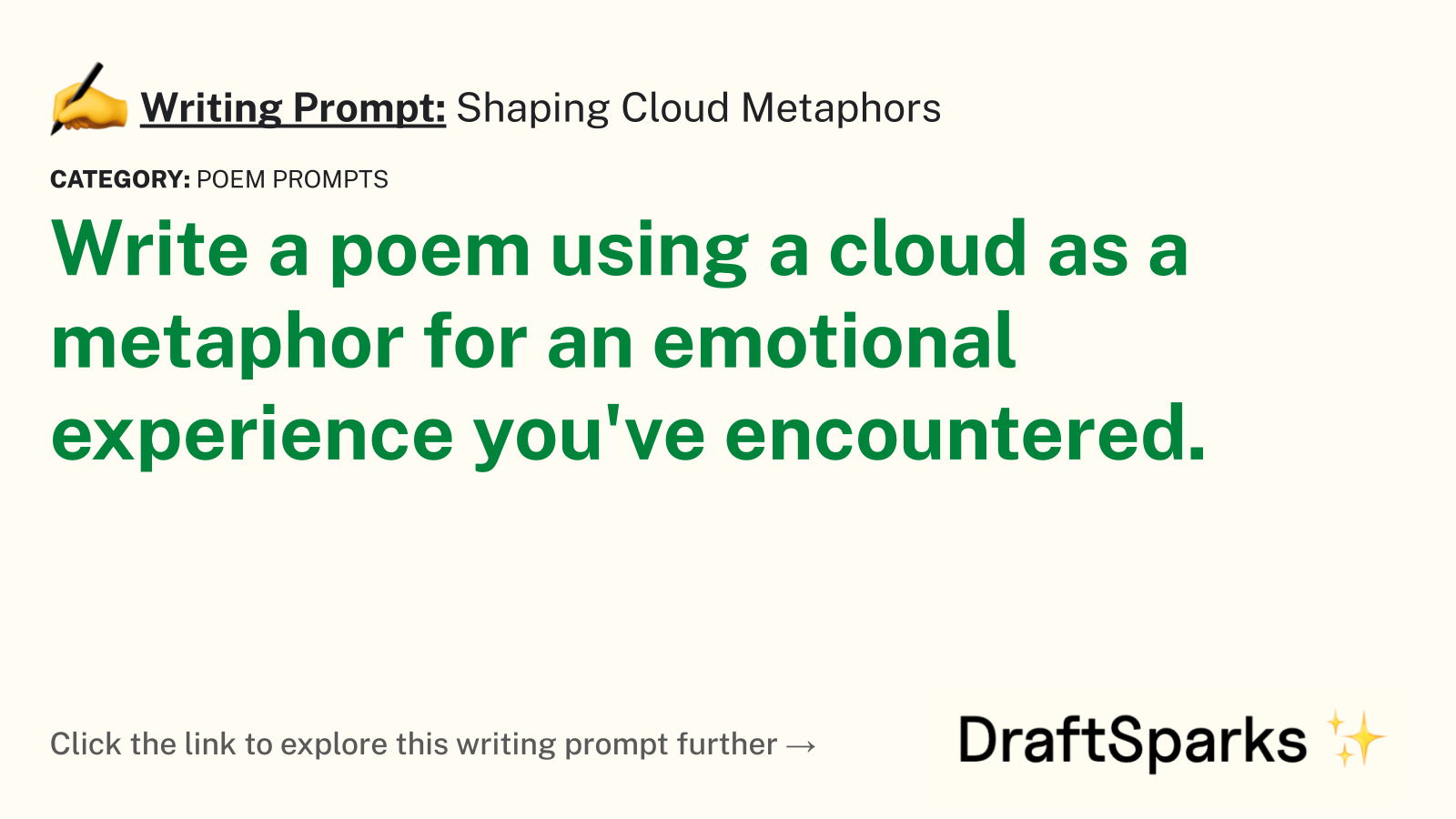
Shaping Cloud Metaphors
Write a poem using a cloud as a metaphor for an emotional experience you’ve encountered.
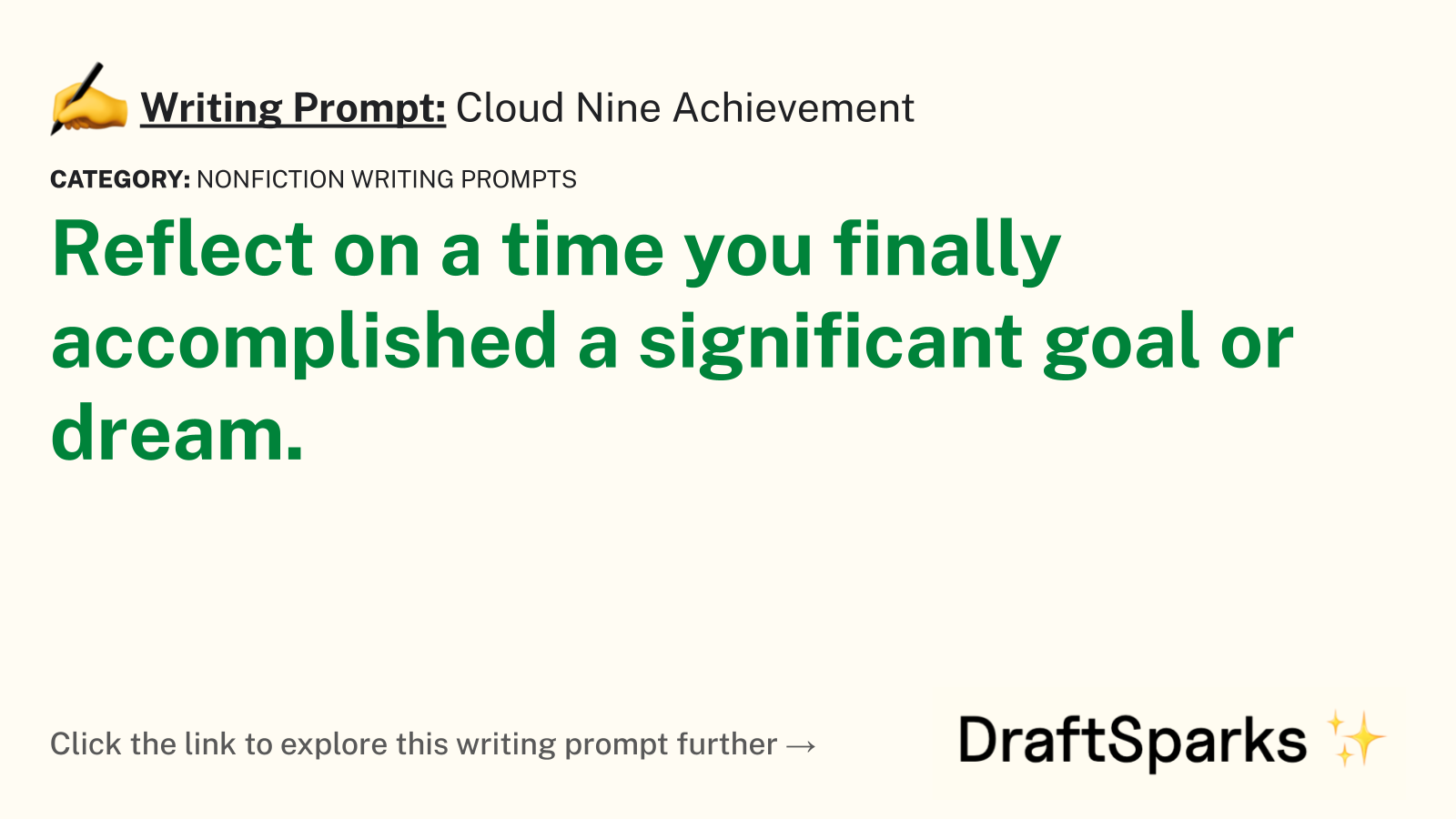
Cloud Nine Achievement
Reflect on a time you finally accomplished a significant goal or dream.
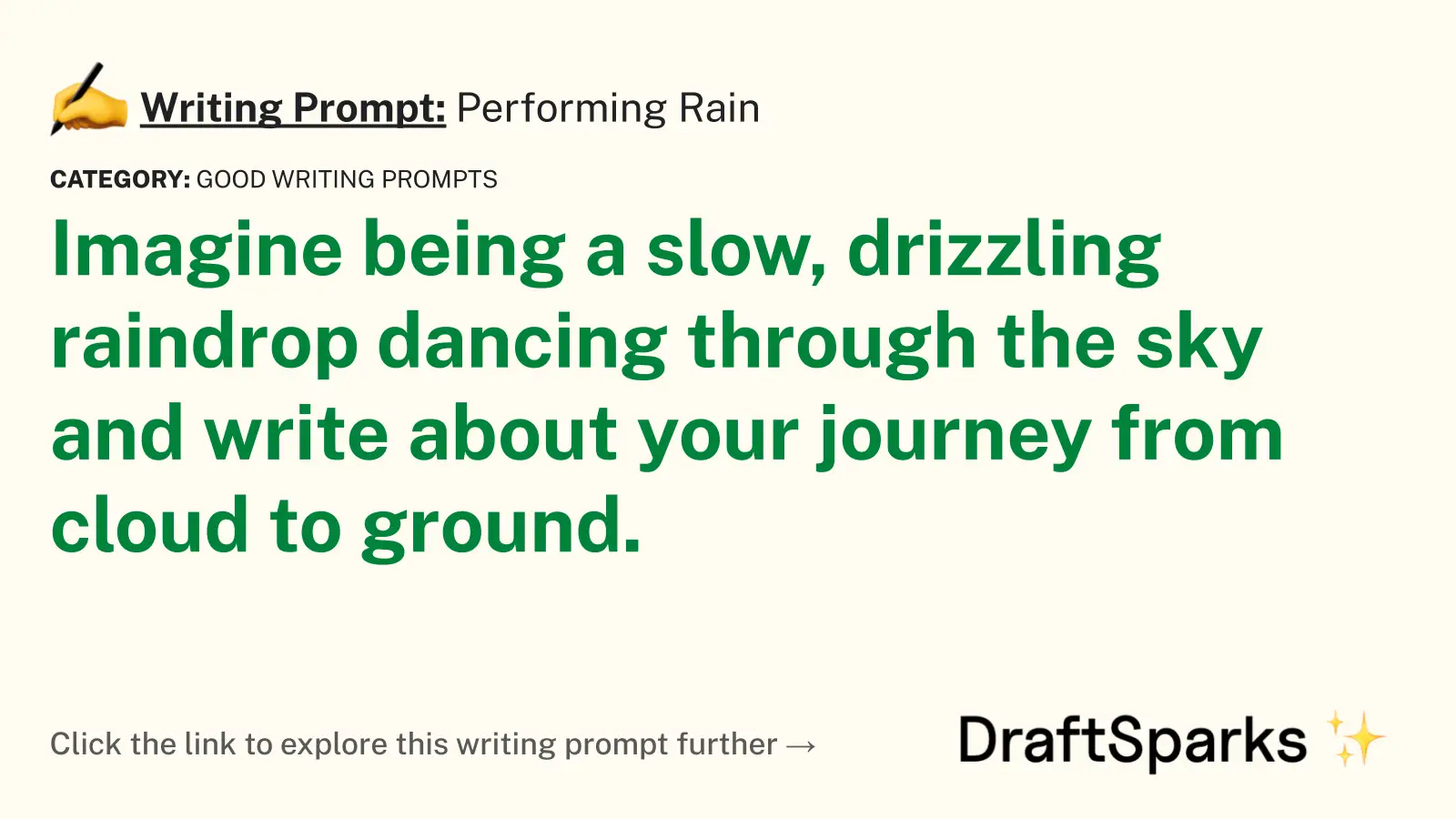
Performing Rain
Imagine being a slow, drizzling raindrop dancing through the sky and write about your journey from cloud to ground.
- About NaNoWriMo

National Novel Writing Month is a 501(c)(3) nonprofit that believes your story matters. Welcome to our blog! We're so glad you're here.
The Do’s of Writing People of Color: Describe Your Characters
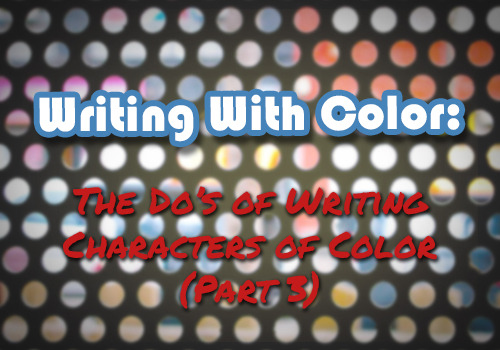
Diversity makes stories better, plain and simple. This year, we’ve partnered with the good folks at Writing With Color to get some advice on how to write stories populated with people of all racial and ethnic backgrounds. In the third part of her “Do’s of Writing People of Color” sub-series, founder Colette Aburime goes over how to describe characters of color in your writing:
One key to strong representation is making the race of your characters undisputedly clear. So clue your readers in! Not only is it nice for People of Color to read descriptions of themselves as awesome everyday people, but there’s a consequence to being vague: Most readers will assume the characters are white.
Society ensures we view white people as the default. That default human is probably also straight, cis, able-bodied, etc. until proven otherwise. This way of thinking won’t dissolve overnight.
When describing your characters
- Make their races clear early on once they’re introduced.
- Sprinkle in a few more reminders throughout the story.
Ways to show race:
- Physical descriptions - You can describe hair, skin tone, and facial features to create a picture for readers. It isn’t foolproof, though. For example, dark brown skin and curly hair may point to a Person of Color, sure, but not an exact race or ethnicity. It’s wise to pair physical details with other means.
- Culture - Cultural elements can seamlessly indicate race. They’re already part of your character’s identity, so it’s bound to come up! Think family names, clothing, holidays, traditions, language, food, heirlooms…
- Social issues - What social issues directly affect the character? What about relatives in other countries? Even a national disaster could show background, like a hurricane affecting your character’s family in Mexico.
- Activities - The character could be involved or have met someone through a PoC-specific organization. Think student unions, activism, local businesses Facebook groups, professional meet-ups…
- Cover art - If your book cover features your characters, I urge you to make sure they look the part. Even if you have little say in the final product, remind your publisher of their races and ask they take care to be accurate. Say no to white-washed book covers!
- Say it in story - Don’t be afraid to just state it. I highly recommend doing so at some point in the story. There’s many ways to work in a mention. Create a situation that makes sense to the story. See these examples:
- “The woman turned to face me. She was Black, I think, with a short coily afro and a dimple in her smile that took my breath away.”
- “It felt awkward, being the only woman in the room, let alone an Indian woman.”
- “I was born of a Korean mother and a German father.”
- Say it outside the pages - These days allow more interaction between authors and their readers. Use social media or a webpage to share character profiles, your celebrity dream cast, share commissioned art, and clarify questions.
Use one or more of these methods. At the least, I recommend a combination of physical descriptions and outright stating race whenever the story allows.
Characters of Color in Fantasy
Alternative or fantasy settings may have different concepts of race. Perhaps there’s no word for human ethnicities or countries. Never fear—racial coding is here! Racial coding means providing hints that your character is the equivalent of a human race. You can use physical, cultural and geographical parallels to help readers make a conclusion.
Now, go forth and describe your characters. We wanna see them!
Related Articles on Writingwithcolor:
Describing Characters of Color:
- Writing With Color Featured Description Posts
Fantasy Coding Advice on Writing With Color:
- PoC in Fantasy When Their Country/Continent Doesn’t Exist
- Describing POC without stating Race
- Writing With Color “Coding” Search

Colette Aburime is the founder of WritingWithColor, a writing advice blog focused on diversity. She studied creative and professional writing in college, and writes (or rather, dreams of writing) in her free time. Colette is a big fan of romance and fantasy and lives out her fairytale in a humble cottage in Minnesota’s Twin Cities. She spends happily ever after with her prince, plants, and a feisty cat. Check out WritingWithColor on Tumblr and Twitter .

- ')[1].split(' ')[0]; if(window.tumblrNotesLoaded)if(tumblrNotesLoaded(notes_html)==false)return;var more_notes_link=document.getElementById('more_notes_188519134840');var notes=more_notes_link.parentNode;notes.removeChild(more_notes_link);notes.innerHTML+=notes_html;if(window.tumblrNotesInserted)tumblrNotesInserted(notes_html);}};tumblrReq.open('GET','/notes/188519134840/DNvWC8Ee3?from_c=1611442747',true);tumblrReq.send();return false;">Show more notes Loading...
Observer theme by Zack Sultan
Writers in the Storm
A blog about writing.

Writing About Hair: The Thick and Thin of Descriptions

You all are getting another peek into my magic notebook. This time we're taking a page out of my 17 page section that covers hair, wigs and every description of body hair you can imagine (and probably some of you can't). Now that I've scared you, we're going to talk about the hair on your character's heads - the color, the length, the style . . . We're covering it all. But there are a few very important points we should chat about first.
The #1 thing about hair descriptions is Do Not overuse them . You do not want to be known as "hair girl "or "hair boy!"
#2 on the essential List: Hair descriptions are a part of the character so make them work harder by using them to describe the person “inside,” not just what the person looks like outside.
- A tomboy might have a very short, non-nonsense haircut. Then again, she might hide long tresses under a ball cap, because secretly she’d like to be noticed as the girl she really is.
- A man who works as an executive might conform to a short, and very tailored look. Or, he wears expensive suits but he wears his hair a little too long because on the weekends he caters to his passion and joins his buddies for motorcycle road trips.
Okay, because I have so many descriptions and definitions, I’m going to cut to the chase.
Alternative Generic Names For Head Hair
Coiffure Curls Down Fringe Fuzz Locks Mane Mop Ringlets Shock Strands Tresses Tufts Wig Wool
Descriptive Hair Phrases
Bangs obscured her eyes like a sheepdog Flaked with snowy dandruff Bleached, bottle baby Braid like a thick black rope Bundled at the nape Bun resembled a cow patty Cascading down her back Chemically damaged Coiled in a top-knot Crowning glory Cupie curls Curls foamed luxuriously Tendrils danced on the breeze Disheveled Downy bond hair sprinkled her arms Dramatic widow’s peak Elaborately dressed with ribbons Electrified Smelled like burnt chicken feathers Snow drifts of dandruff Veiled her expression with Greased into a ducktail Flaming locks fluttered to the floor Fluffy Frizz job, bad perm Glossy locks lifted on the wind Grew like a thatch of straw on a roof Grizzled, gray hair Hair drooped around pale cheeks Hair like Rapunzel Hairy as a dog Hung like a dark river Kinky perm Knotted Left unbound to tumble Like a clown wig, artificial red, plastic shine and fuzzy Like a thatched roof Like she put her finger in a light socket Limp and lifeless Long, shaggy hippy look Lustrous as onyx stone Marcelled into fingerwaves Matted to the scalp Perm fried Prematurely gray Puffed like a bubble around her head Ragged bangs Rat’s nest Ringlets Shock of hair stood straight up Slapped her face like wet worms Sleek and chic Smooth honey dripped over her shoulders Spiky Mohawk style of a punk rocker Spilled out of the hat Spread like feathers on a pillow Standing on end Stiff in front like a cockatoo Straight as a wire Streaked, highlighted Stuck to her sweaty nape Tangled mane Tousled pixie Two-toned dye job Unconquered curls sprang loose Unruly swirl Old-lady blue rinsed hair Vibrant color and shine Wet with sweat White Pigeon Wings at temples Wispy ringlets Wondered what rubble lay beneath that mess Wreathed her face
Hair Texture Phrases
Baby fuzz Bleached hair like mushy wet works Blue feather hair of old lady Bristle top Broom chopped Cat-fur fine Cotton candy hair, fine Cottony Dandelion fuzz Down Gummy Horsetail coarse Moldy hay Short-cropped and stiff Soft and lush Soft curls and waves Yellow straw
Descriptive Hair Color Words & Phrases
Coal Crows wing Ebony Jet Indian Ink Midnight Obsidian Onyx Raven
Grays and Whites
Battleship gray, dull gray Blue dandelion fuzz Blue rinse gray Faded glory Flint Grizzled (gray) Gunmetal Maltese gray (blue gray) Mineral Mousy (gray) Pewter Salt and Pepper Shale Silver cloud Smoke Snowy white Swan’s wing Steel Wood ashes
Amber (reddish) Ash brown Auburn (reddish) Baked Clay Bison Brunette Burnished Camel Caramel Chestnut Cinnamon Clove Dark beer Dark Earth Dark toffee Dirt Fudge cycle Glazed ginger Maple Sugar Mink Mousy Muddy Nutmeg Pecan Rawhide, dark reddish Root beer Russet Tobacco Tortoise Shell Walnut
Auburn Berry Brassy Brightest Burgundy Burnished copper Carrot top Cinnabar Clown wig red Cognac Dull brick Flame Garish brass Orange Russet Scarlet Strawberry Wine
Professional Hair Color Descriptions
Ash blond -- Lacks red or gold highlights (verges on green tones); light mousy blond, medium and dark blond, dishwater, beige
Ash brown -- Browns lacking warm/red tones tones; light mousy brown, medium and dark brown
Black -- Different shades of black vary according to the amount of highlighting or pigmentation shadings present in the hair; black lacking all highlighting will be duller, ash shade; black containing a lot of red may appear as deep burgundy
Red -- Warm shades; berry, russet, strawberry (red-blonde), rusty orange, wine, carrot top, etc.
Towhead -- Whitish blond; usually an ash blond lacking warm tones but not always
Warm blond -- Blond with touch of gold and red; whiskey, wheat, honey, strawberry, brassy, golden etc.
Warm brown -- Brunette, dark or light brown that contains red or gold tones; varies from light to nearly black; reddish brown, chestnut, dark amber, auburn etc.
Hair Styles Modern And Historical
It’s impossible to name all the hairstyles but the selection here should be a good start. Many listed here also are known by other names.
[See of some these hairstyles here .]
Afro -- Unisex style borrowed from the African Americans; short and very curly, forming a bowl shaped profile; a pick is used to pull the hair away from the head and shape it
Asymmetric -- Hair is cut long on side of the head and short on the other.
Bedhead -- Popularized in 1990s by starlet Meg Ryan; short to mid-length shaggy cut worn jelled or moussed in tossed fashion
Beehive -- A 60’s French twist coiled at the back of the head and rising above it to form a cone shape (see upsweep)
Bob -- Introduced in 1915 this short cropped hair style was popular during the 1920’s; also called the shingle bob, the shingle, the Eaton crop. It is often cropped at the jawline and aligned close to the face.
Bouffant -- Puffy hair style’ hair is backcombed or ratted then barely smoothed, resulting in a bubble affect
Bowl -- Most commonly worn by young boys. The bang area cut straight cross the forehead as if measured by turning a bowl upside down on the head. The top layers are longer and cut along the this bowl line around the head.
Braid -- Plaited hair
Bubble -- 60’s hairstyle, short to mid-length, ratted/backcombed to appear like a football helmet or bubble surrounding the head
Butch/flattop/crewcut -- A man’s style; usually cut with electric shears; very short and stands on end at the front of the head and his shaved close to the head on the sides; sometimes called a GI cut.
Buzz - Modern slang for a hair shaved close to the head
Chignon -- Bun, usually at the nape or top of head; topknot
Conk -- African American textured hair that is straightened
Cornrows -- Small tightly braided rows of hair that hug the scalp; most often worn by African Americans
Duck tail -- 50’s style worn by girls and boys alike; hair on either side of nape combed toward the center of the head; reminiscent of Elvis Presley, Fabian, Doris Day, Debbie Reynolds etc.
Farraha Fawcett -- Long layered hair flipped or feathered back off the face with a bang that feathers or rolls off the face as well; made popular by the TV star of the same name; late 70’s and early 80’s
Finger waved -- Usually short haircut in which a stylist uses lotion and her fingers to create deep waves that circle the head. Popular in the 1920s and 30s.
Flip -- Feminine hair style of the 50’s and 60’s; long hair usually shoulder length turned up at the ends, sometimes in a roll.
Fontange -- Worn 1690’s to 1710; a towering fountain of frills and complex, lacy intertwining shaped around a wire frame and considered the height of fashion; nicknamed by disdaining men, the “tower and the comet”
French twist/seam -- Hair swept back from both sides the head (front to back) and rolled down the center of the head into a roll or tucked to make a seam
Fringe -- Curly bangs worn in the 1880’s; in 1900’s worn straight; alternate name for bangs
Kiss curls -- Seen immediately after Civil War; ringlets of curls on the cheeks or forehead
London Cut -- Short female cut popular during the 1960s and early 70s. The hair was cut over the ears, leaving a fringe in front of the ears, often brushed toward the face or straight down. The nape hair was cut along the hairline like a boys but more rounded instead of squared off like a man’s neckline.
Mohawk -- Shaved head with a strip of hair growth down the center of the head from forehead to the nape
Pads -- Late 1830’s long coiled curls over the ears (looked like ear muffs); at the back of the head they were called a Grecian knot or psyche knot
Pageboy -- Introduced in late 1930s early 40’s; long, hair turned under, usually just touching the shoulders
Pigtails -- Same as pony tail only the hair is parted down middle and each section is cinched into its own tail above or below the ear
Pixie -- Female short cut; feathered around profile of face and onto cheek, short at the nape line; usually with full bang and combed forward onto face; also called an Italian cut; permed version called a poodle cut
Pompadour -- Style of wearing the hair high over the forehead usually in some type of rolled affect; in 1940’s women used rats (nylon mash) to roll the hair off the forehead and puff it; a version of this also worn during the 1700’s and early 1800’s by most and women; name comes from a lady of this era called Madame Pompadour
Ponytail -- Hair gathered together and cinched with a rubber band or barrette to make a tail at the back of the head; worn high or low; worn low it’s sometimes called a George (referring to George Washington) or a Paul Revere
Poodle cut -- Short, curly haircut
Powdered hair/wigs -- Unisex style worn from about 1760’s to 1820; after 1740 men were wearing shorter, simpler wigs and began to powder their own hair
Punk -- Usually short on top and styled with lotion to stand up off the head; often a mohawk fashion from forehead to nape; sometimes dyed bright neon colors of pink, purple, blue, orange etc.
Queue -- Pigtail, esp. that of a Chinese. (Chinese queue was braided) Men of Colonial America wore these as well, usually tied back with a ribbon and in some cases men wore a periwig styled with a queue
Roach -- Hair brushed into a roll
Sausage curl -- Long tube-like coils of hair; popular in early 1800’s; in the early 1970’s these were piled on top of the head in a cluster, esp. for formal dress for teens.
Shag -- Like a pixie, only long at the nape. Lengths vary from short to long layered cut; popular during the early 70’s
Skin heads -- Group of radical racist youths, men and women alike, who shaved their heads
Spaniel’s curls -- Late 1840’s into the 50’s; long thick curls worn by the ear (as worn by Elizabeth Barrette Browning)
Spit curls -- First seen in 1831; flat curls on women in front of the ear
Tonsure -- Shaven part of a monk or cleric’s head
Updo/upsweep -- Generic term for long hair styled high on top of head; hair might petaled (layered curls), barrel curled, arranged in a chignon, backcombed into a beehive or styled in French roll etc.
Wedge cut -- Also called Dorothy Hamill cut; short cut worn mostly by women; sides feathered off the face, back cut longer from the drown to the occipital bone, where its layered into a wedge; nape is trimmed close the head and short; a late ‘70’s and early 80’s style.

Sharla has published three historical romances and her fourth, How to Fell a Timberman, is impatiently waiting to be formatted for Kindle.
When she’s not writing and researching ways to bedevil her book characters, Sharla enjoys collecting authentically costumed dolls from all over the world, traveling (to seek more dolls!), and reading tons of books. You can find Sharla here at Writers In The Storm, on Twitter at @SharlaWrites or on Facebook .
25 comments on “Writing About Hair: The Thick and Thin of Descriptions”
Thanks for sharing this wonderful list, along with the great pic!
Thank "you" for dropping by Erin.
Sharla, once more I must say ... you are amazing. How in the world do you do this ?? Reading your posts is like having our own personal writing coach. Each element of each writing technique in such amazing detail, that I need a workbook for your posts only.
Thanks ... everything I ever wanted to know about hair 🙂
Thanks for such a great compliment! Glad you enjoy my lists.
Goodie, another list of descriptions to add to my personal long list. Thanks so much for posting this - you save all of us a lot of long hours researching those perfect terms/descriptions for our manuscripts. Always, V
Glad you like the list Virgina. I wasn't kidding when I said I could only post a section of my hair list. But I figured you guys would be most interested in this one. 🙂
You've done it again, Sharla. The descriptive range you provide for such everyday characteristics is beyond impressive. Thanks.
Wow, you just made my top of the list for awesome. Thank you for all the work, and sharing.
Thank you ladies for stopping by. I'm happy to share. That's the best thing about being a romance writer. We share. 🙂
Wow! I'll never look at hair the same again.
Thanks Janie and thanks for stopping by WITS today.
Sharla, Thanks for the detailed description of HAIR that all writers can use in their stories.
what a helpful library you've created for hair. thank you
Thanks for posting such a useful resource! I made my own reference table, leaving a space for blonde and bald 🙂
My characters will never have a "bad hair day again!" Unless it furthers my plot, of course. 🙂
Thanks for taking so much time to compile these lists for us. It's so appreciated.
You are all welcome ladies. Now I wonder if I should tell my daughter, I used her punk hair style for my blog today. 🙂
What a great collection of facts! Thanks, Sharla! One of my characters, a Las Vegas showgirl, wears her hair in a "bob." Now I know what to call it.
Thanks for opening up your magic notebook, Sharla. I tend to get in a rut with hair and eye descriptions.
Thank you, wonderful descriptions. In Australia we also have (or had, it's a bit retro), a men's style called "short back and sides", like a crew cut but not as short. It was a conservative style that was the socially acceptable opposite of long hippy hair in the nineteen sixties. Hair styles carry a strong social message.
I love this regional information. Every country is different and sometimes even states here in the US. Thanks for sharing.
Very informative and fun, Sharla! I write stories set in the 15th century, and you included descriptions that I can use, also. Thanks for sharing!
Thanks. I write American historicals so I wanted to include styles from the past. Also I think sometimes it's fun to refer to old styles even for contemporary stories as they make great descriptions themselves.
This will save time I would have spent googling--thank you!
Your welcome Toni. You can find pictures of many hairstyles at the link I included above if that helps.
I must admit I only skimmed this, but I pinned it. It's an excellent resource. Thank you!
Subscribe to WITS
Type your email…

Recent Posts
- Indie Publishing 101: All Things Editing
- Sometimes it's more important NOT to do that good thing
- Book Blurbs That Sell
- Love or Hate 'em Sometimes a Prologue is Needed
- Dead Zone Ahead: The Sagging Middle
- Ellen Buikema
- Jenny Hansen
- Lynette M. Burrows
- Lisa Norman
Copyright © 2024 Writers In The Storm - All Rights Reserved
- International
- Schools directory
- Resources Jobs Schools directory News Search

Descriptive Writing - Clouds
Subject: English
Age range: 14-16
Resource type: Worksheet/Activity
Last updated
16 December 2016
- Share through email
- Share through twitter
- Share through linkedin
- Share through facebook
- Share through pinterest

Creative Commons "Sharealike"
Your rating is required to reflect your happiness.
It's good to leave some feedback.
Something went wrong, please try again later.
Extrabreaktime
Empty reply does not make any sense for the end user
Report this resource to let us know if it violates our terms and conditions. Our customer service team will review your report and will be in touch.
Not quite what you were looking for? Search by keyword to find the right resource:

COMMENTS
Here are some of the most common types of clouds to describe in your writing: Cirrus: High-altitude, thin clouds, often wispy and light, suggesting fair weather but sometimes indicating a change.; Cumulus: Fluffy, cotton-like clouds, generally white and often seen during sunny days, symbolizing cheer and tranquility.; Stratus: Layer-like, flat clouds covering the sky like a blanket, often gray ...
"The murky clouds hung low in the sky, their thick, gray shroud obscuring the sun." "The murky clouds churned ominously overhead, threatening the promise of a torrential downpour." How it Adds Description. If the clouds in your story are thick and hard for your characters to see through, consider describing them as "murky".
Symbolism and Mood. In the vast expanse of the sky, clouds transcend their meteorological roles to become the ethereal symbols of nature's emotive language. Each cloud type, like a celestial hieroglyph, carries symbolic weight, influencing the mood of the atmospheric narrative. Cirrus clouds, wispy and elusive, may symbolize the fleeting ...
The sky was filled with billowing clouds, like cotton candy stretched across the horizon, tempting the imagination to dive into their sugary depths. As the storm approached, the clouds gathered in the distance, as menacing as an army of gray giants ready to unleash their fury upon the unsuspecting earth.
Include Imagery. Another great way to describe clouds in creative writing is to use metaphors and similes. For example, you could say that the clouds are like "cotton candy in the sky" or "feathers floating on the wind.". These comparisons can make your description more vivid and engaging.
"How to describe weather" seemed like a good place to start. This way, you won't get stuck trying to figure out how to describe nice weather, or thinking up ways to describe rain. Hopefully, this will make your writing go faster. I always include simple as well as more creative ways to describe or write about weather.
Through the glass was the ever changing art of the sky, the clouds that brought infinite images of beauty. There was something in that feeling of gratitude, for all those gifts given so freely, all for spending a moment gazing into the blue. So in those summer evenings, as I rested in bed, awaiting dreams to dance into my nighttime brain, to ...
"The clouds in the night sky edged along the tops of the mountains, obscuring their peaks." "Clouds edged their way across the sky with no particular urgency or destination in mind." 19. Formed Definition. Came into existence or took shape, often through a process of development or creation. Examples
Describe what it would be like to fly among the clouds. Write a poem about a solitary cloud floating in the sky. Create a conversation between two clouds, of different shapes and sizes. Lost in the clouds - write about not being able to see ahead of you. Sit outside for about an hour. Look up at the clouds and write down what you see.
storm clouds. - quotes and descriptions to inspire creative writing. In the summer days I'm in love with every bright hue; yet under the storm clouds I welcome the softer colours, a juxtaposed palette of real tranquility. By Angela Abraham, @daisydescriptionari, September 26, 2020 . The clouds were the kind of grey that would make any quarry ...
An environmentalist could choose colors such as oil-slick black, smog grey, or acid-rain yellow. Choose or invent colors that intensify your writing. You can use many of these words as is, or precede the color they represent to produce a compound adjective.
Sunset clouds add a touch of magic to the sky when the sun begins to set. These clouds often display vibrant colors or a serene glow. Here are some adjectives to describe sunset clouds: Radiant: The sky was painted with radiant clouds, glowing orange and pink. Gilded: The gilded clouds shimmered in the fading sunlight, casting a warm glow.
On this morning the clouds diffuse the daylight to a soft gentle sweetness; even out in the street I could be cozy under my duvet in a strong summer light. They move much as the ocean, showing the blue amid the whitish dove-grey, a medley of silvers that ripple outwards to adorn the sky.
Descriptive Writing Piece: Hot Air Balloon. This is a descriptive writing piece that I wrote in response to a question for GCSE English Language - the question was 'Write a description suggested by this photograph' (photo below). It can be used for any student at any level - GCSE and above - to improve their creative writing skills ...
Describe eye lashes (24 words) Words describing eye brows (25 words) Verbs to use with eyes (75 words) Use emotional adjectives to demonstrate personality (140 words). Add those words to the 152 words for eye color found in this article and you will have 492 words to help you write better descriptions of a character's eyes.
26 Metaphors for Clouds. Dreamy Cotton Candy: Clouds resemble the soft, fluffy texture of cotton candy, creating a dreamlike atmosphere. Heaven's Brushstrokes: The sky becomes a canvas, painted with the artistic brushstrokes of clouds. Imaginary Wisps: Clouds take on the form of wisps, floating through the sky like ethereal thoughts.
A Journey into Clouds. Sep 22, 2023. —. by. DraftSparks. in Creative Writing Prompts For Kids. Stare up at the sky and pick a cloud that looks like something - perhaps an animal, object, or character. Write a story that centers your chosen shape.
Physical descriptions - You can describe hair, skin tone, and facial features to create a picture for readers. It isn't foolproof, though. For example, dark brown skin and curly hair may point to a Person of Color, sure, but not an exact race or ethnicity. It's wise to pair physical details with other means.
Garish brass. Orange. Russet. Scarlet. Strawberry. Wine. Professional Hair Color Descriptions. Ash blond -- Lacks red or gold highlights (verges on green tones); light mousy blond, medium and dark blond, dishwater, beige. Ash brown -- Browns lacking warm/red tones tones; light mousy brown, medium and dark brown.
This will vary your writing style. LEVEL 2 I quickened my pace as the clouds began to gather in the sky. Up to now, the sky had been postcard-perfect, but it was changing. The beautiful cocktail-blue shade was beginning to darken into gravel-grey. Large pillows of cloud were forming, blotting out the old-gold colour of the sun.
Descriptive Writing - Clouds. Designed as a starter to go alongside the teaching of Dowd's 'The London Eye Mystery', but could be used as a starter activity for any lesson. Different images of clouds are used as a prompt for the description of thoughts, feelings, physical features. A good build up to the creative writing tasks in the new GCSE ...